The document provides an overview of information flow processing (IFP) and compares different approaches to complex event processing (CEP). It introduces a functional model for IFP that describes common components like a receiver, decider, producer, and rules. It discusses key aspects that impact expressiveness, such as the selection policy, consumption policy, and ability to handle bursts of input data. The goal is to define modeling frameworks that can accommodate different CEP proposals and technologies.
![Processing Flows of InformationFrom Data Streams to Complex Event ProcessingGianpaoloCugola and Alessandro MargaraPolitecnicodi MilanoDip. Elettronica e Informazione[cugola,margara]@elet.polimi.it“Processing Flows of Information: from data streams to complex event processing”ACM Computing Surveys, to appear (but available from: http://home.dei.polimi.it/cugola)](https://image.slidesharecdn.com/tutorialdebs2011export-110712090253-phpapp01/75/Processing-Flows-of-Information-DEBS-2011-1-2048.jpg)
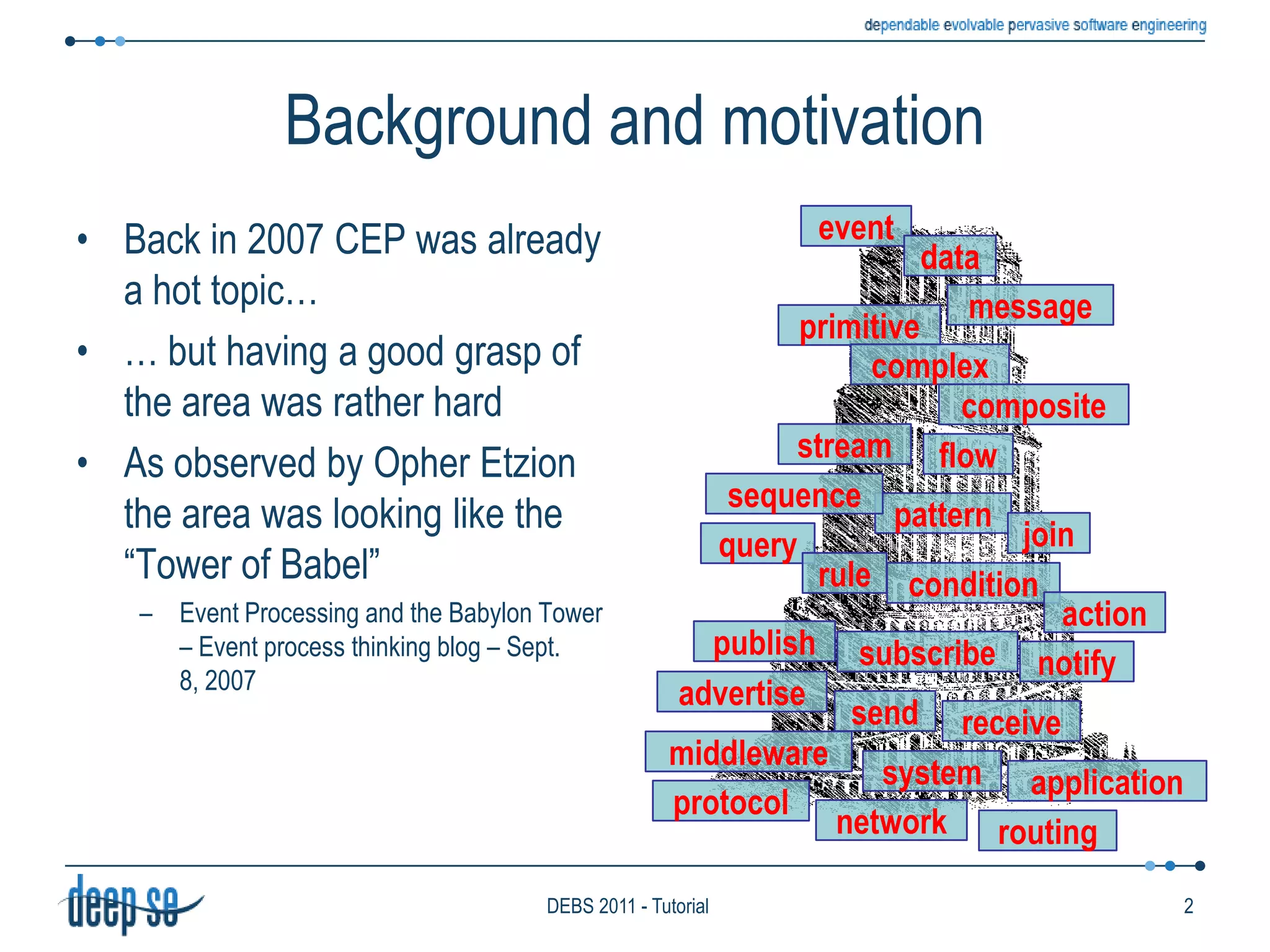
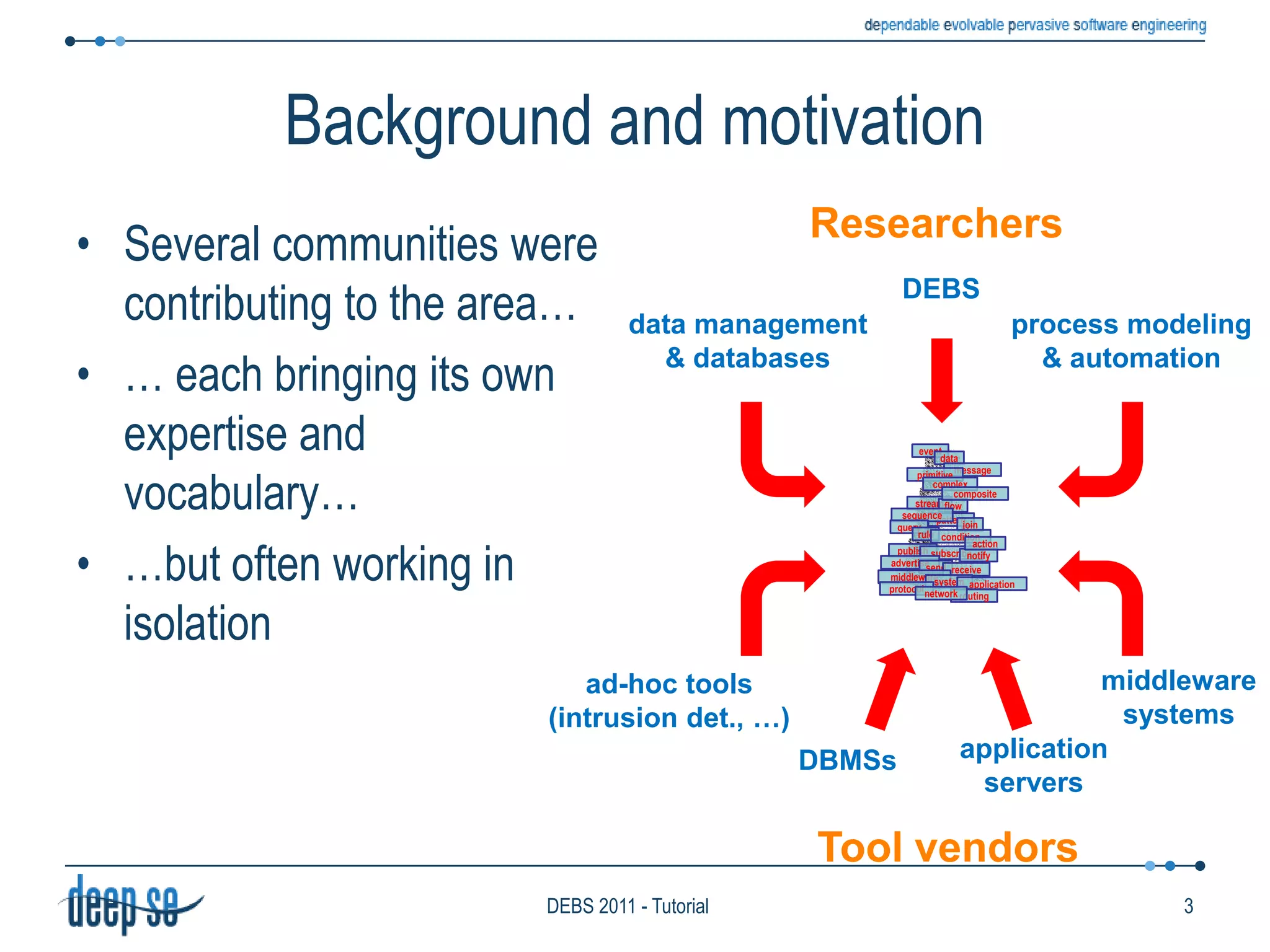
![Background and motivationThat was 2007. What about today?Things did not change muchFrom the “Event Process Thinking” blog – Sept. 2010[Which is] the relation between event processing and data stream management?They are aliases -- stream is just a collection of events, likewise, an event is just a member in a stream, and the functionality is the sameStream management is a subset of event processing -- there are different ways to do event processing, streams is one of themEvent processing is a subset of stream management -- event streams is just one type of stream, but there are voice stream, video stream, …Event processing and stream management are distinct and there is no overlapping between themAt the same time tool vendors are building tools that try to combine ¿ juxtapose ? different approaches4DEBS 2011 - Tutorial](https://image.slidesharecdn.com/tutorialdebs2011export-110712090253-phpapp01/75/Processing-Flows-of-Information-DEBS-2011-4-2048.jpg)
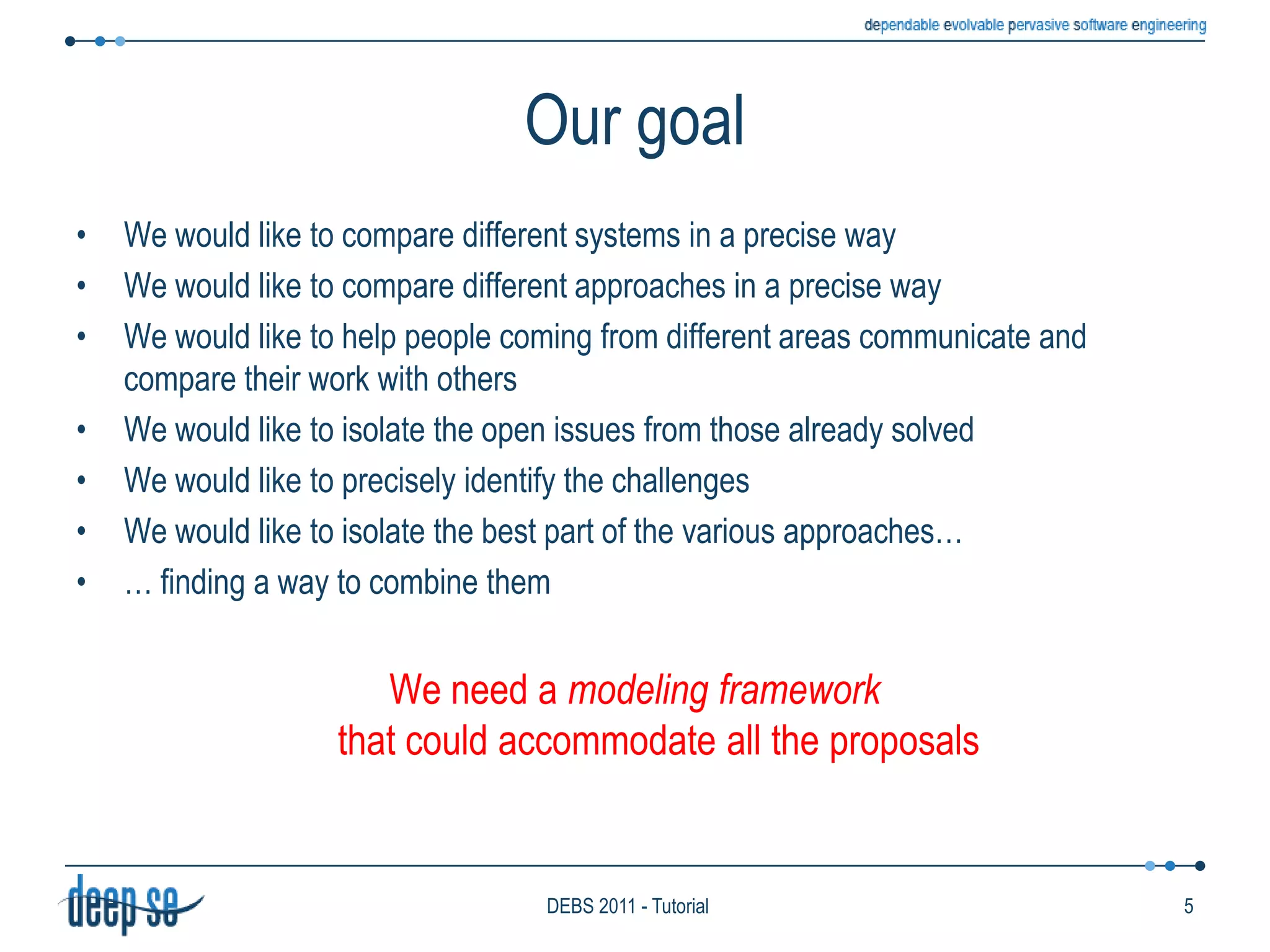
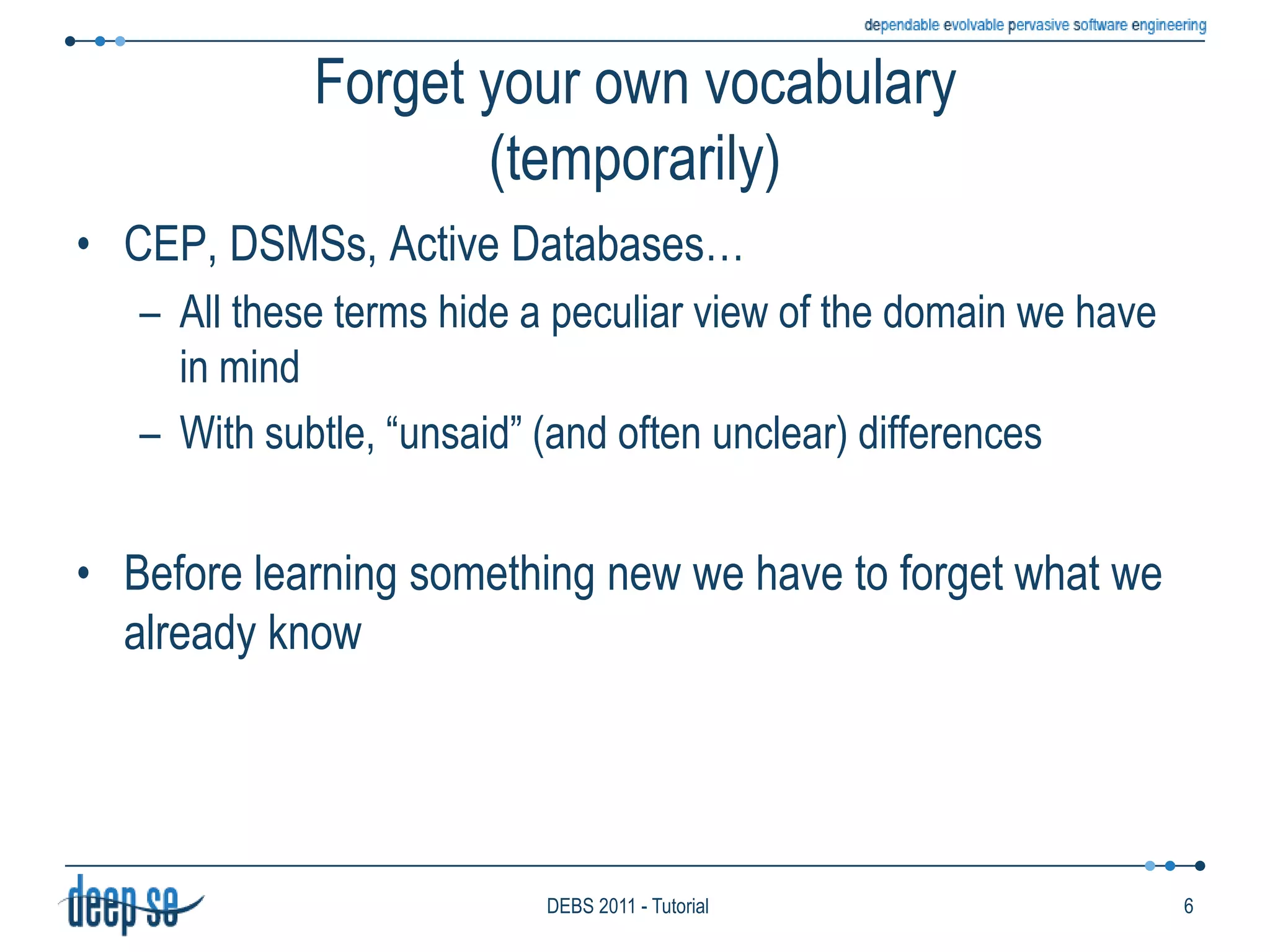
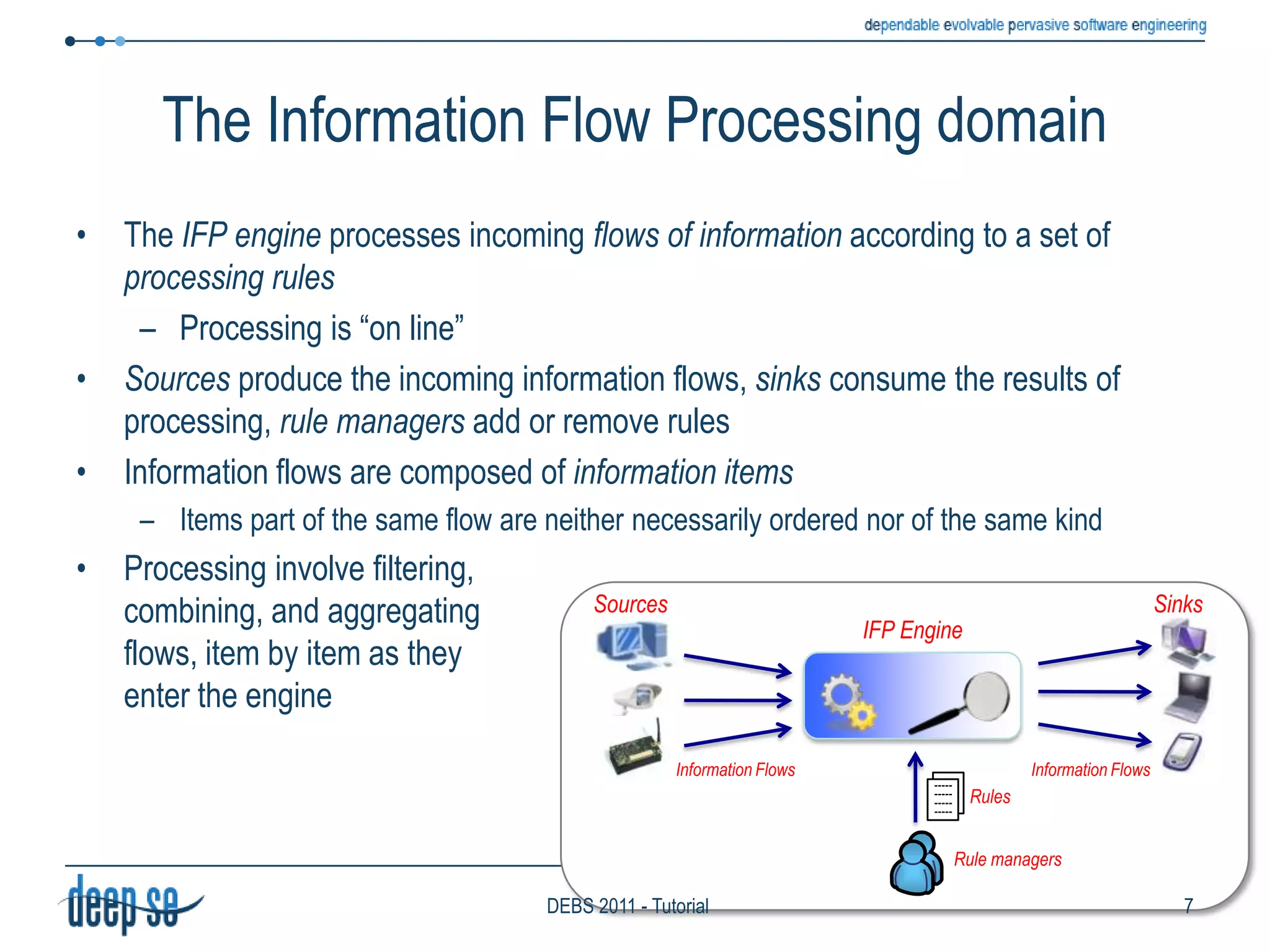
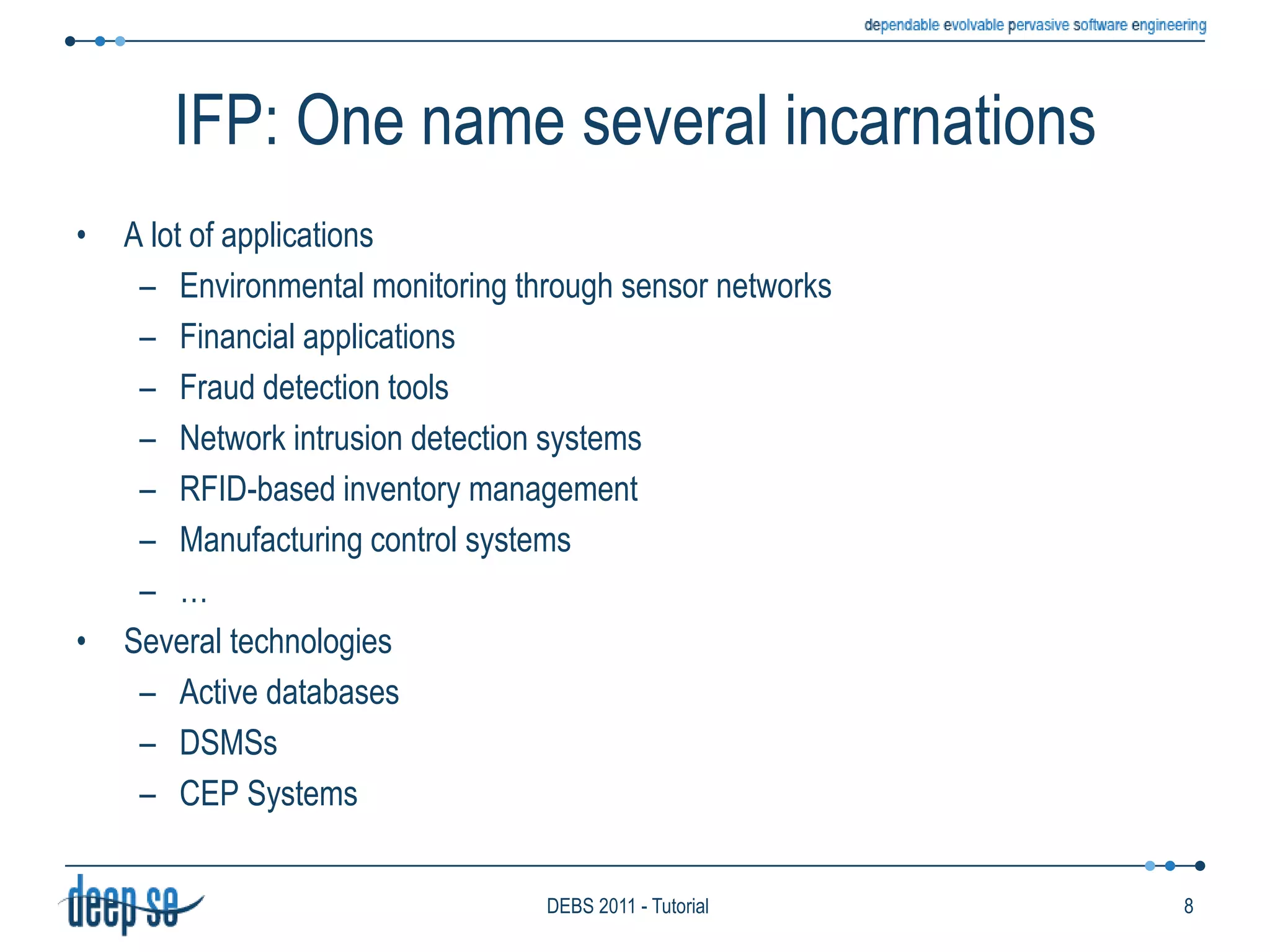
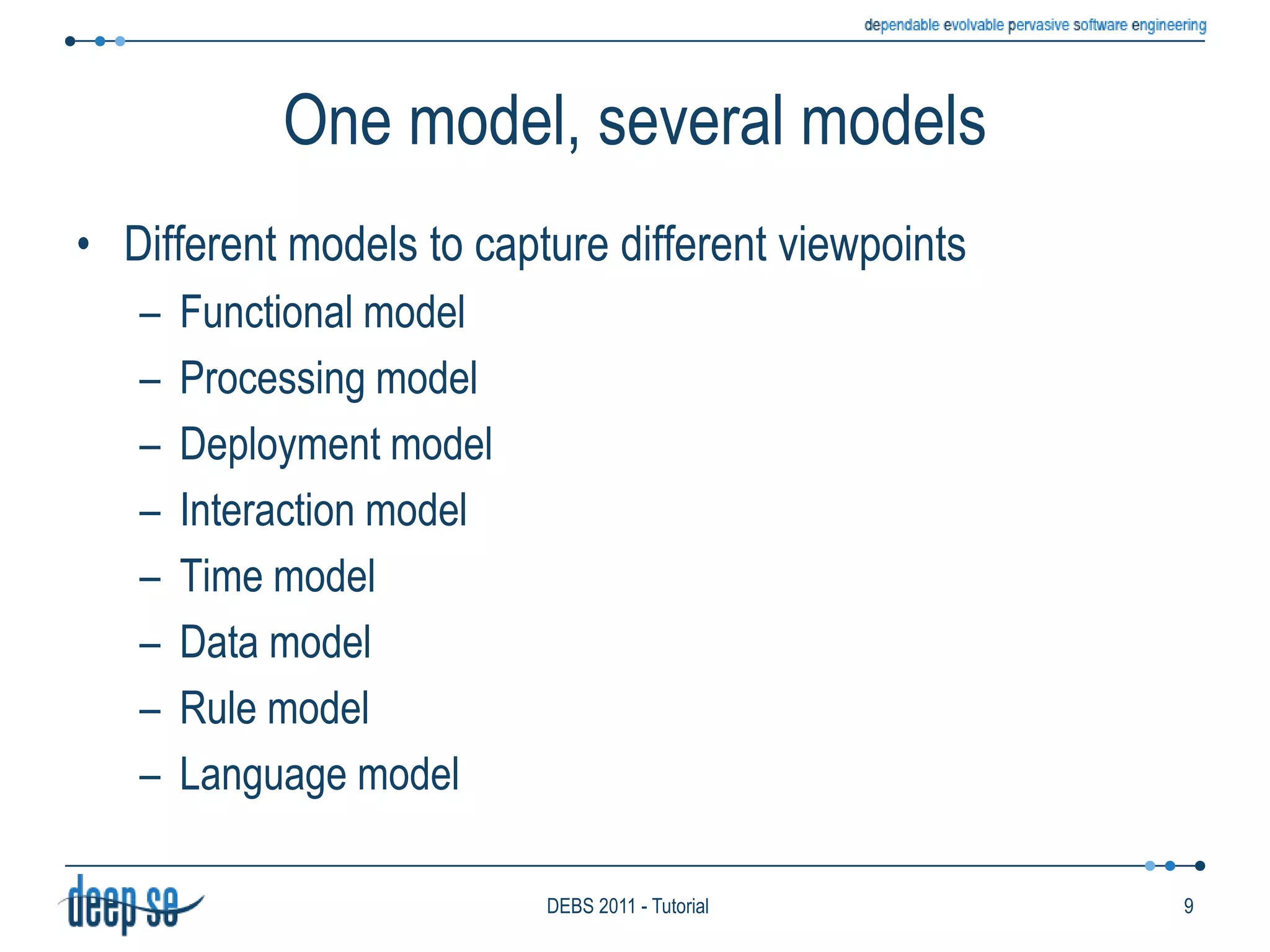
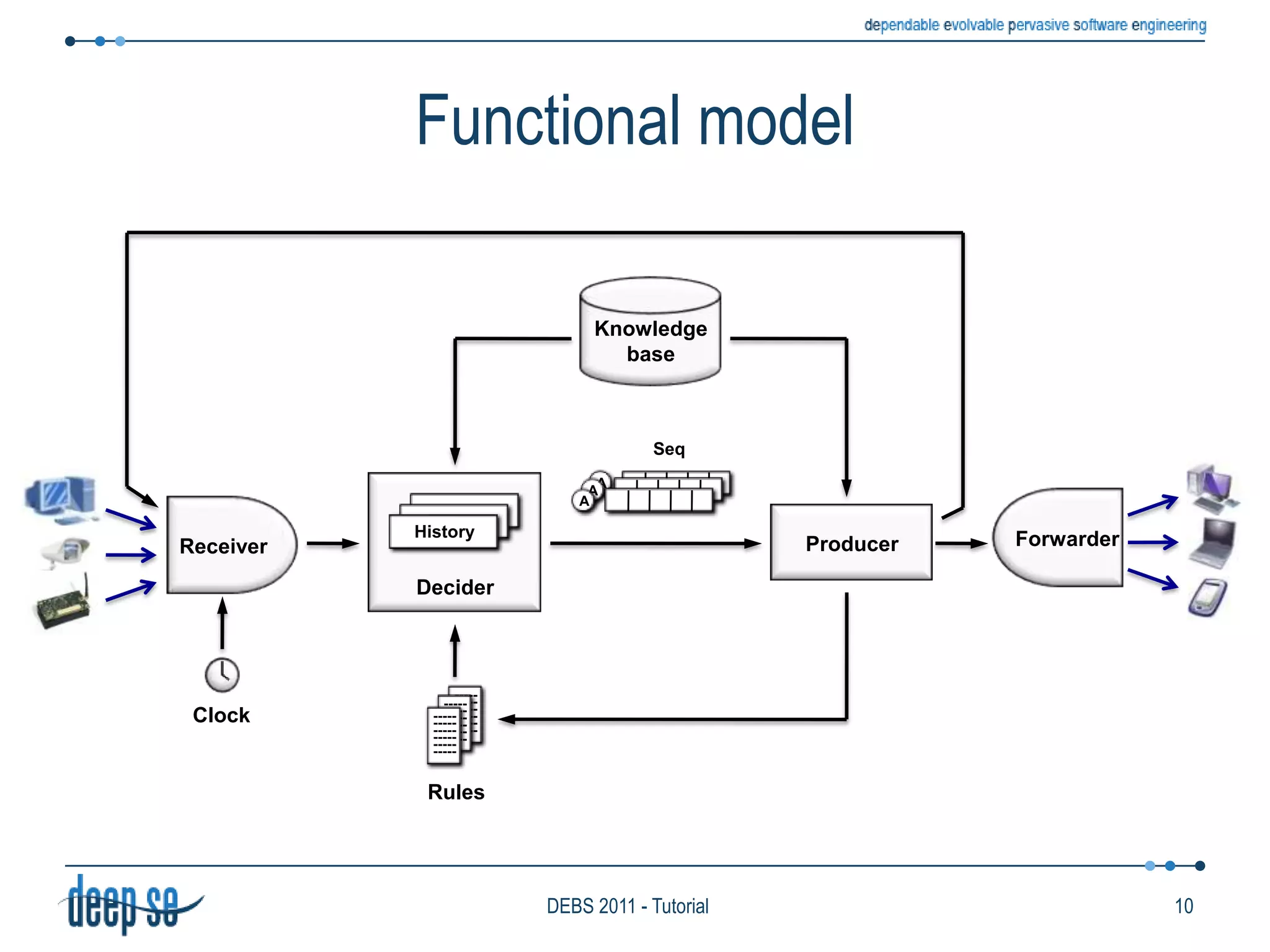
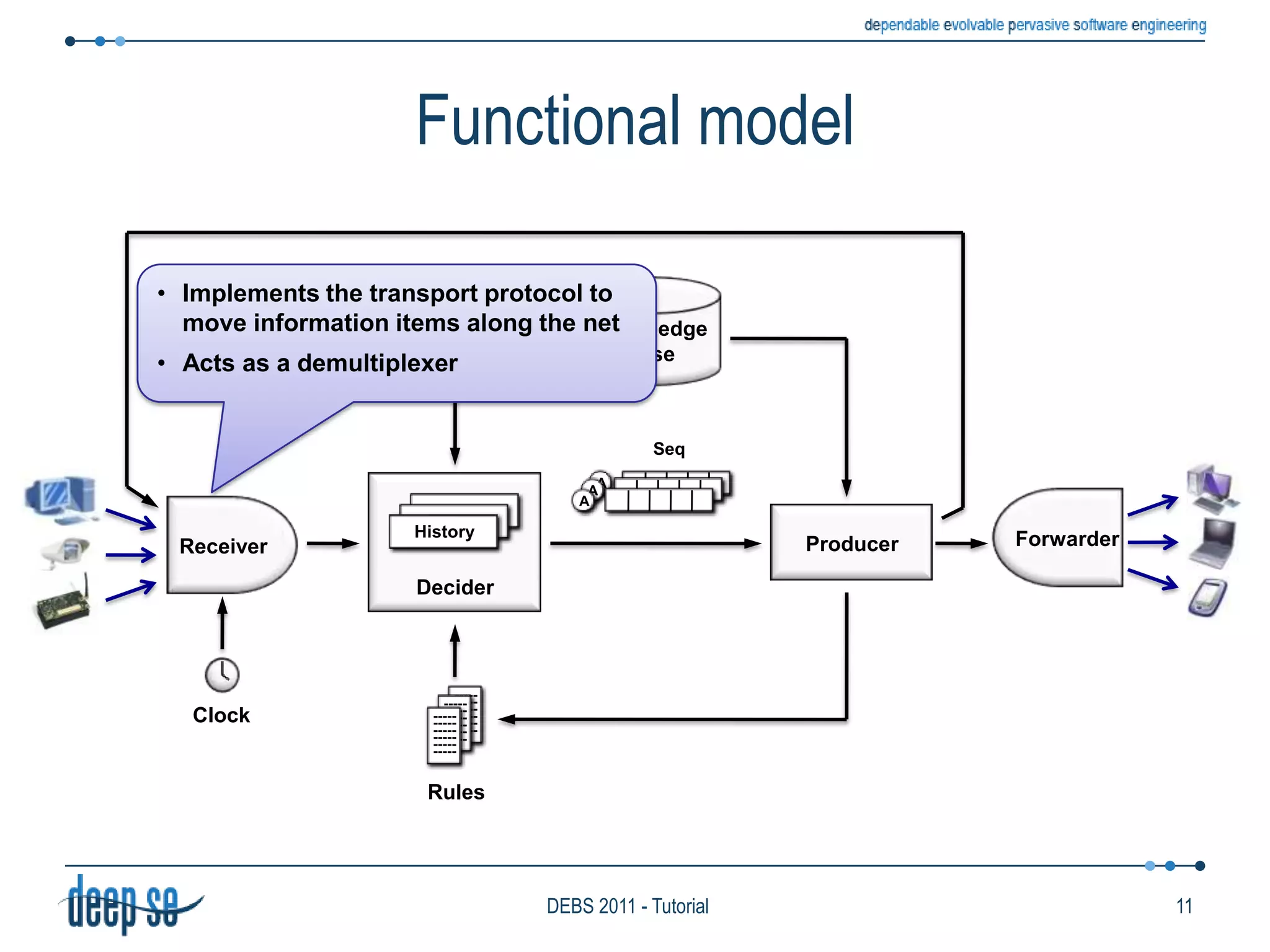
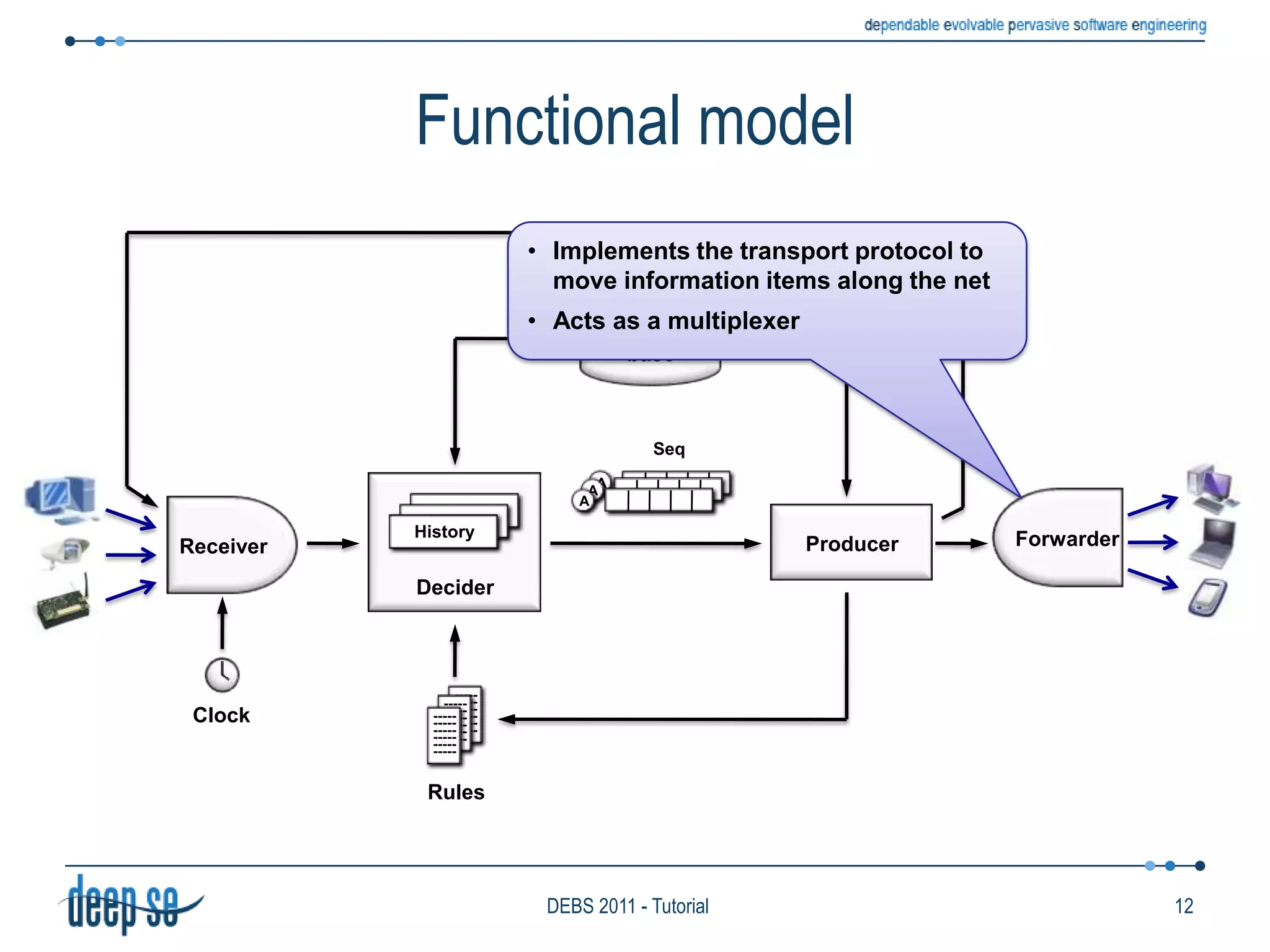
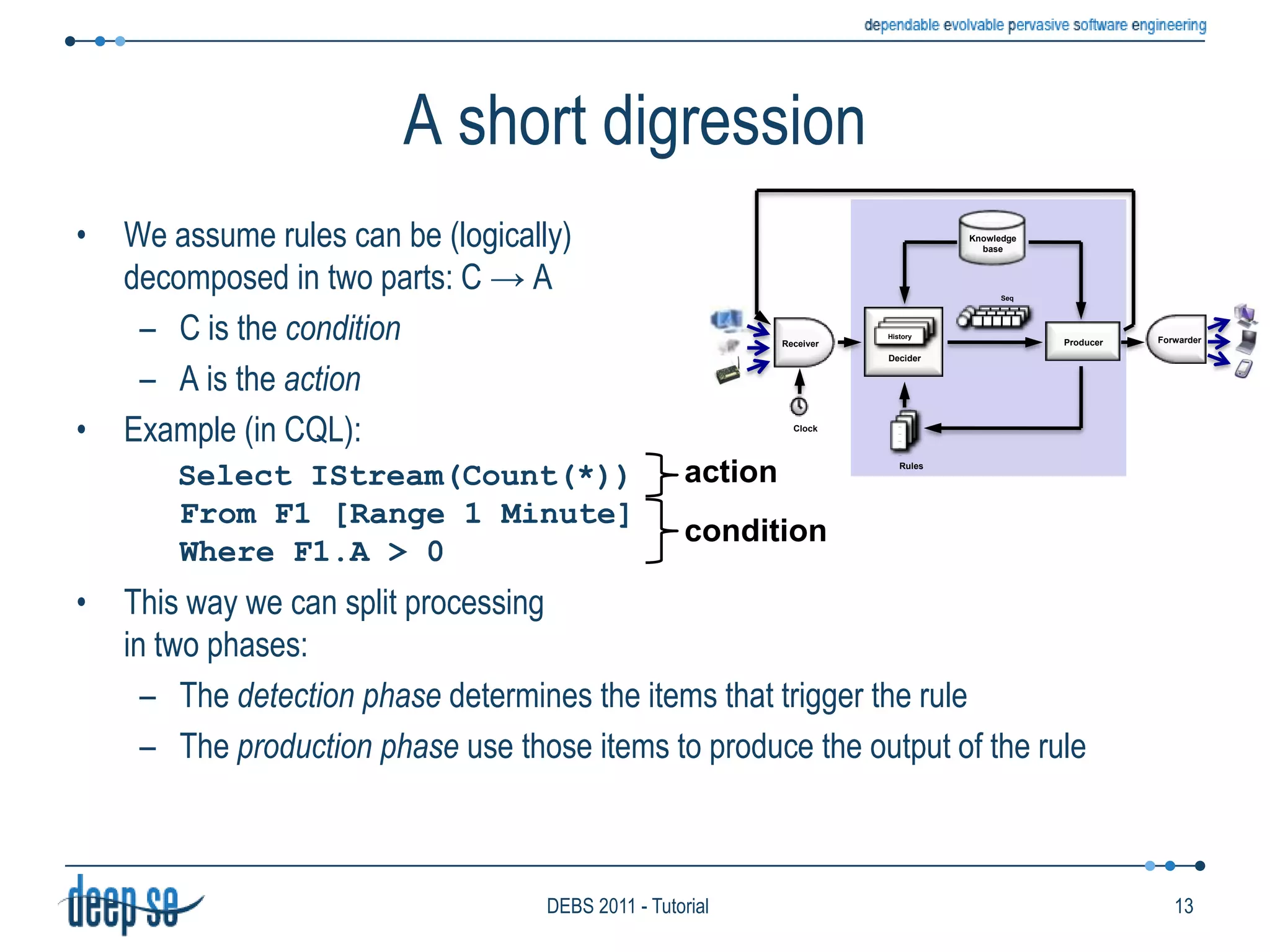

![A short digressionWe assume rules can be (logically)decomposed in two parts: C -> AC is the conditionA is the actionExample (in CQL): Select IStream(Count(*))From F1 [Range 1 Minute]Where F1.A > 0This way we can split processingin two phases:The detection phase determines the items that trigger the ruleThe production phase use those items to produce the output of the ruleKnowledgebaseAAAHistoryHistorySeqHistoryactionDeciderForwarderReceiverconditionProducer------------------------------------------------------------------------------------------ClockRules13DEBS 2011 - Tutorial](https://image.slidesharecdn.com/tutorialdebs2011export-110712090253-phpapp01/75/Processing-Flows-of-Information-DEBS-2011-15-2048.jpg)
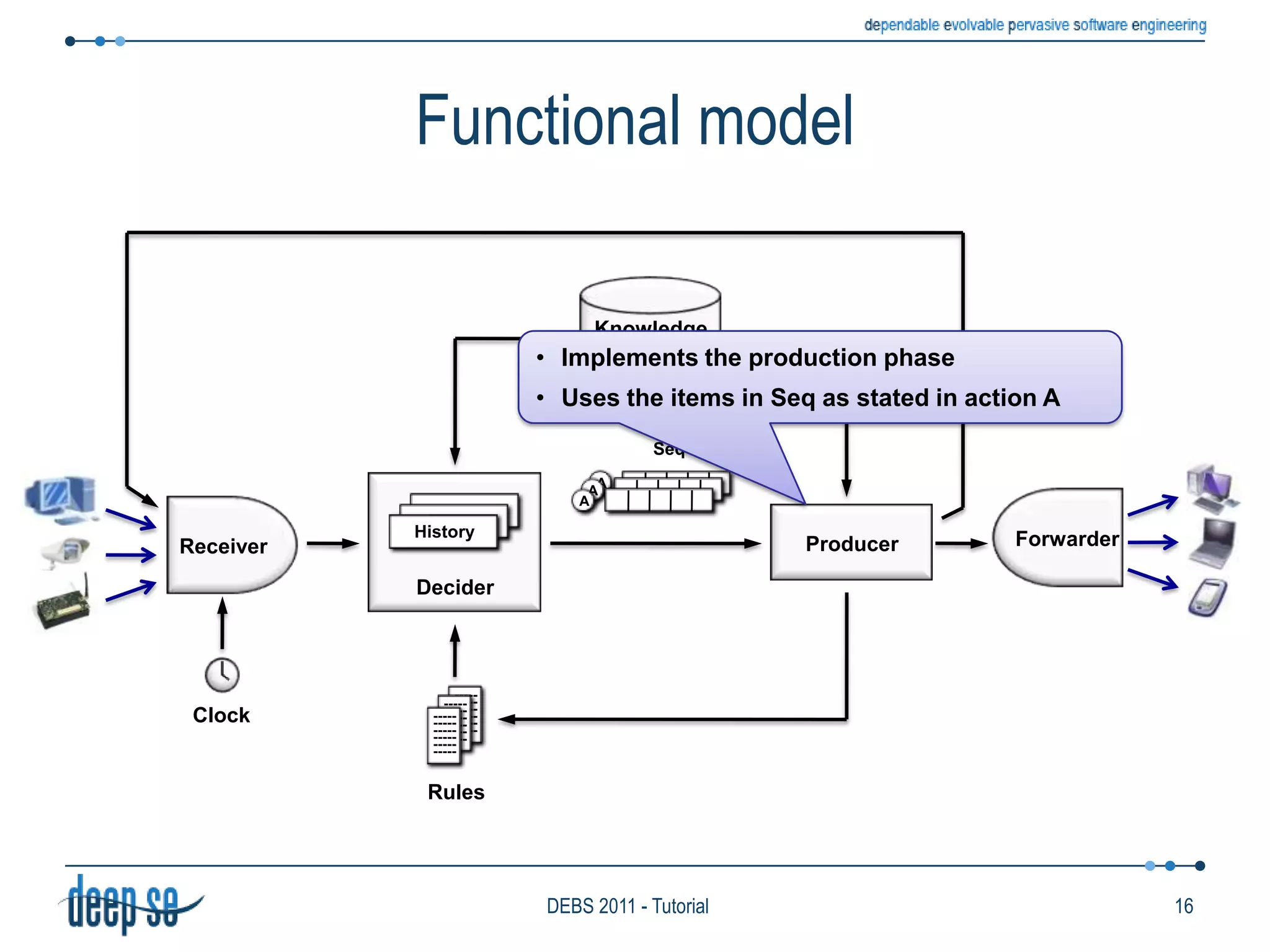
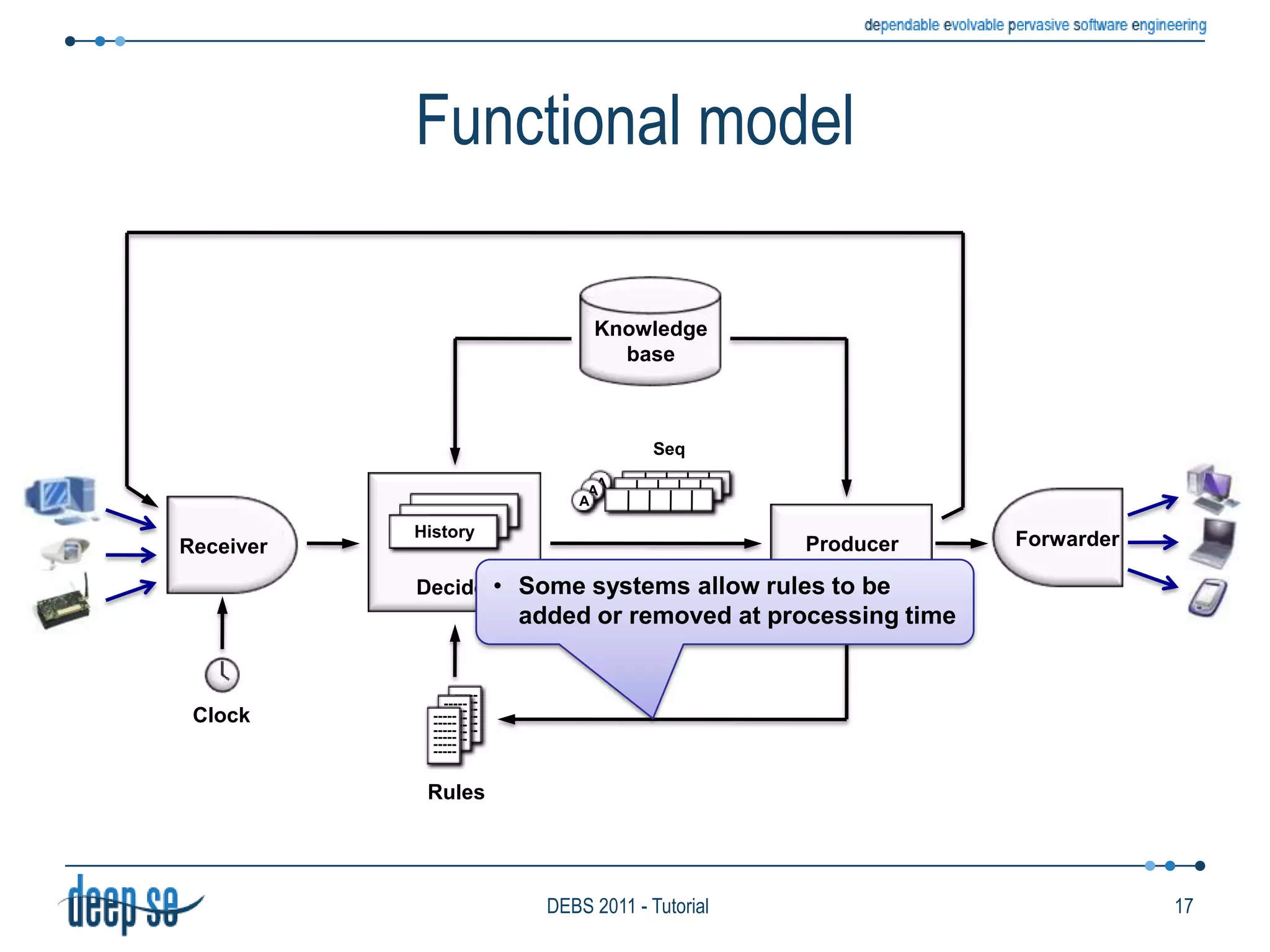

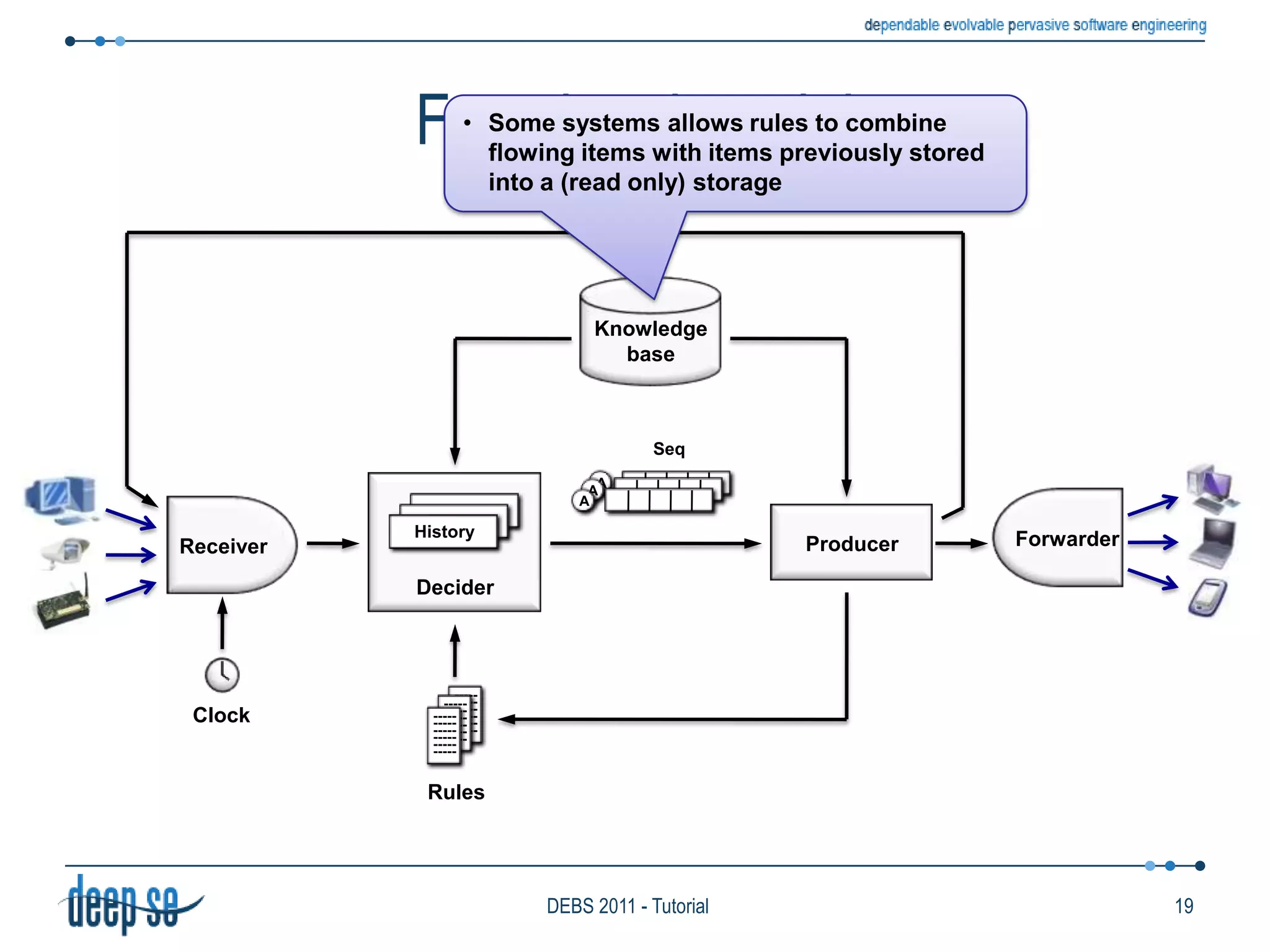
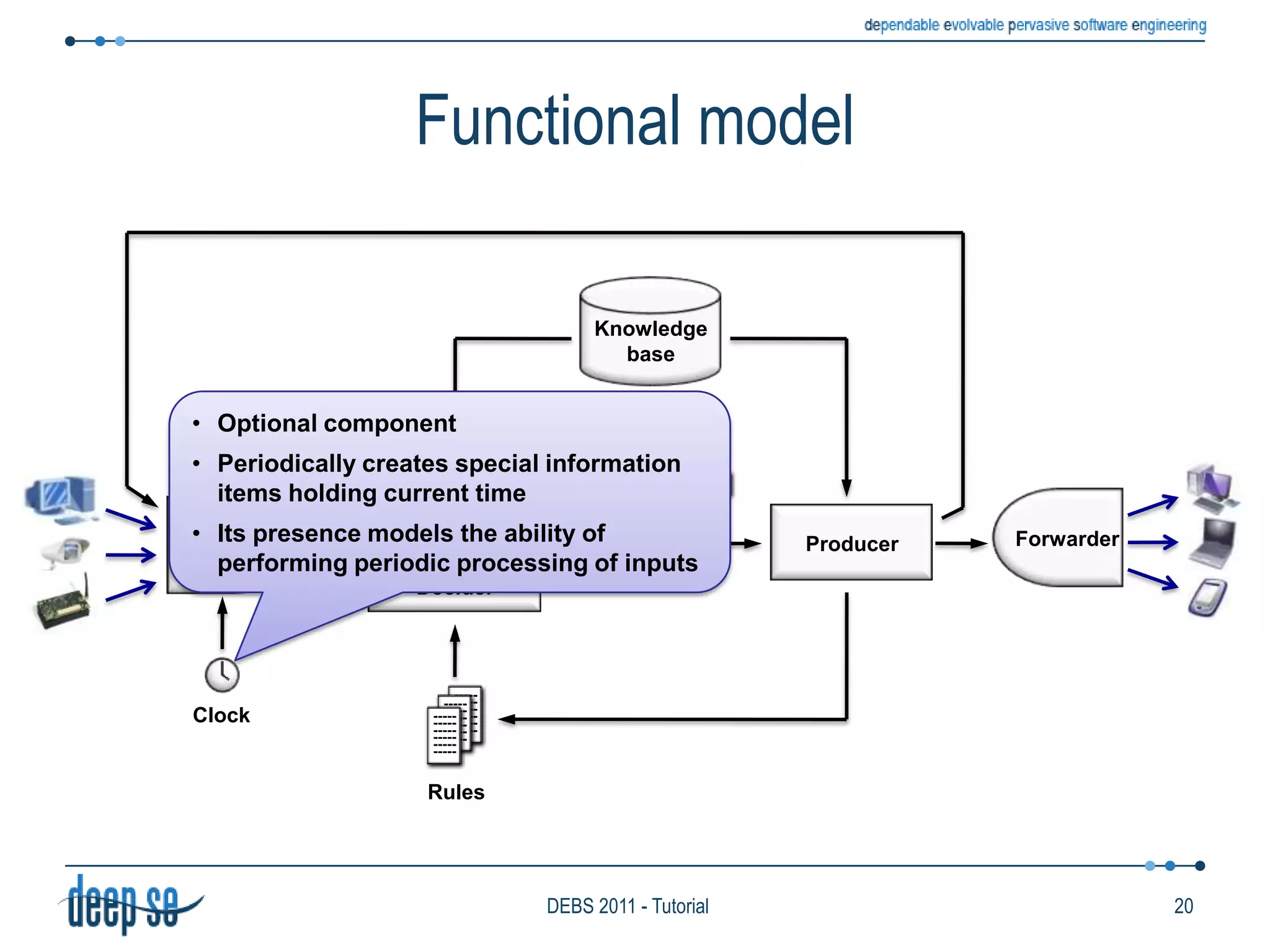
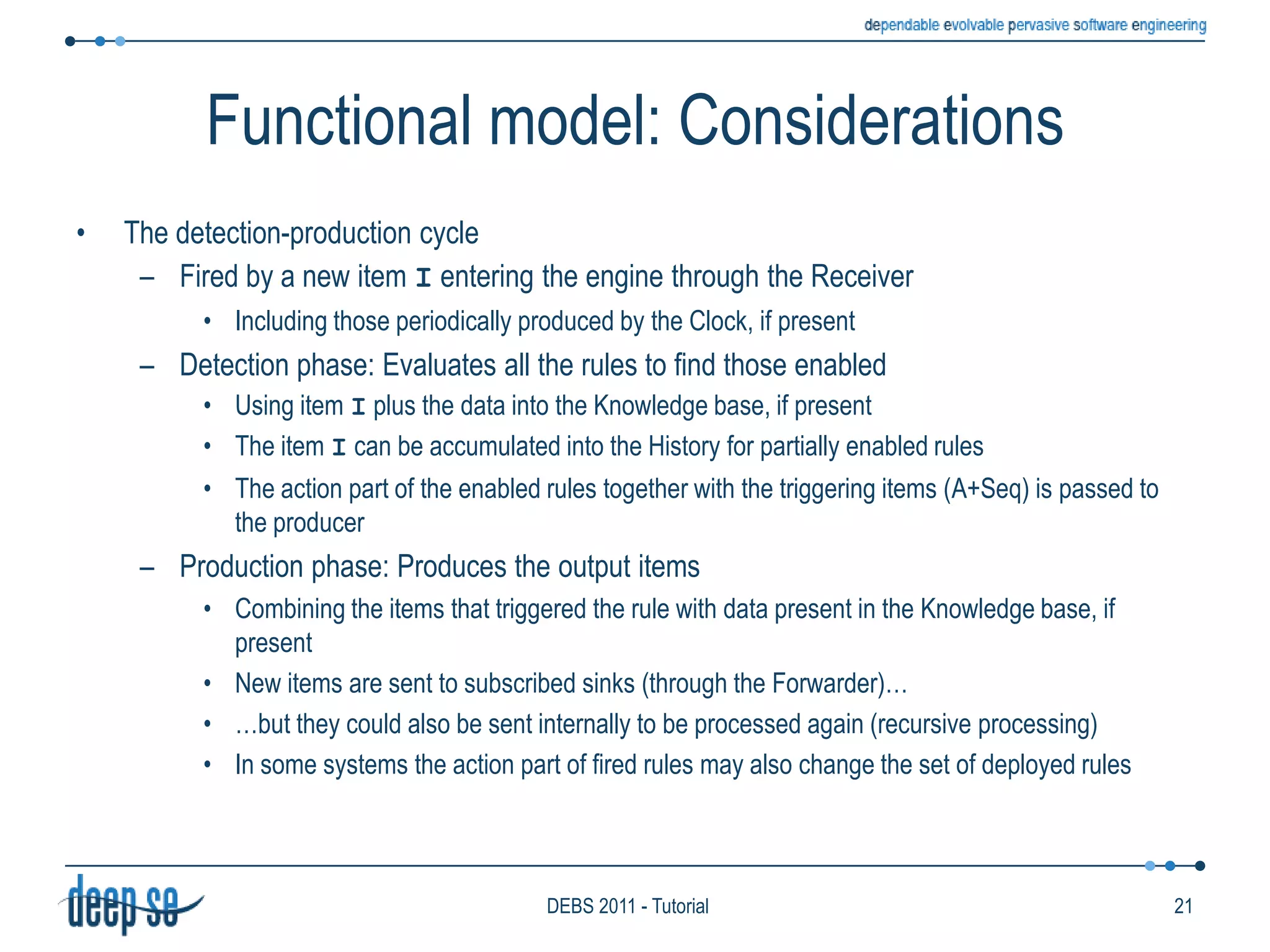
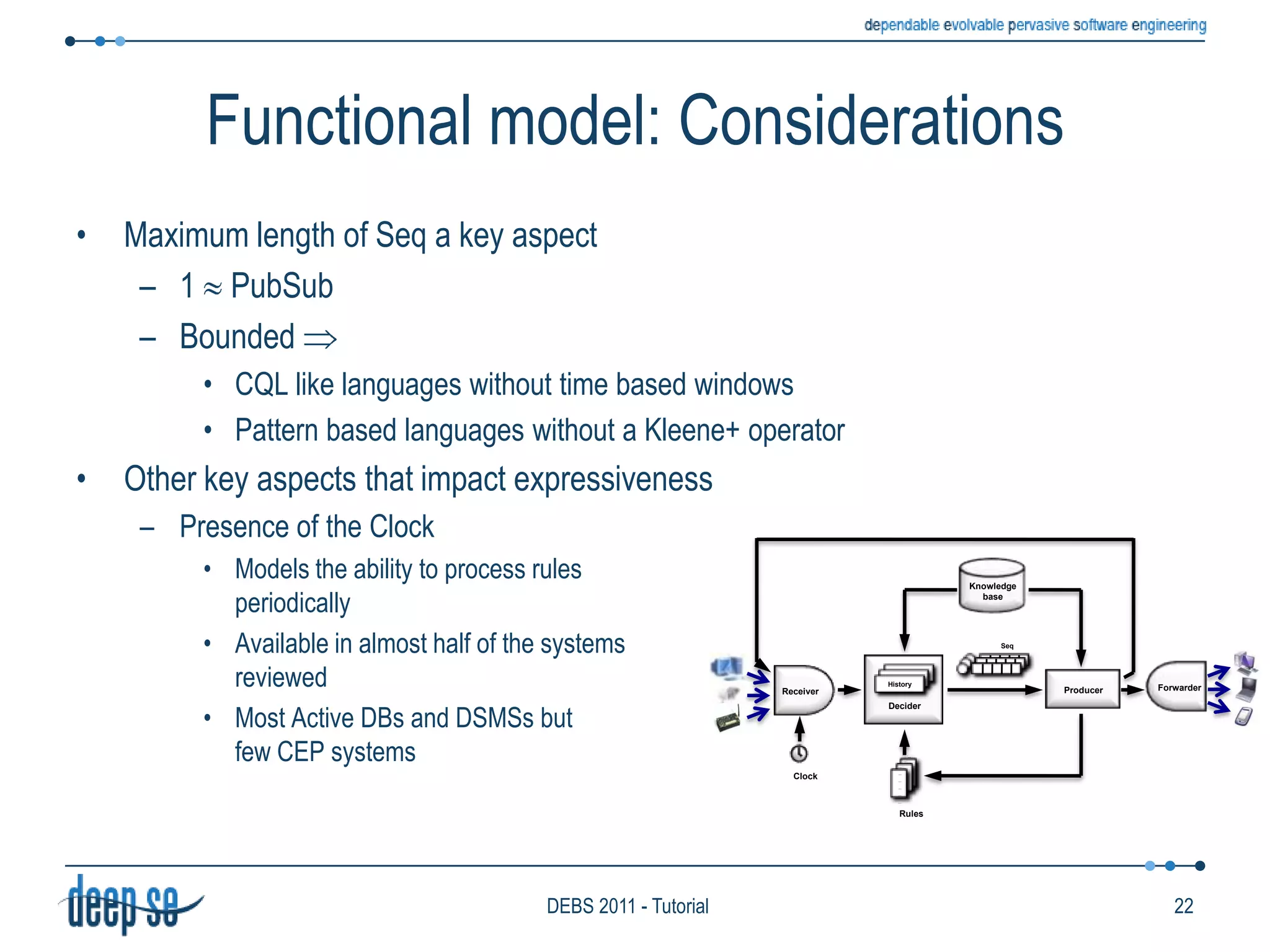
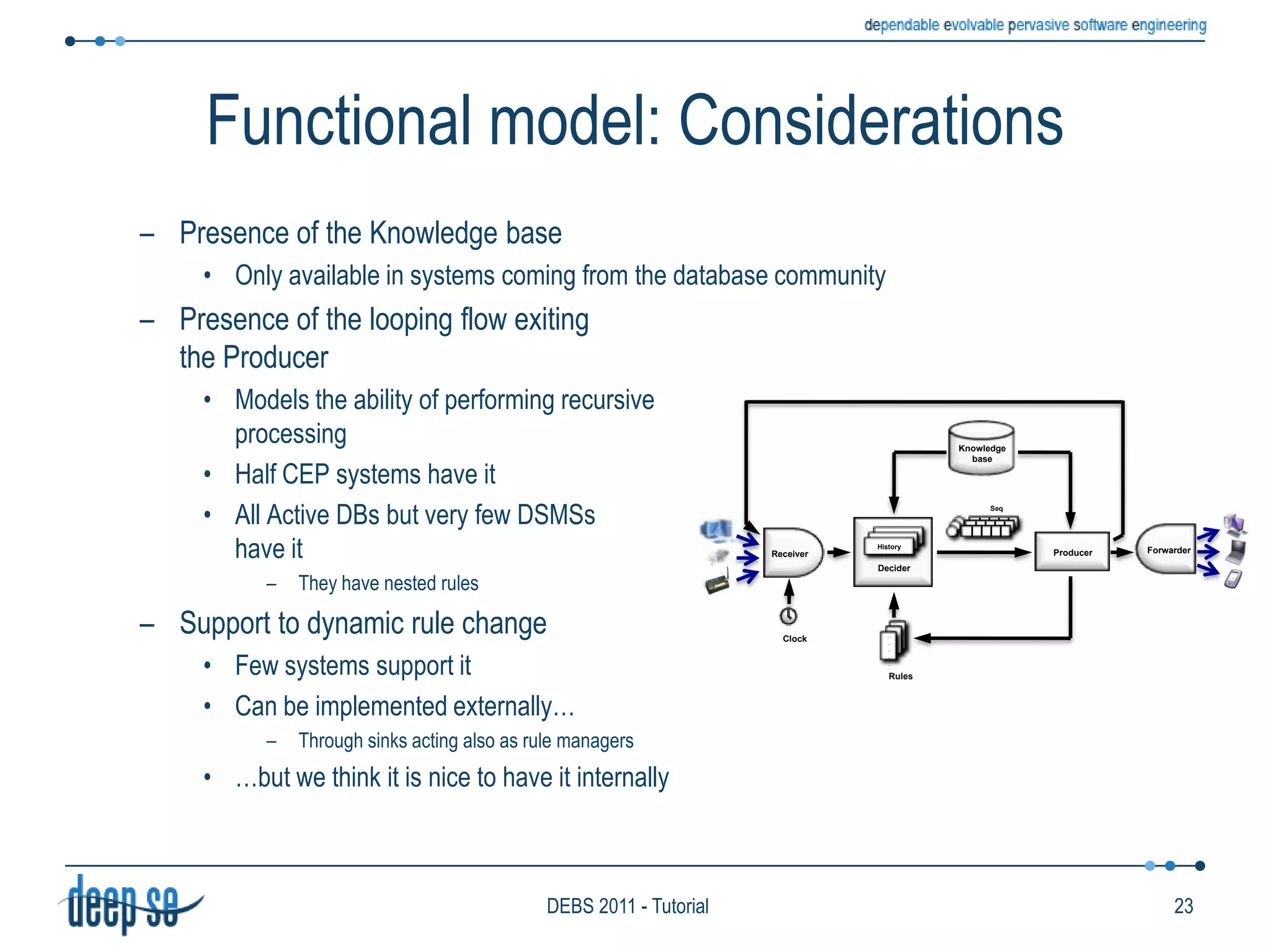
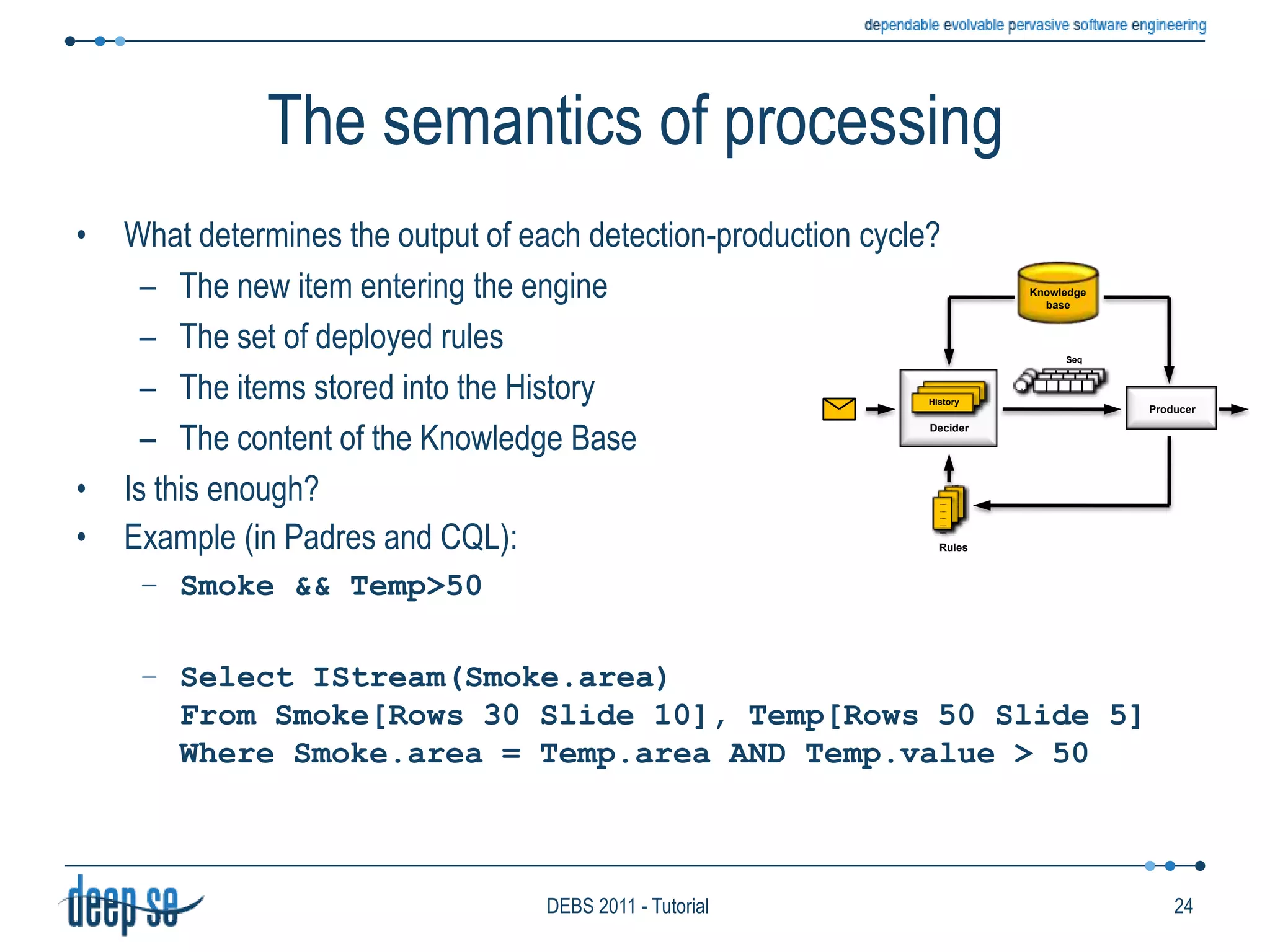
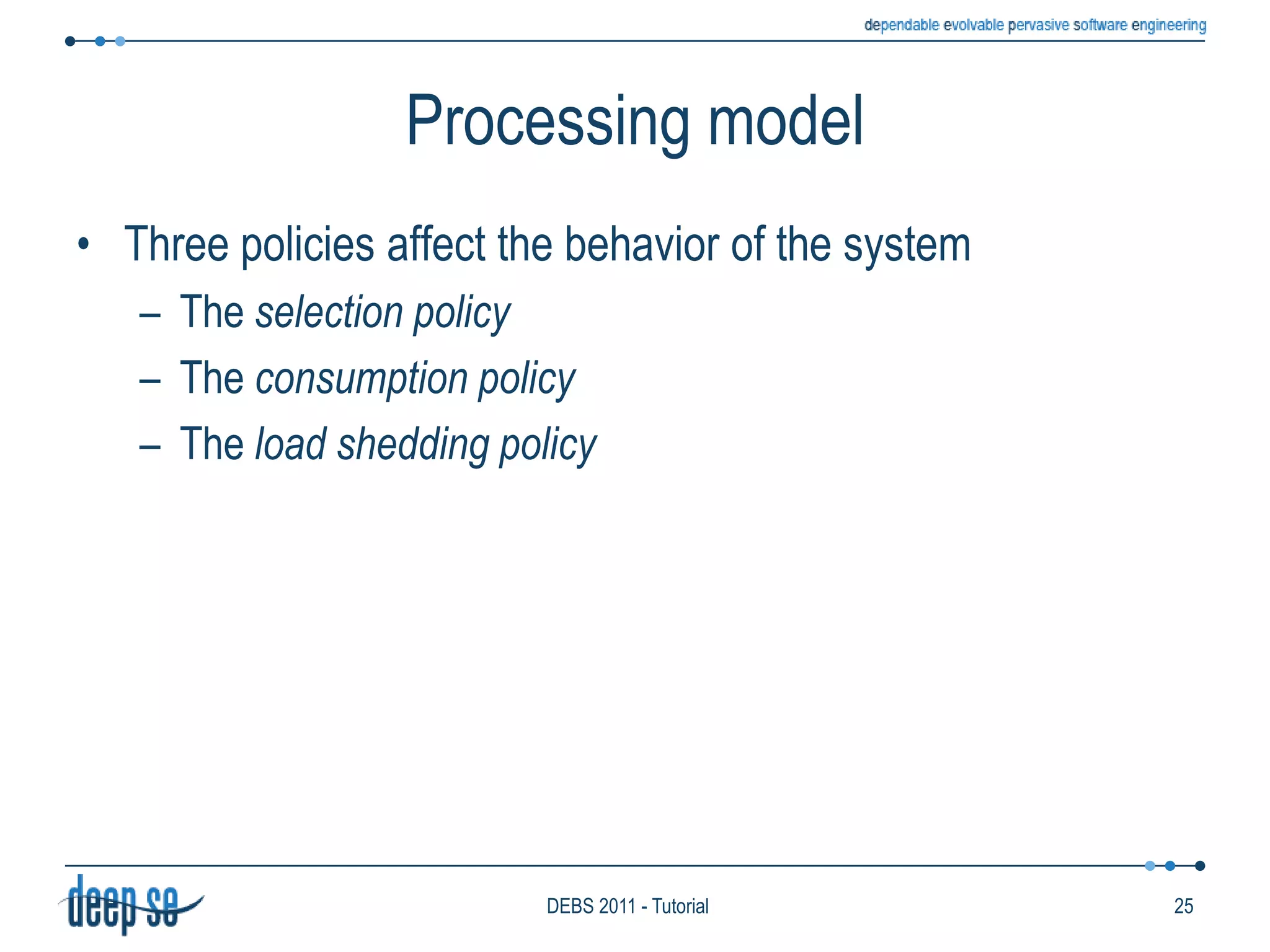
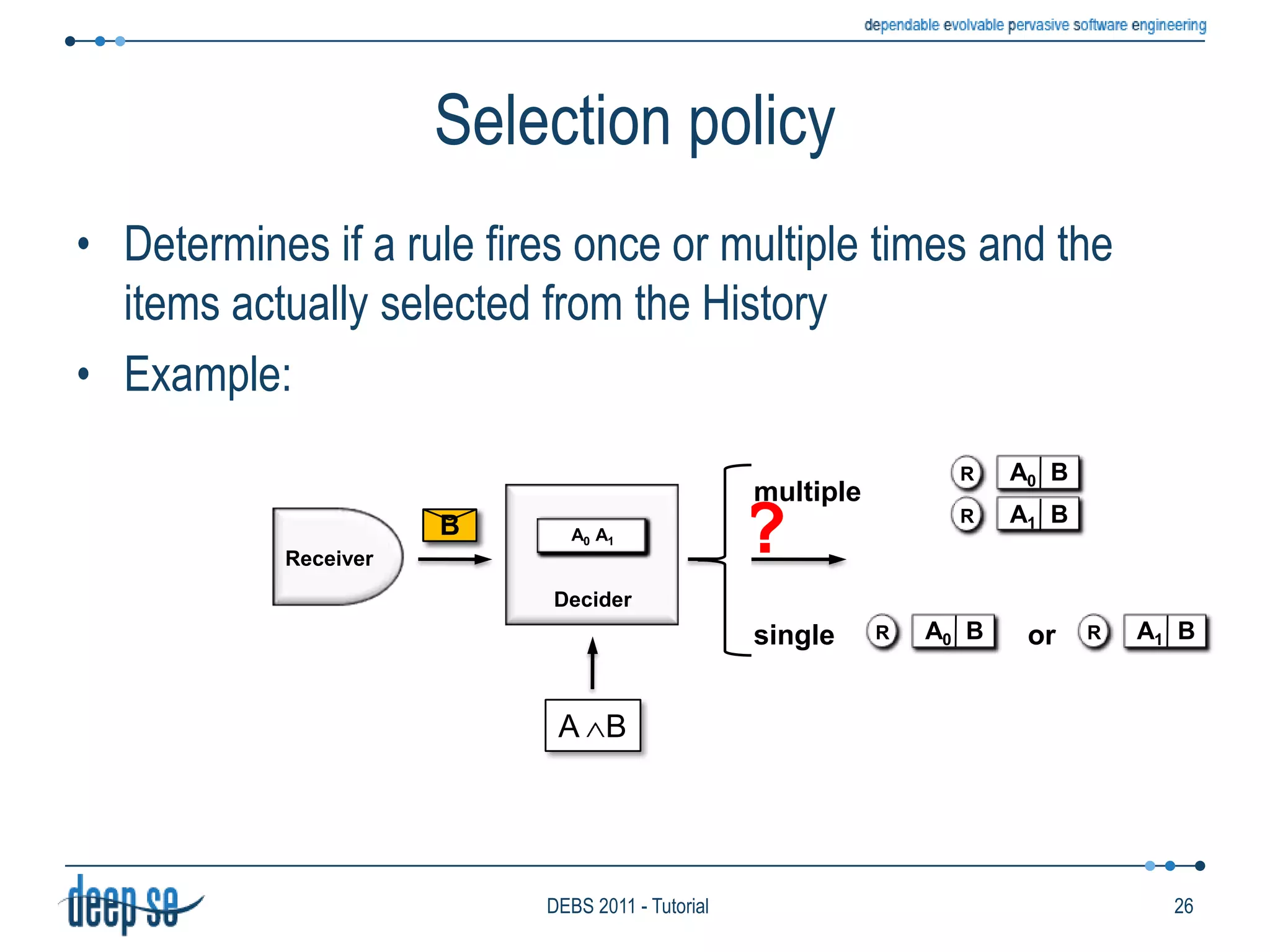

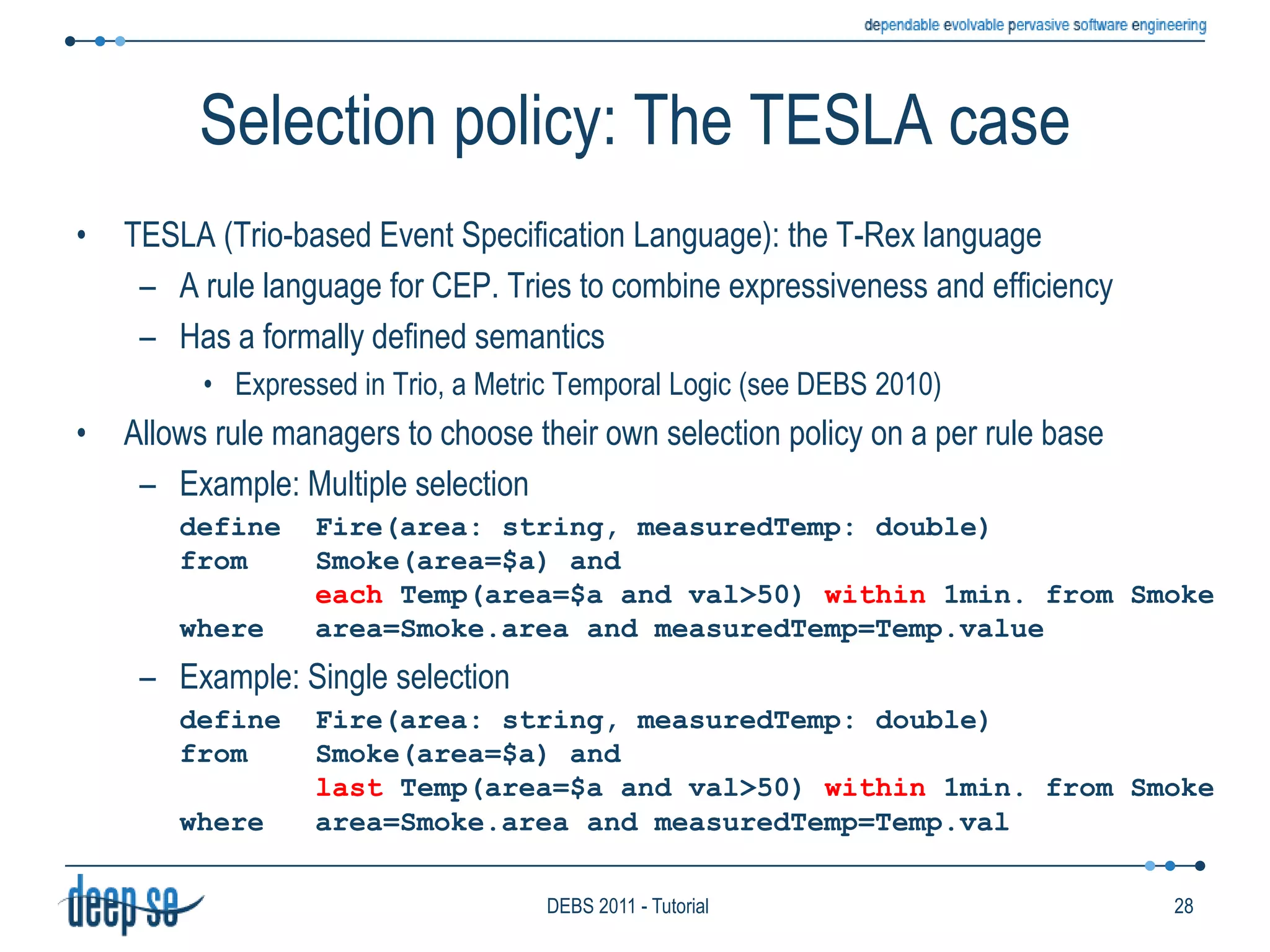

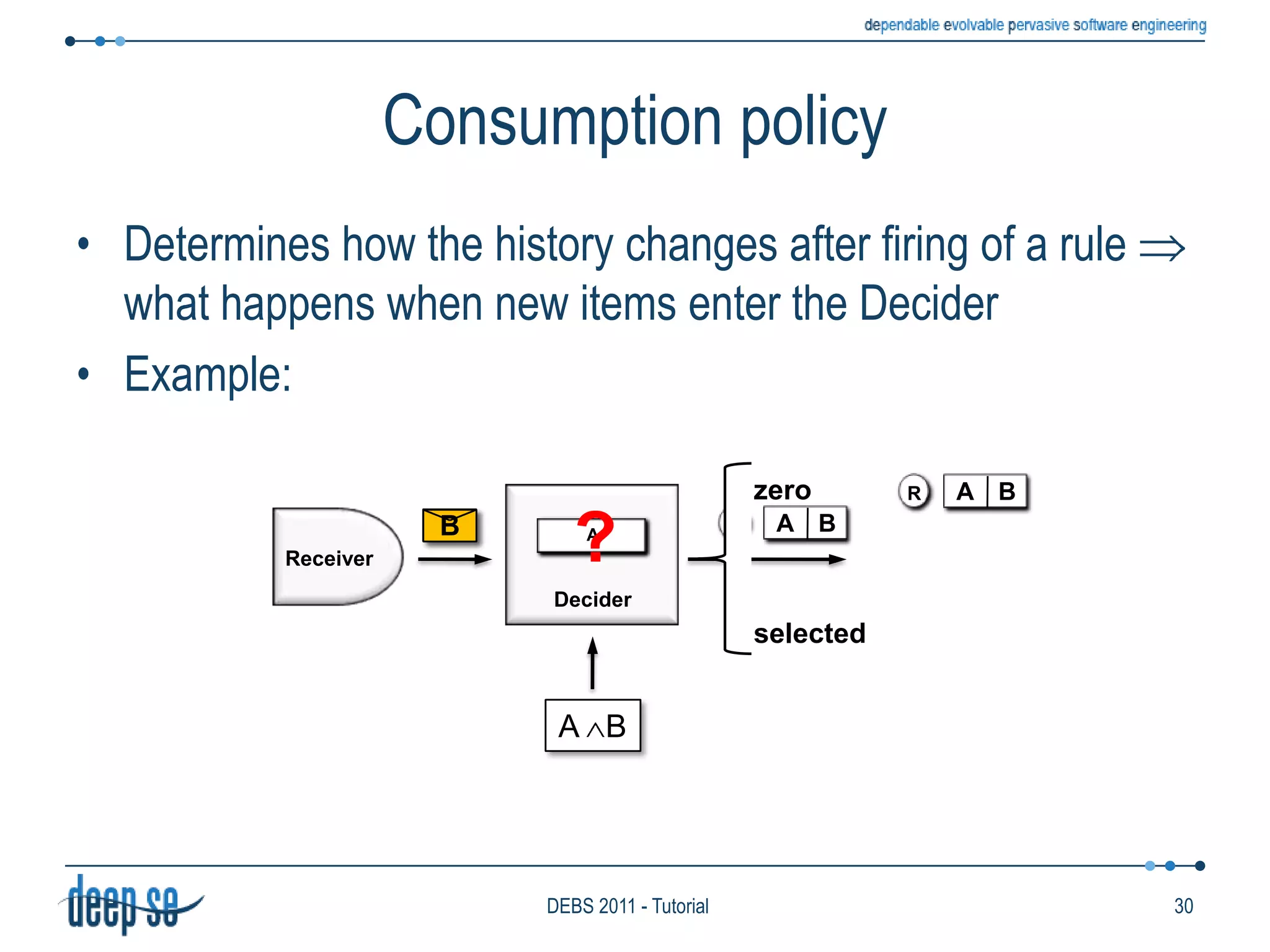
![The semantics of processingWhat determines the output of each detection-production cycle?The new item entering the engineThe set of deployed rulesThe items stored into the HistoryThe content of the Knowledge BaseIs this enough?Example (in Padres and CQL):Smoke && Temp>50 Select IStream(Smoke.area)From Smoke[Rows 30 Slide 10], Temp[Rows 50 Slide 5]Where Smoke.area = Temp.area AND Temp.value > 50KnowledgebaseAAAHistoryHistoryHistoryHistoryHistoryHistoryRulesKnowledgebaseSeqDecider------------------------------------------------------------Producer------------------------------------------------------------------------------------------------------------------------24DEBS 2011 - Tutorial](https://image.slidesharecdn.com/tutorialdebs2011export-110712090253-phpapp01/75/Processing-Flows-of-Information-DEBS-2011-31-2048.jpg)
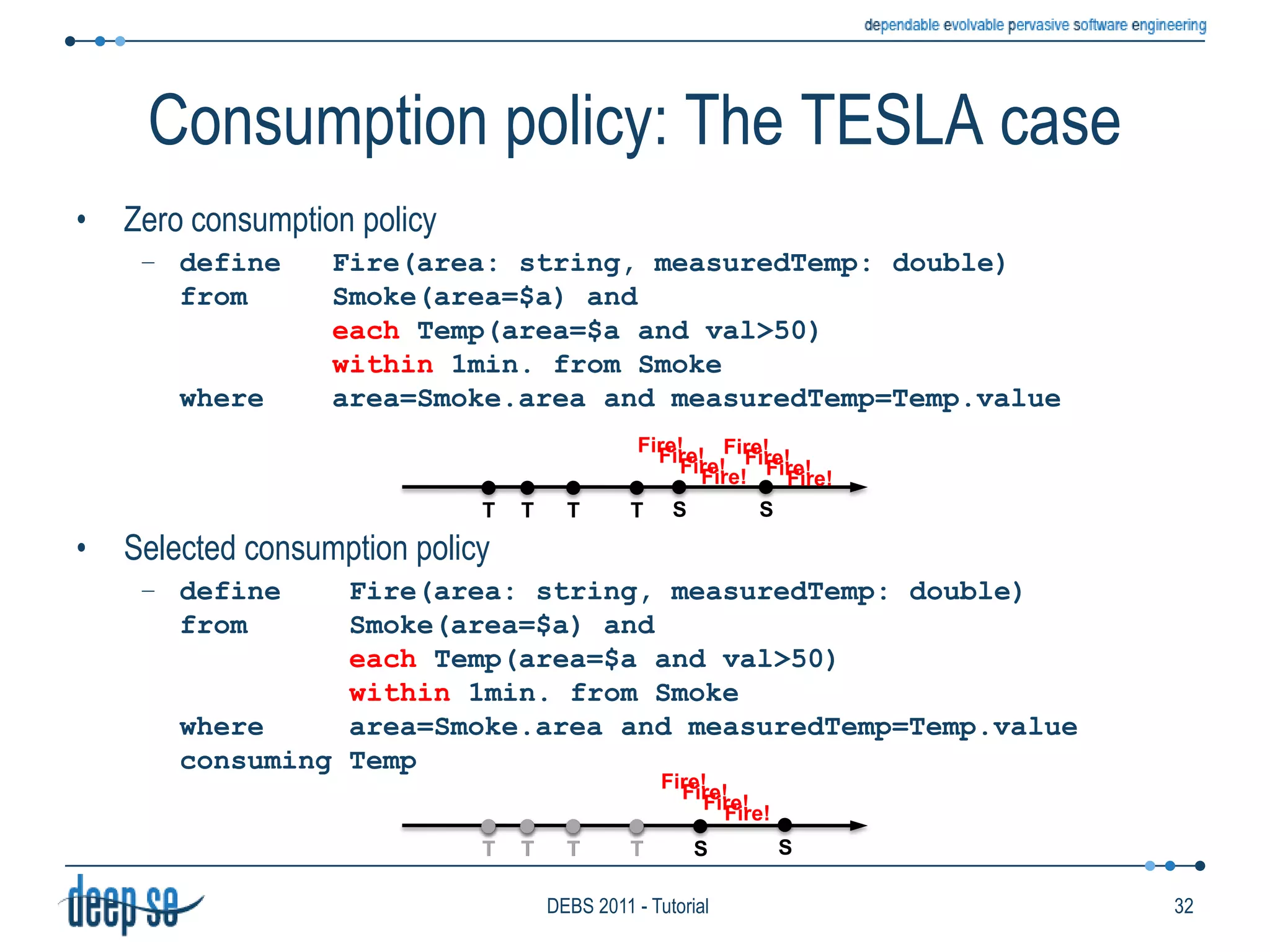
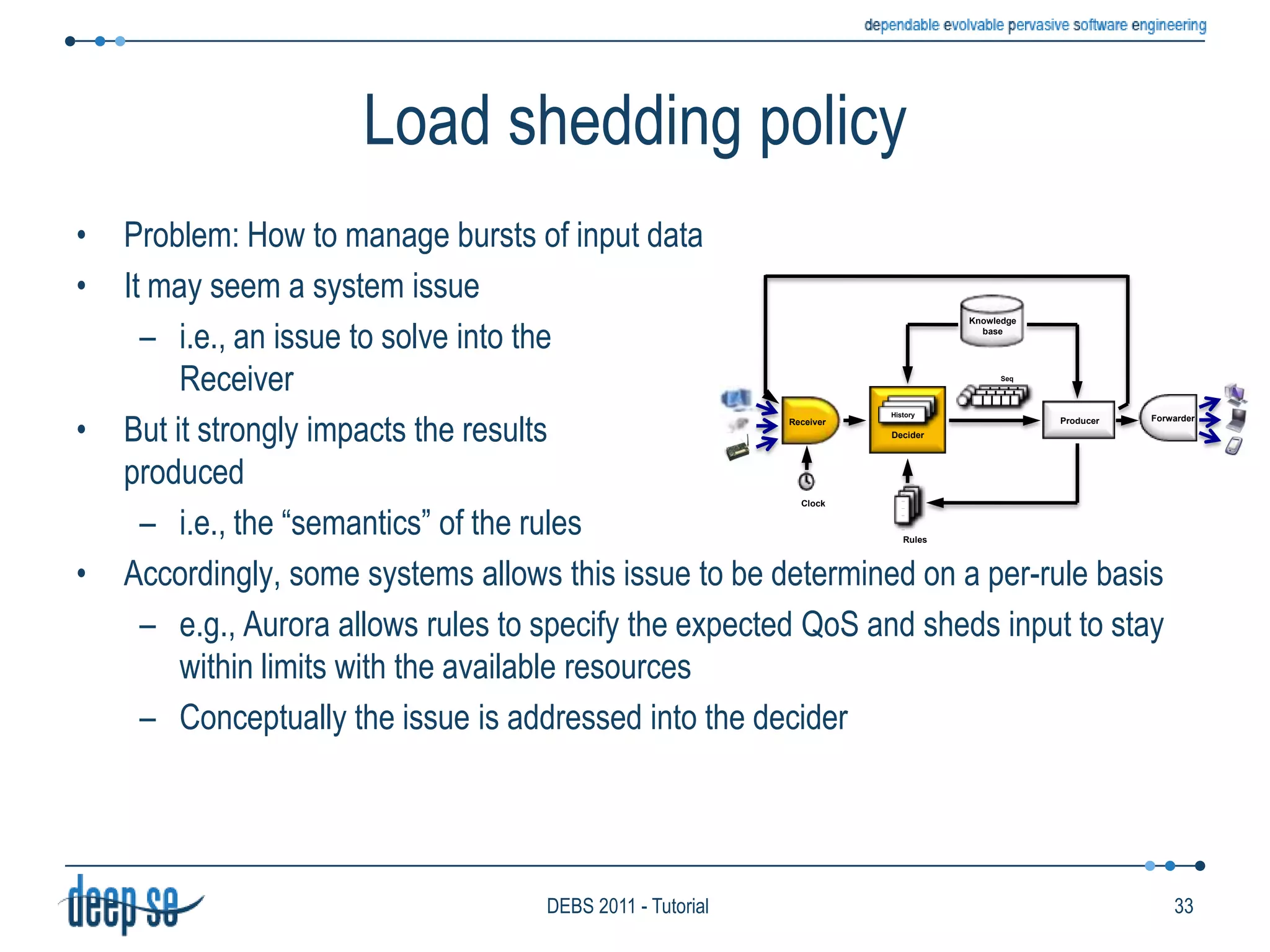
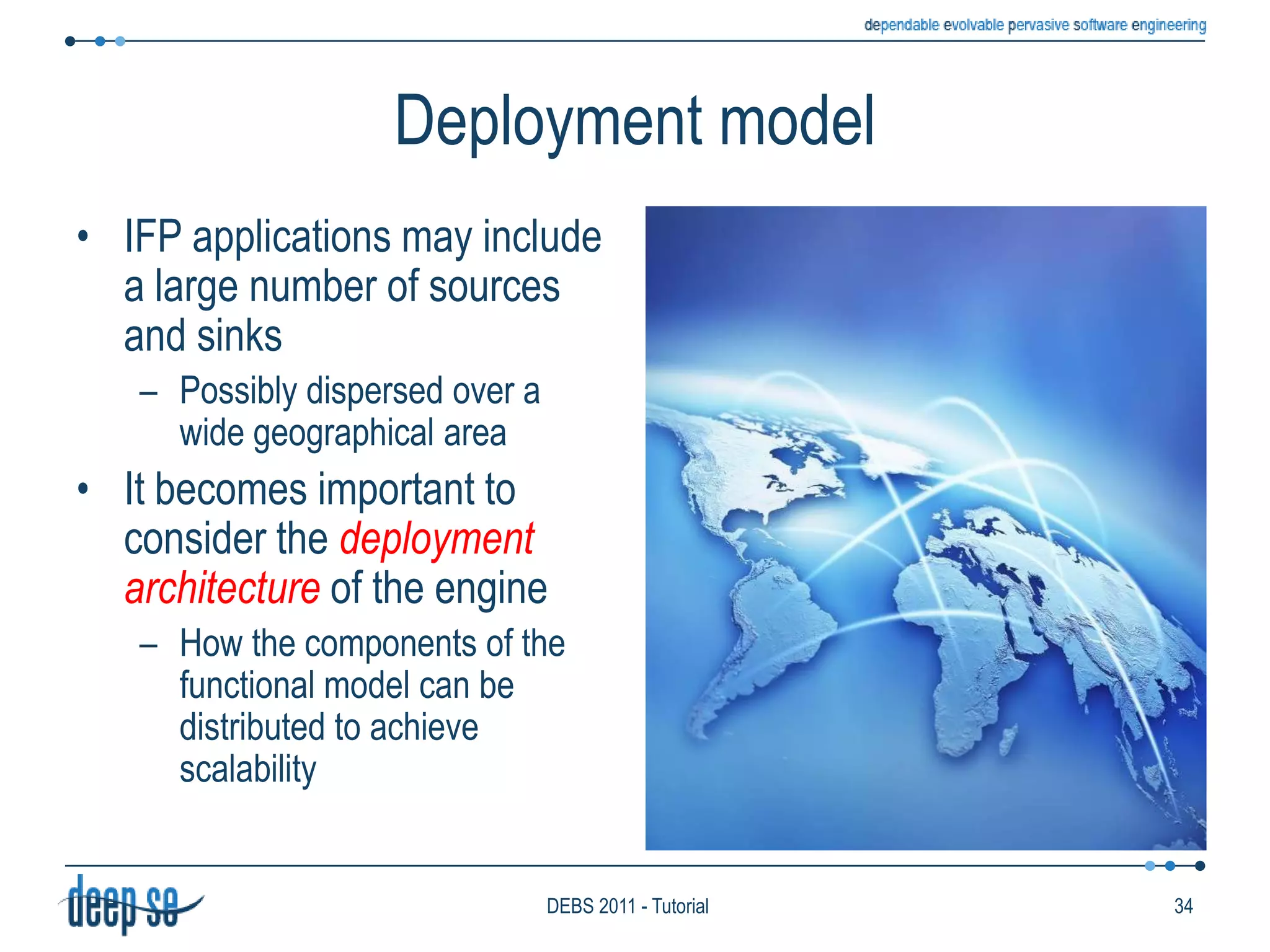
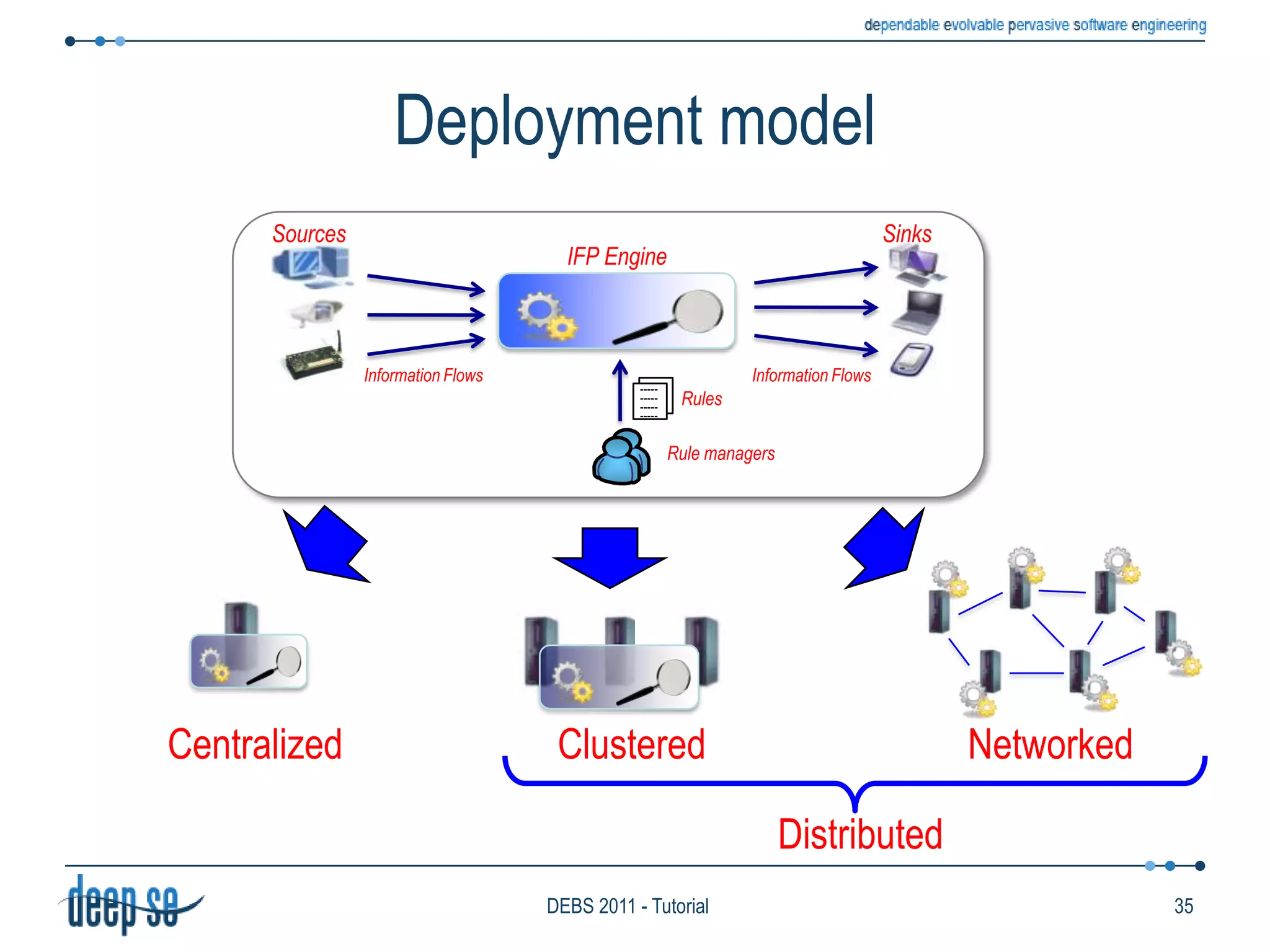
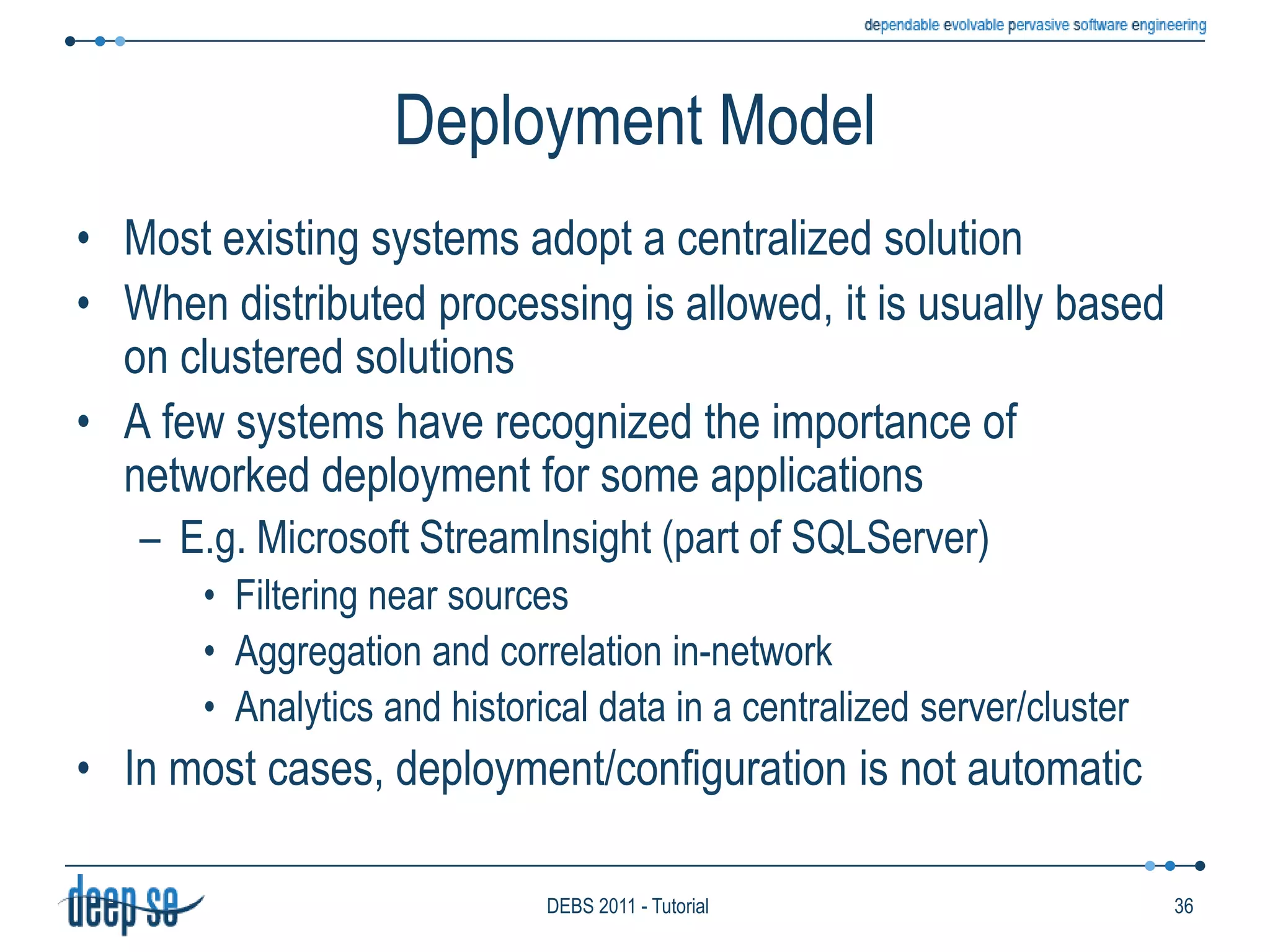

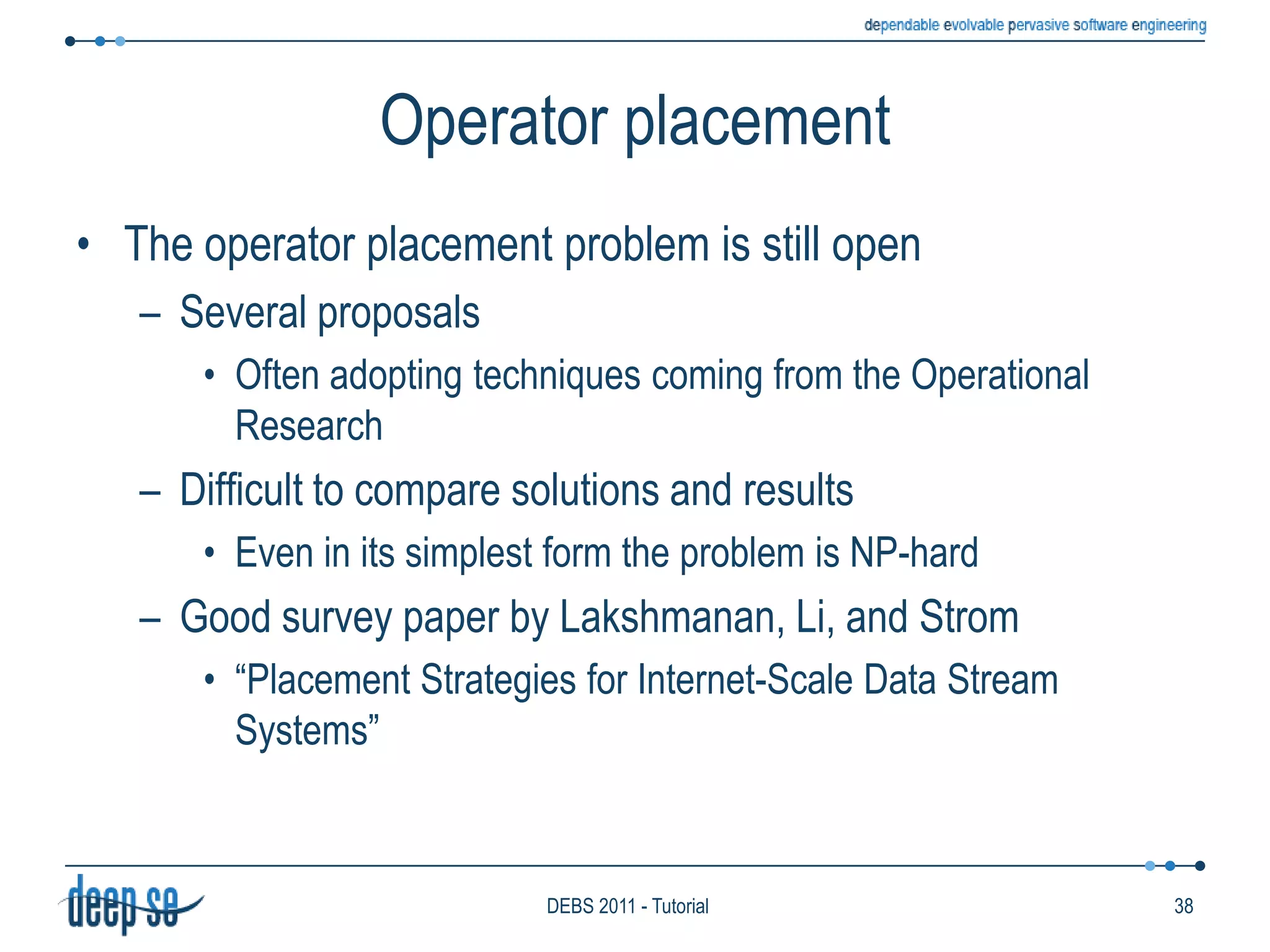

![Consumption policy: ConsiderationsMost systems couple a multiple selection policy with a zero consumption policyThis is the common case with DSMSs, which use (sliding) windows to select relevant eventsExample (in CQL) Select IStream(Smoke.area)From Smoke[Range 1 min], Temp[Range 1 min]Where Smoke.area = Temp.area AND Temp.val > 50The systems that allow the selection policy to be programmed often allow the consumption policy to be programmed, tooE.g., Amit, T-Rex31DEBS 2011 - Tutorial](https://image.slidesharecdn.com/tutorialdebs2011export-110712090253-phpapp01/75/Processing-Flows-of-Information-DEBS-2011-40-2048.jpg)
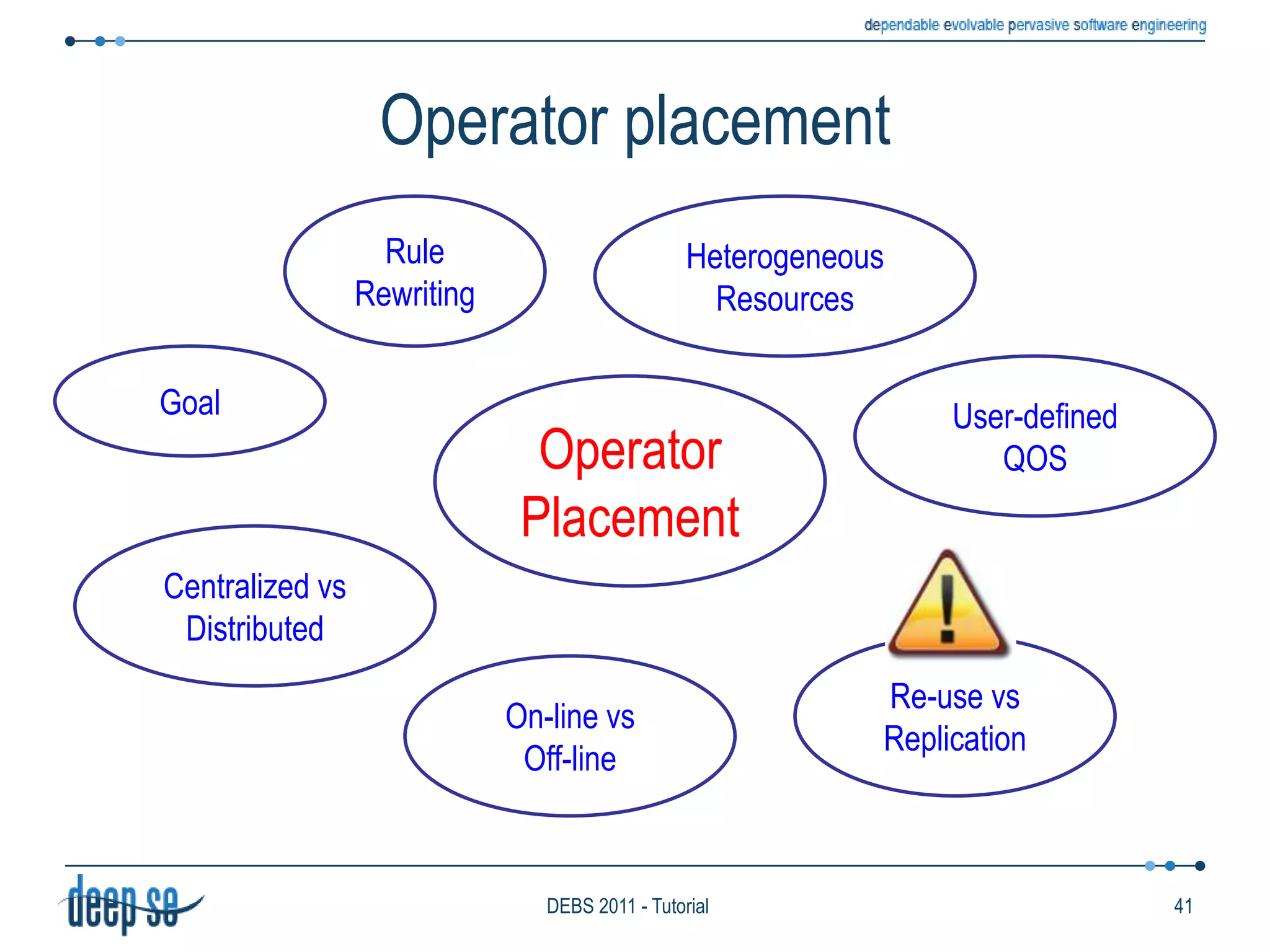
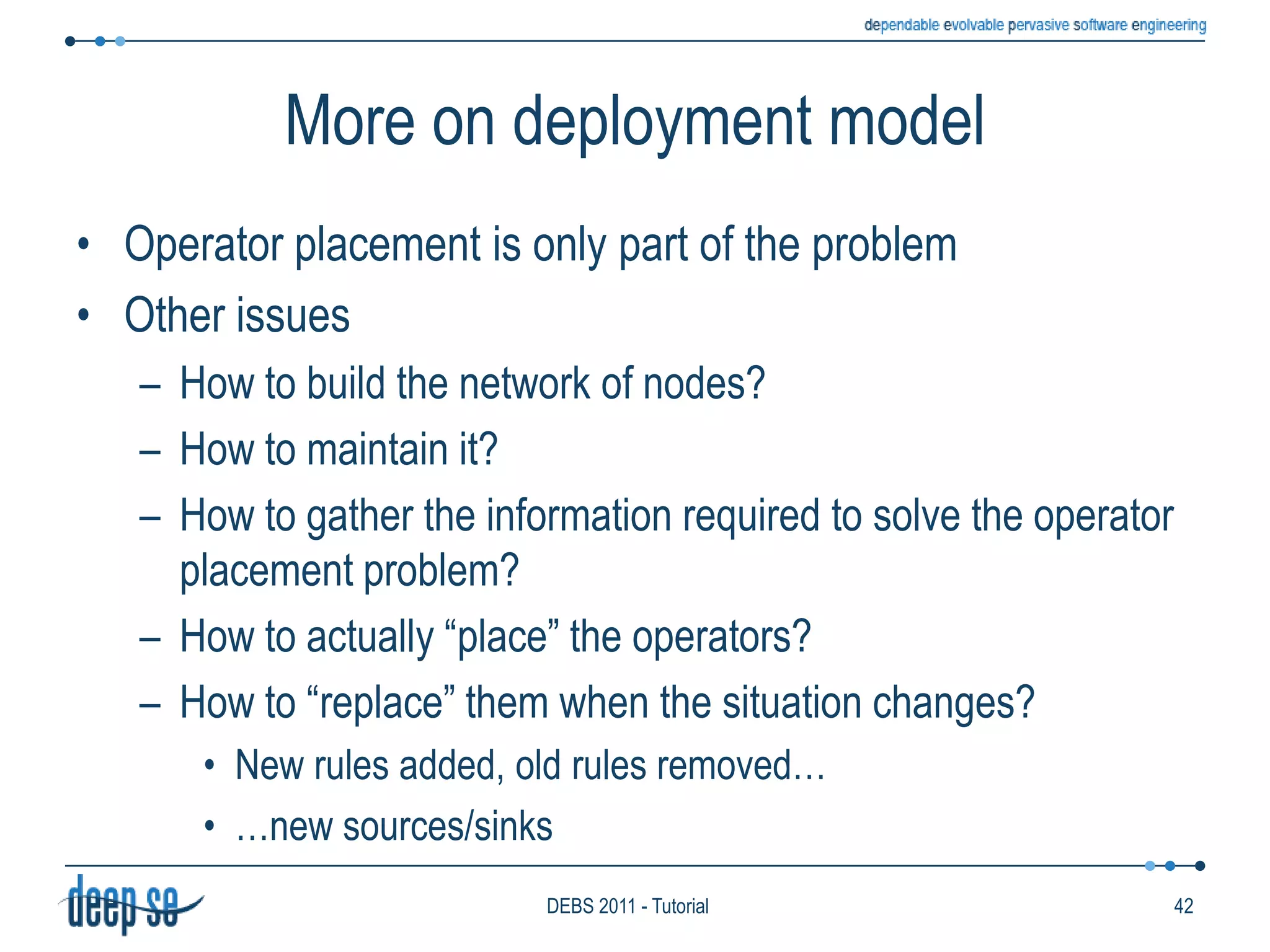
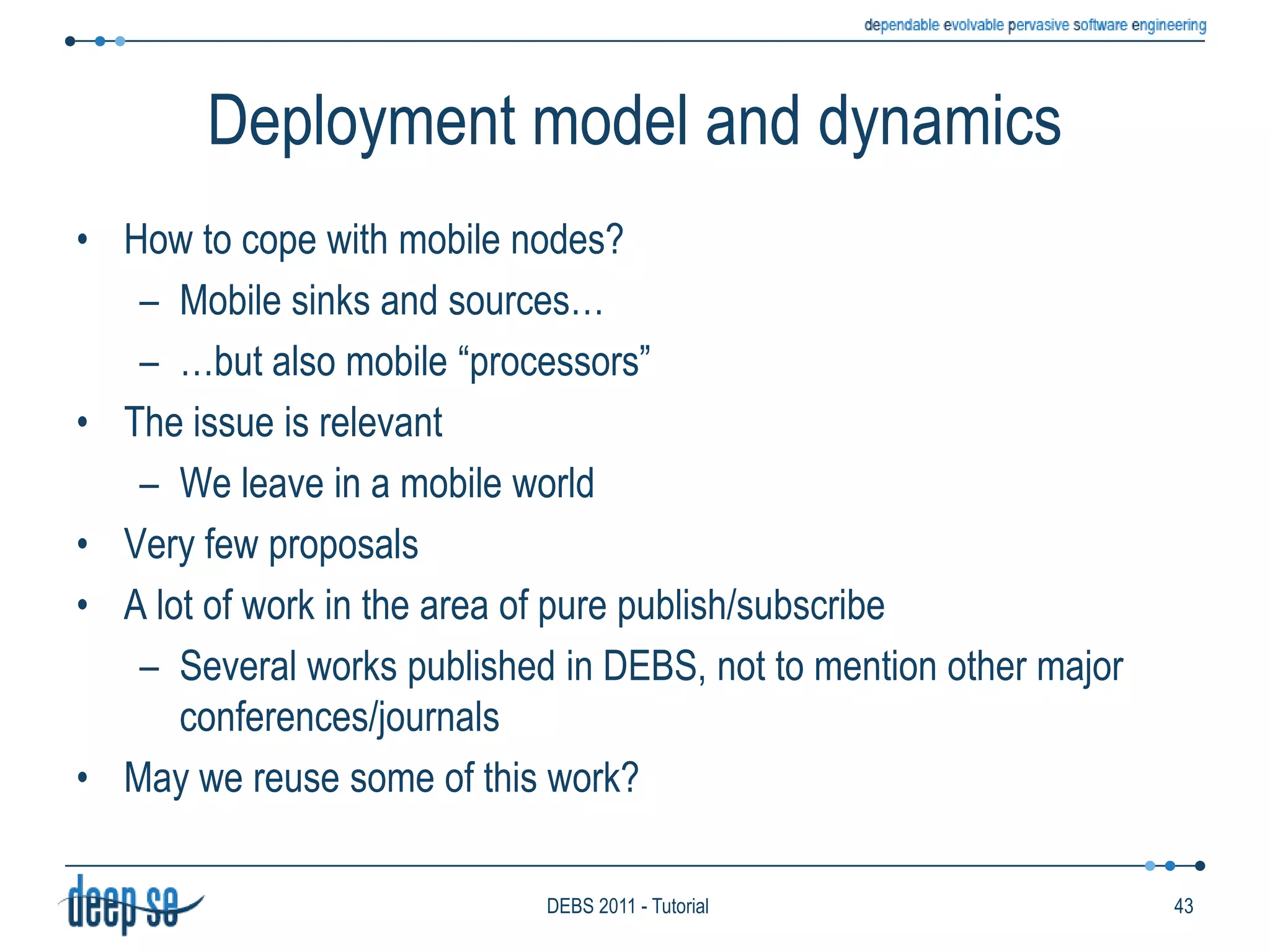
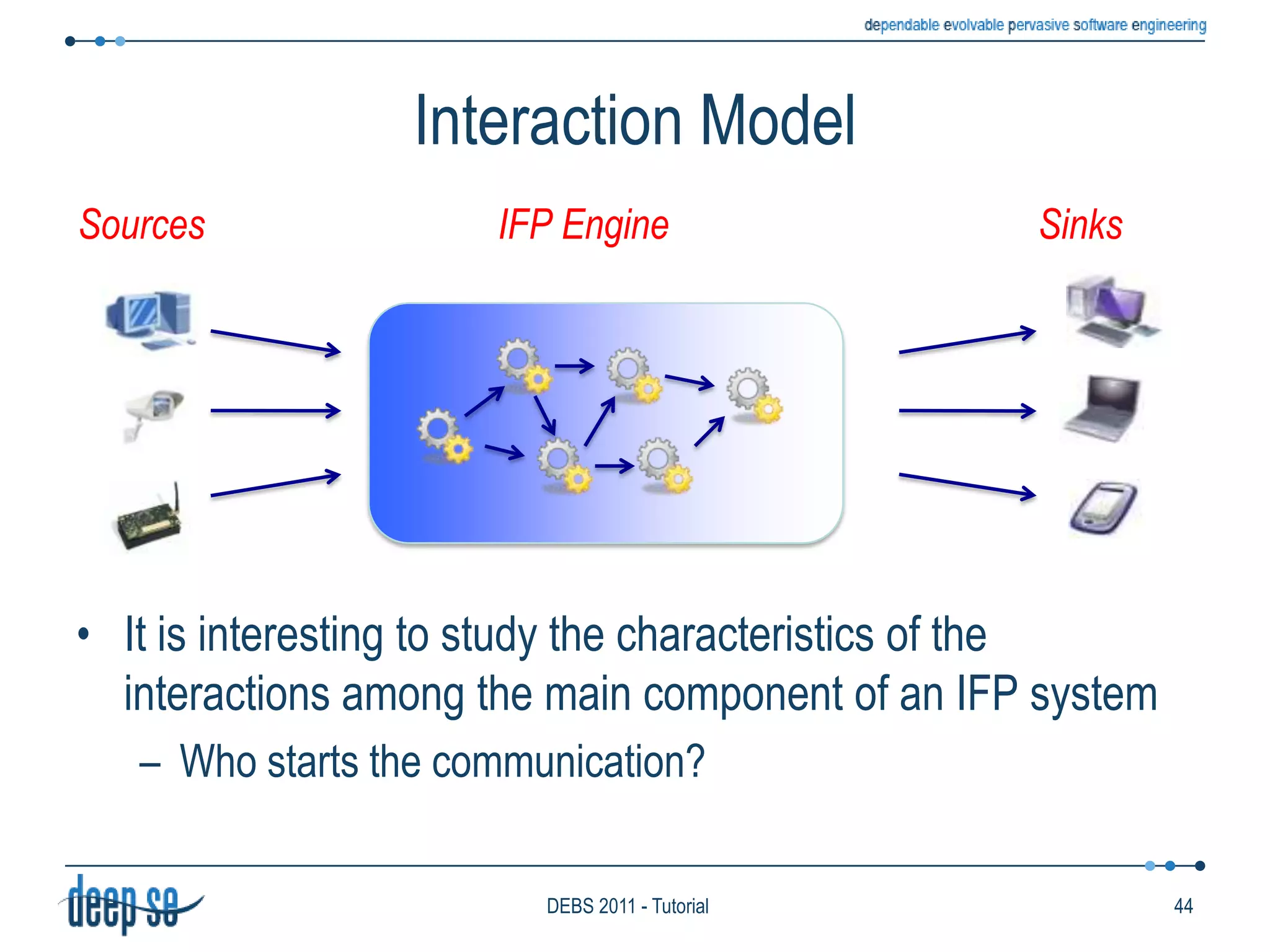
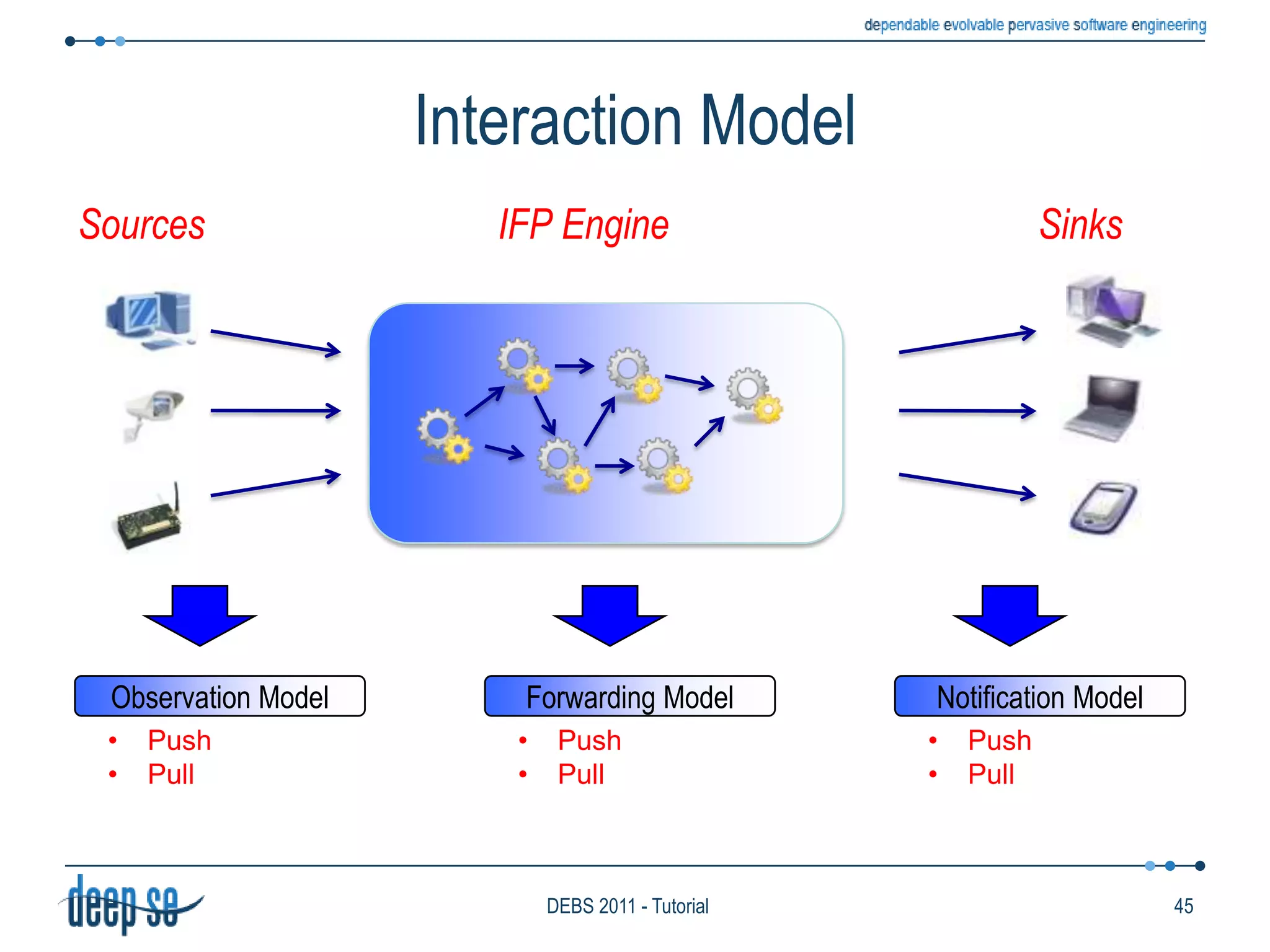

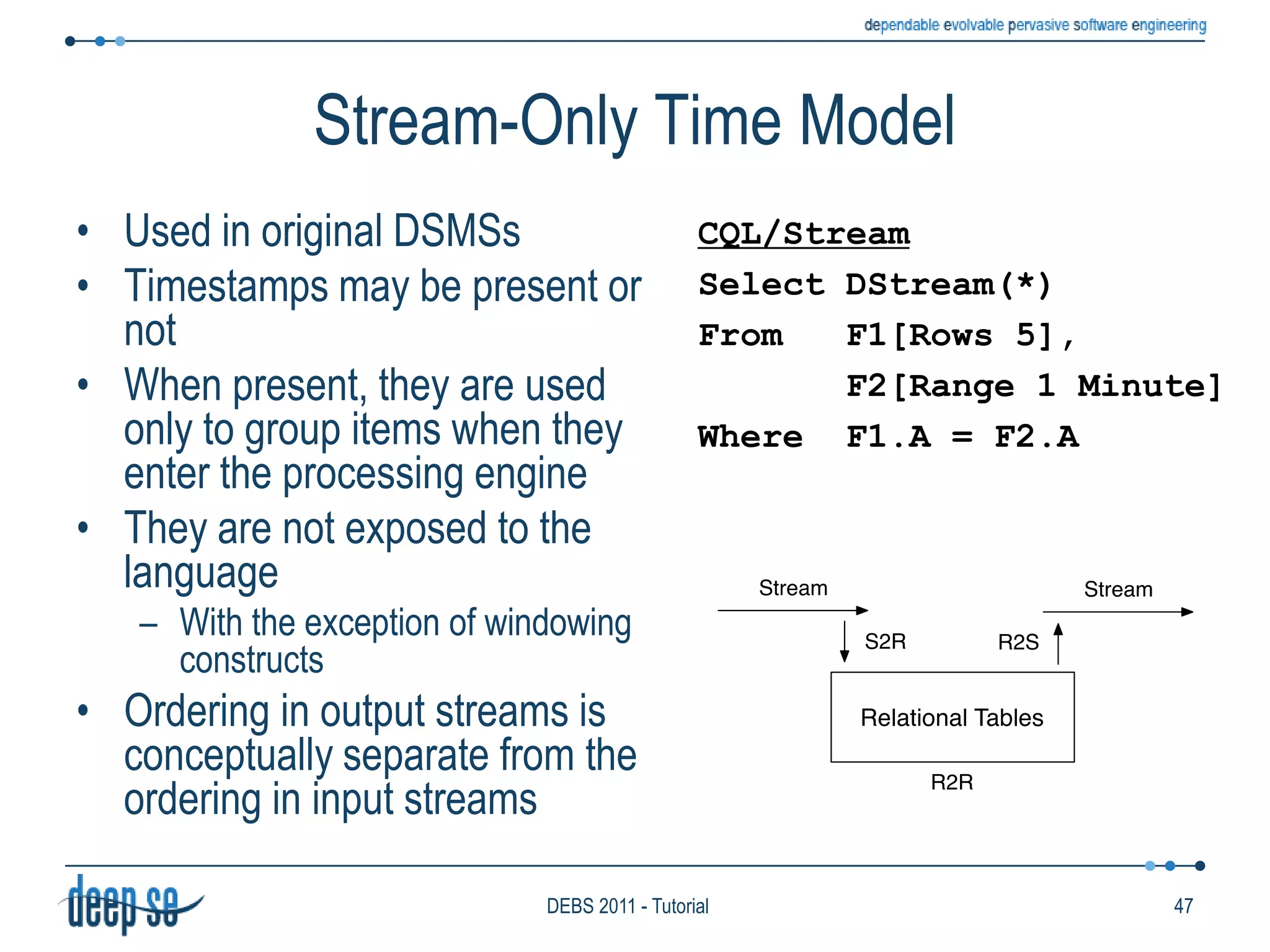
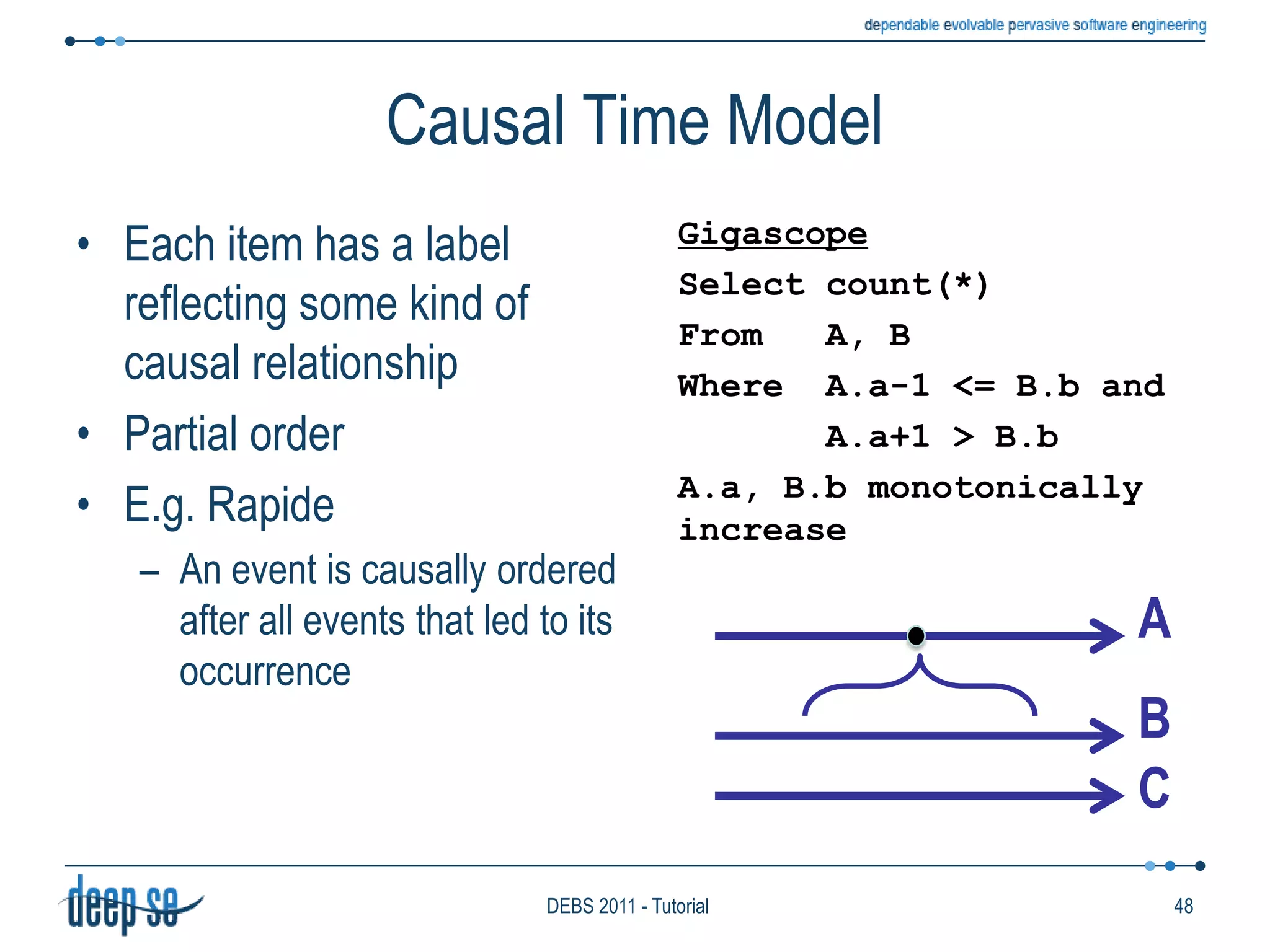
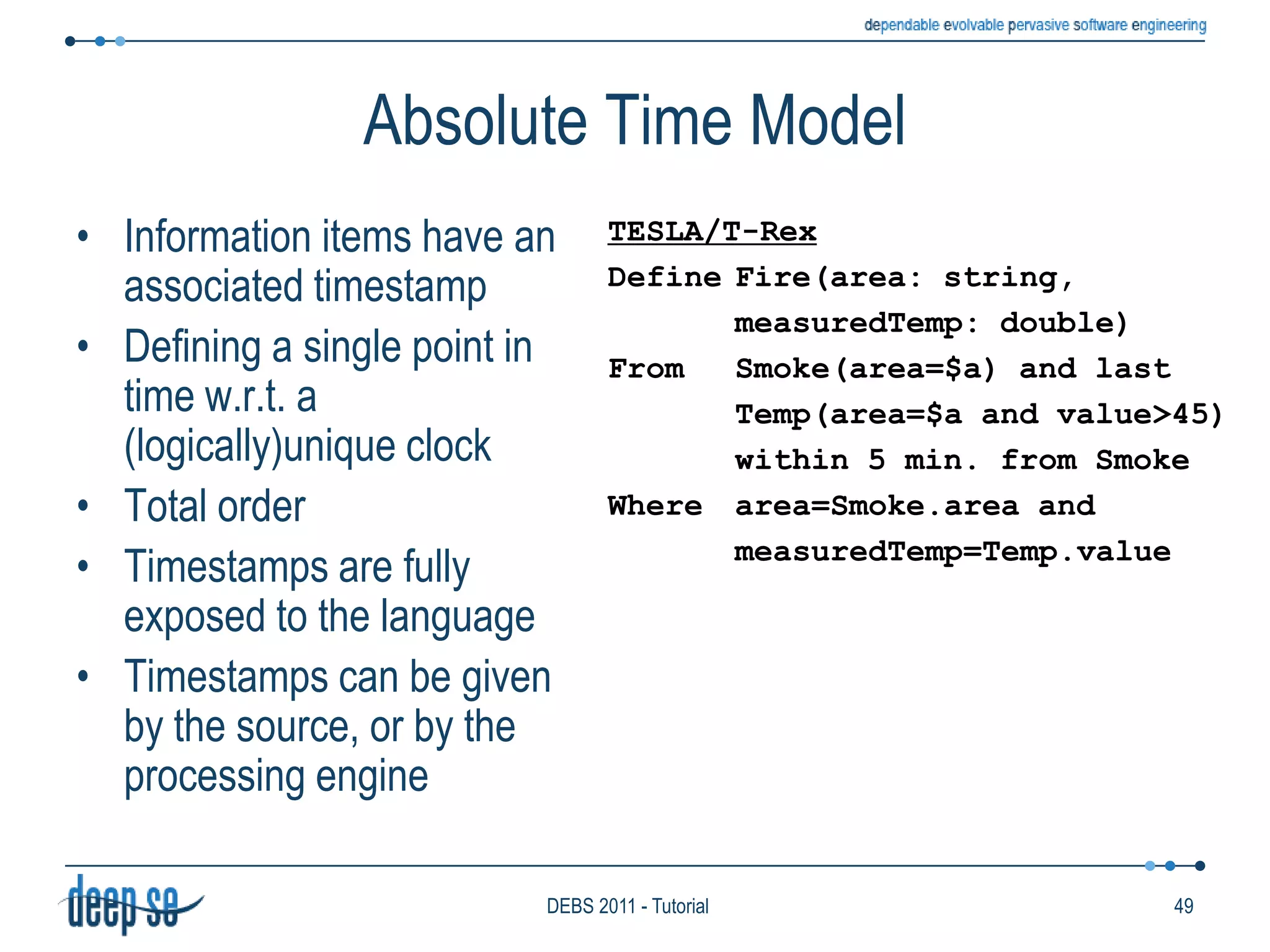
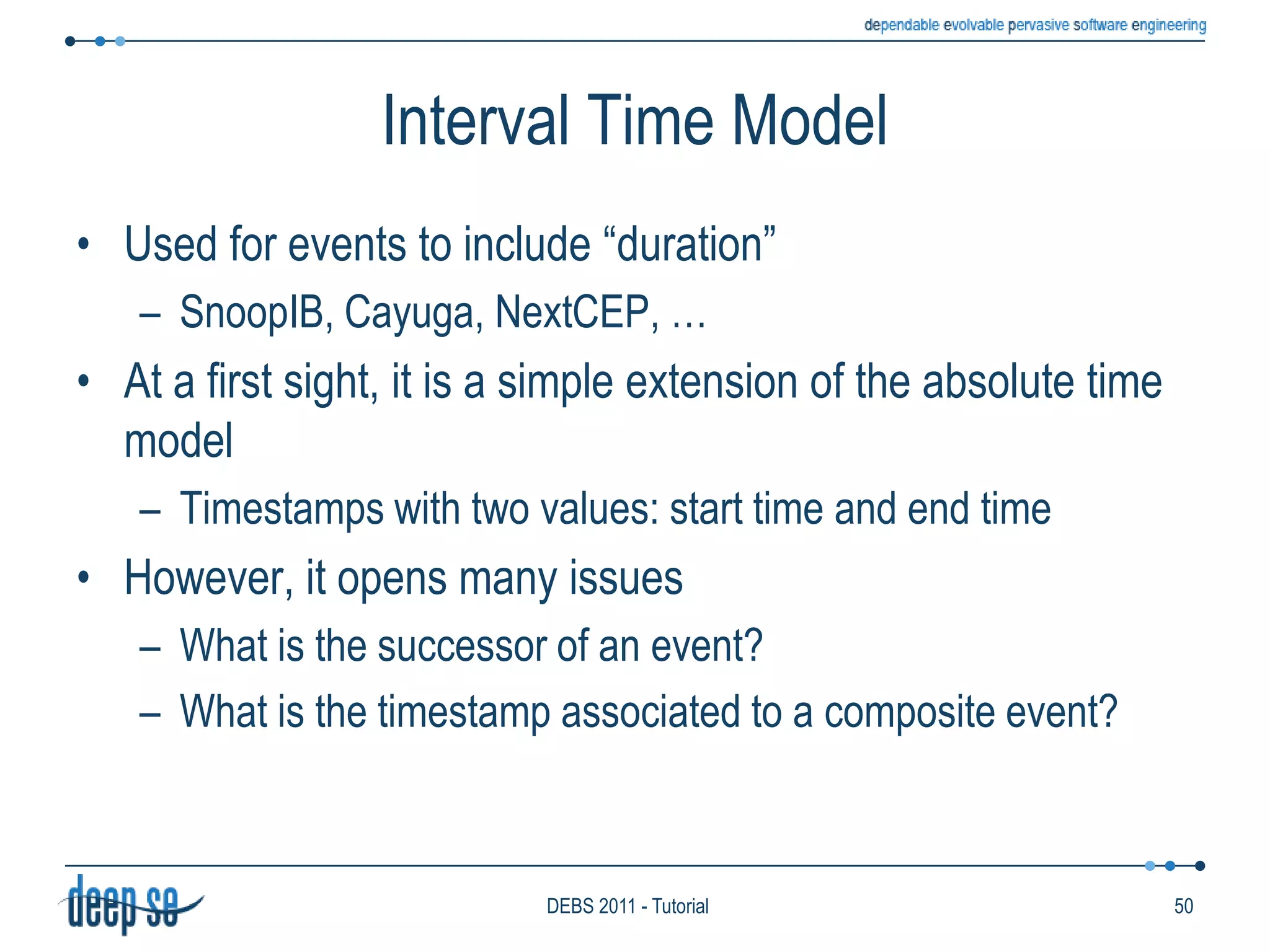
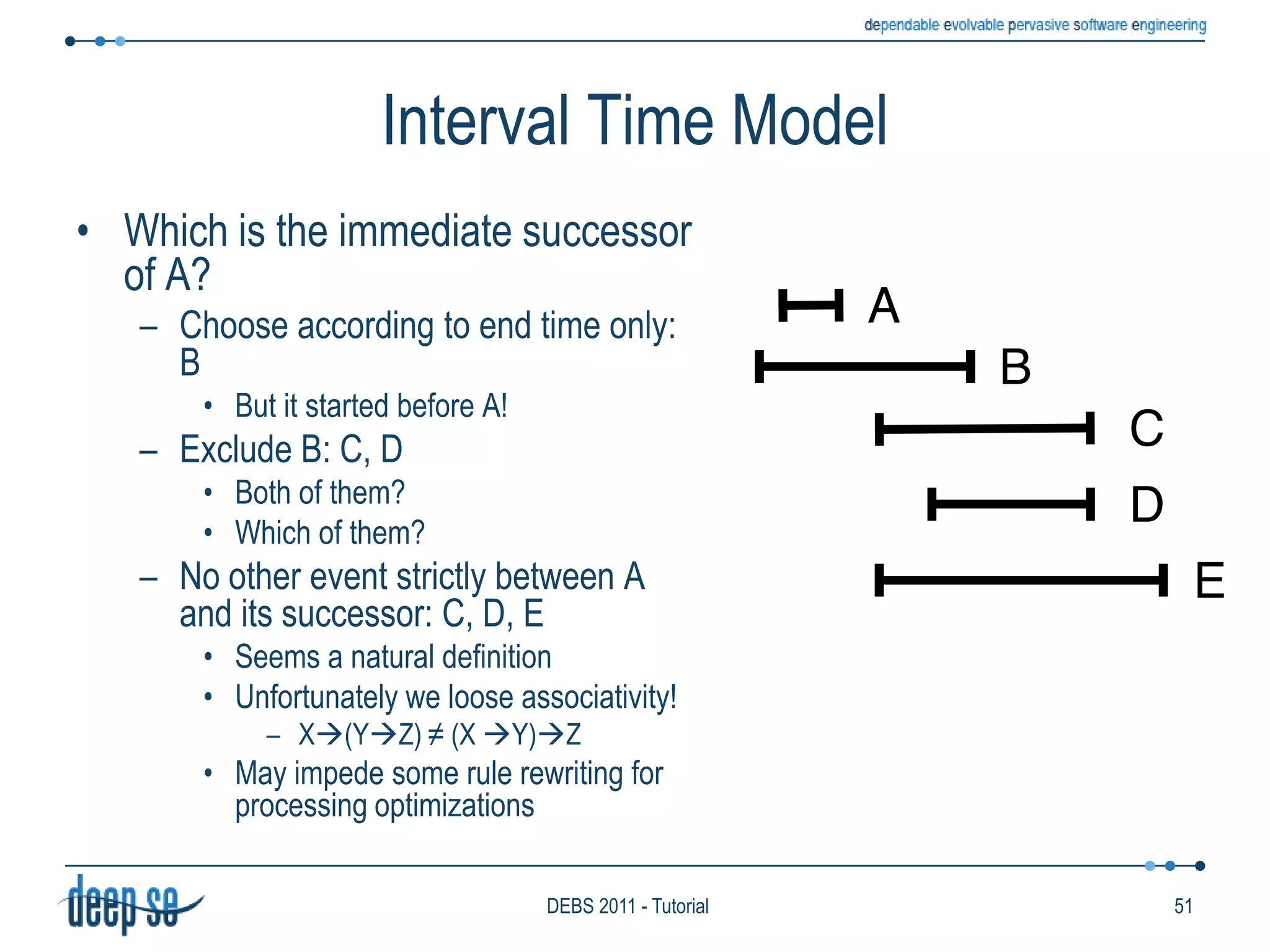


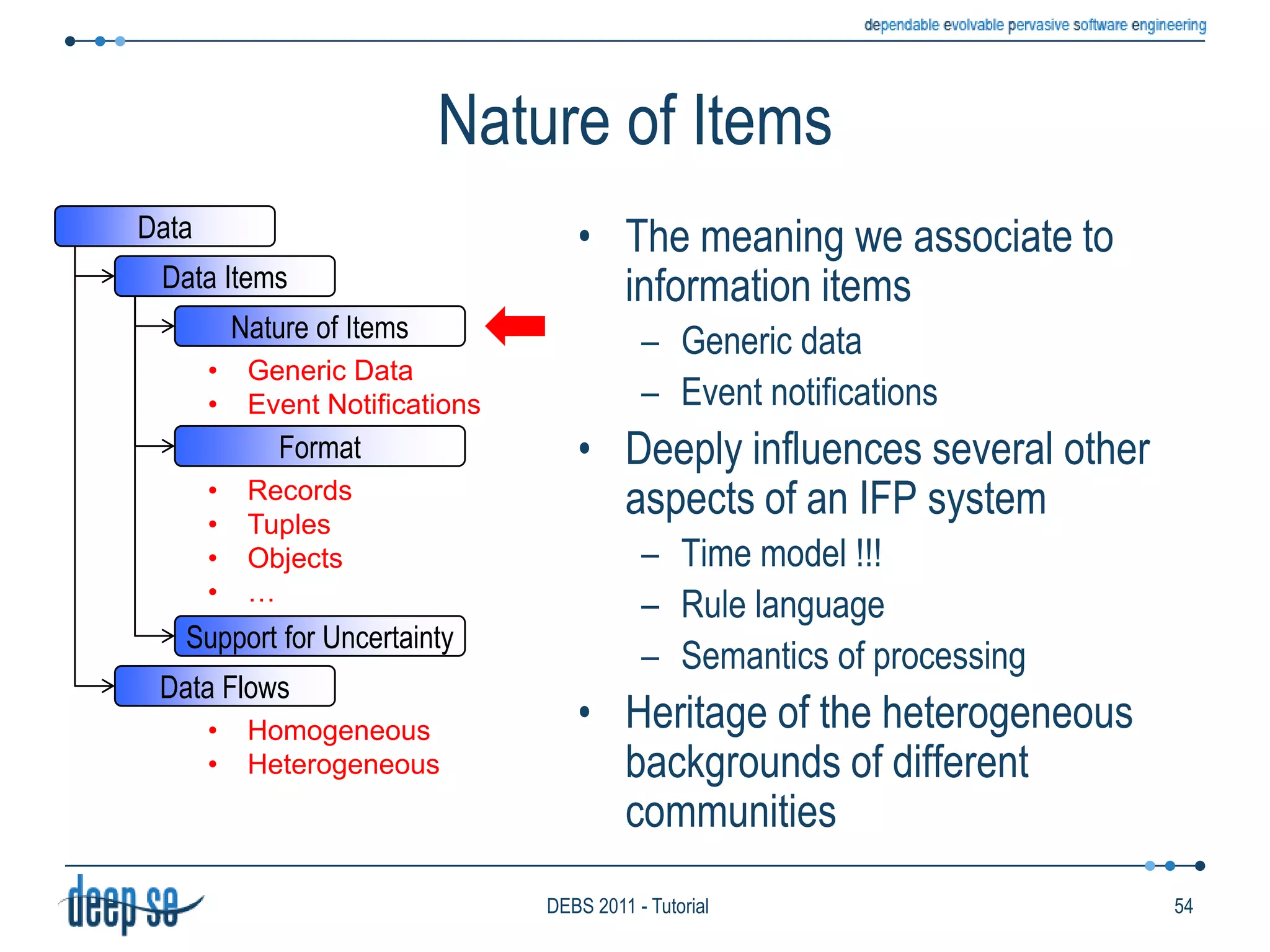
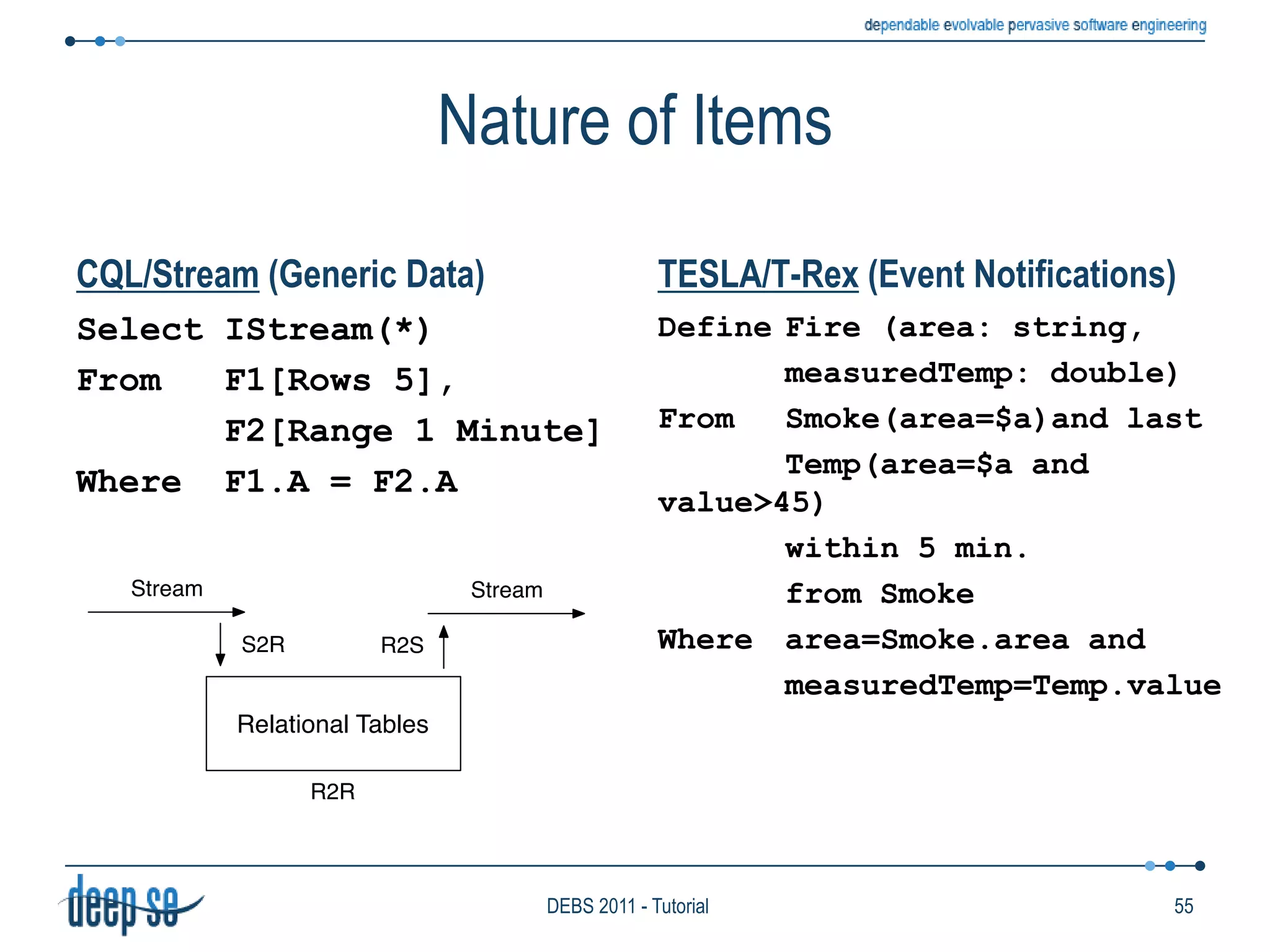
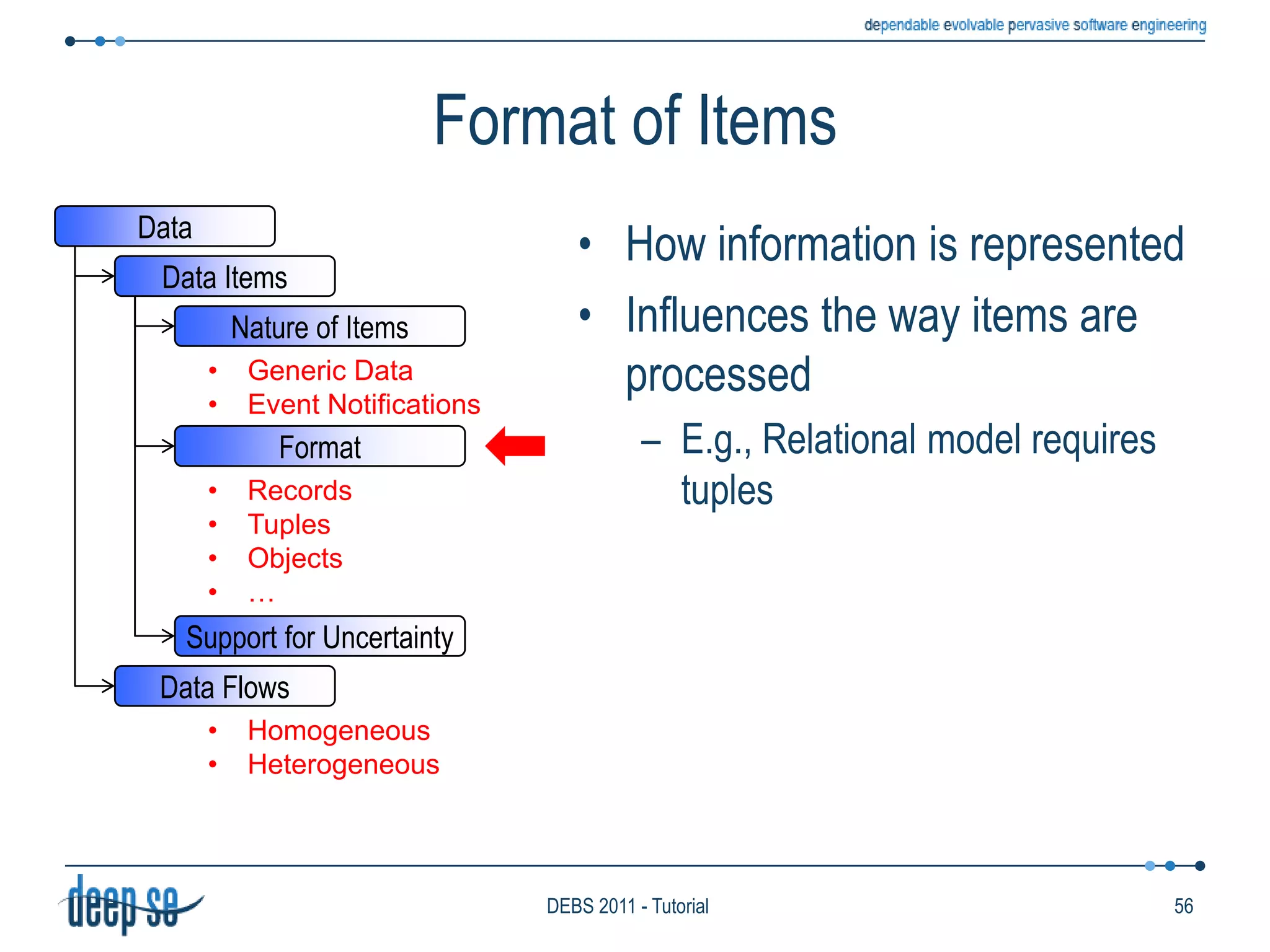
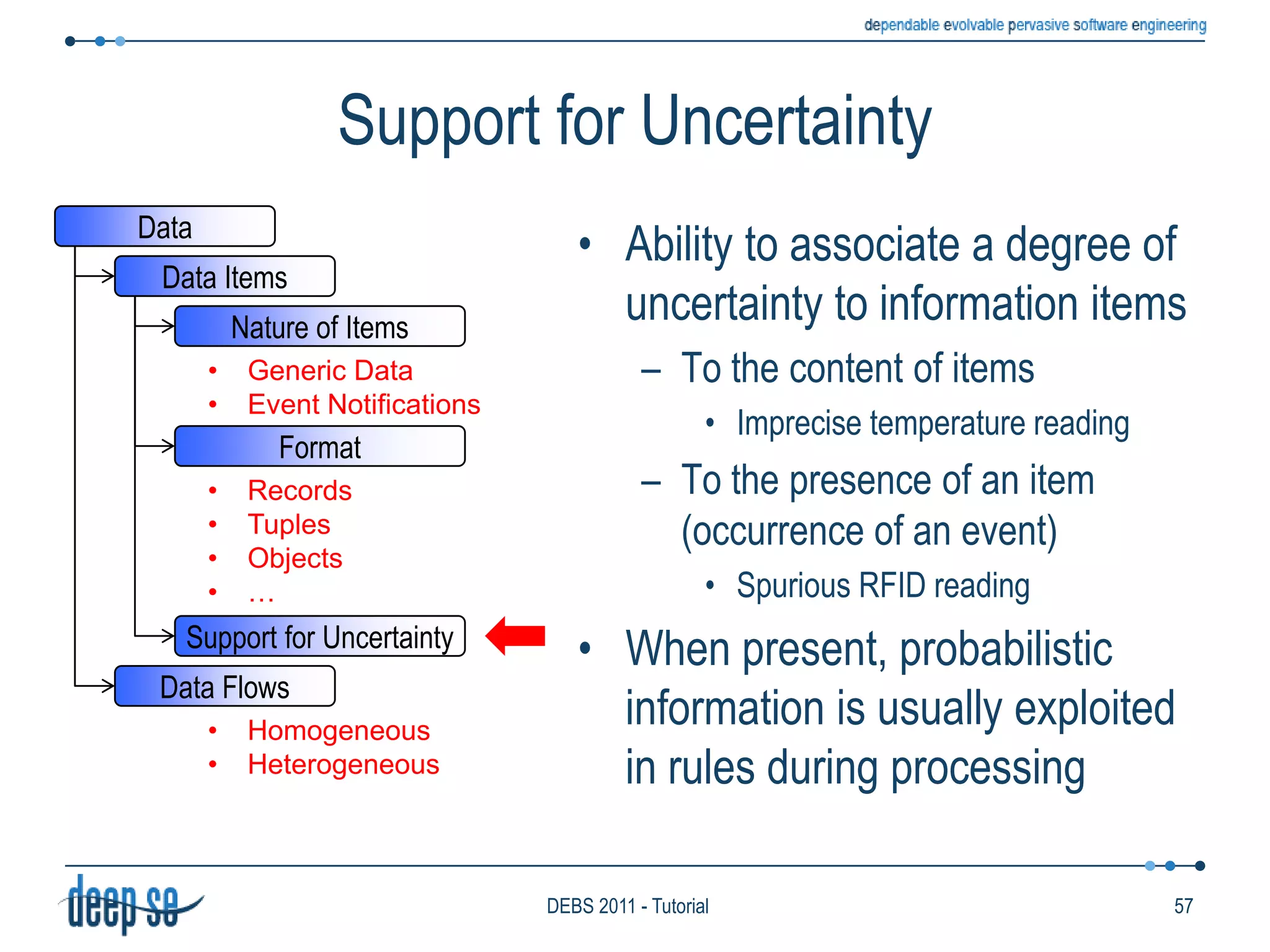
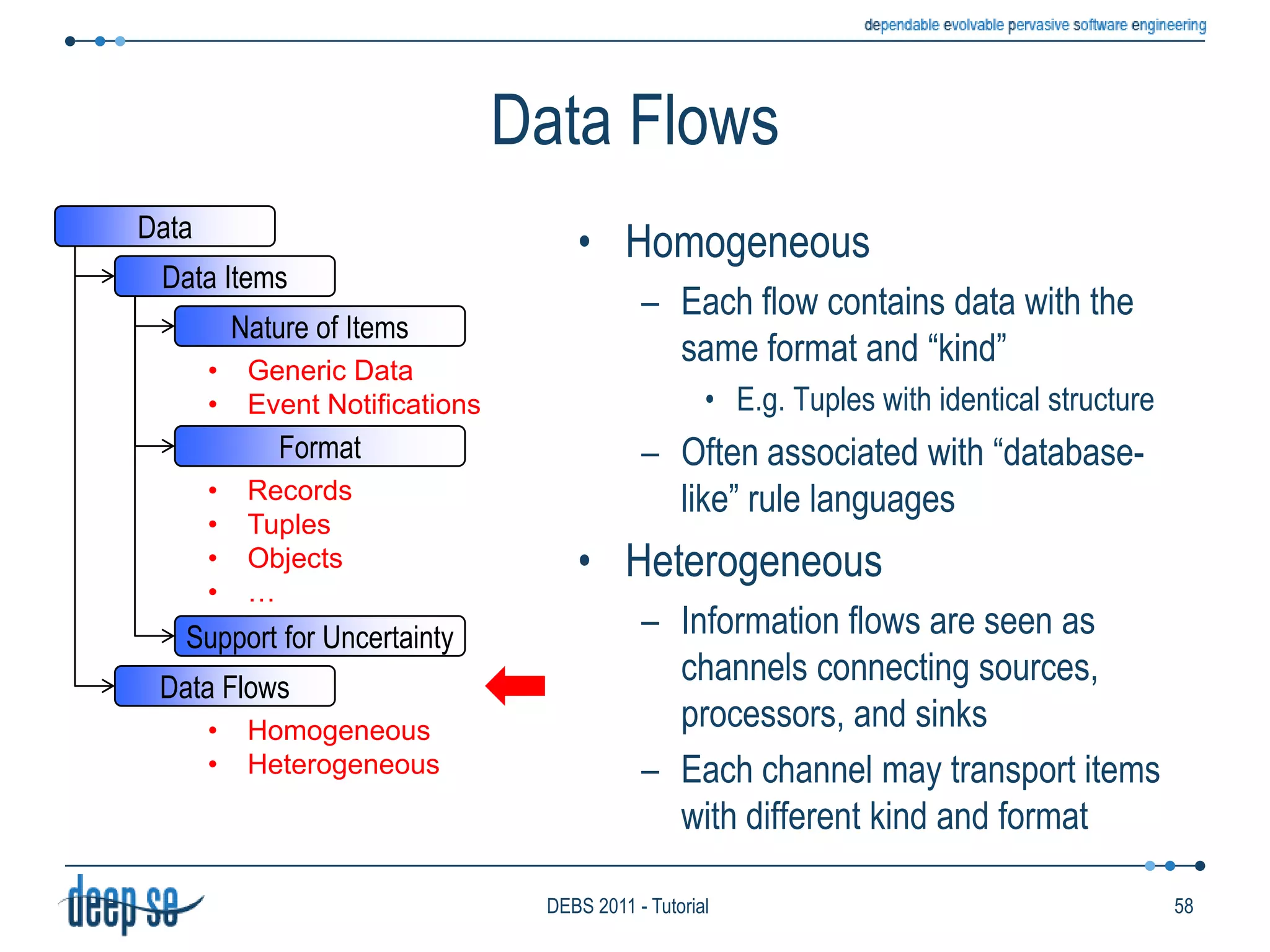
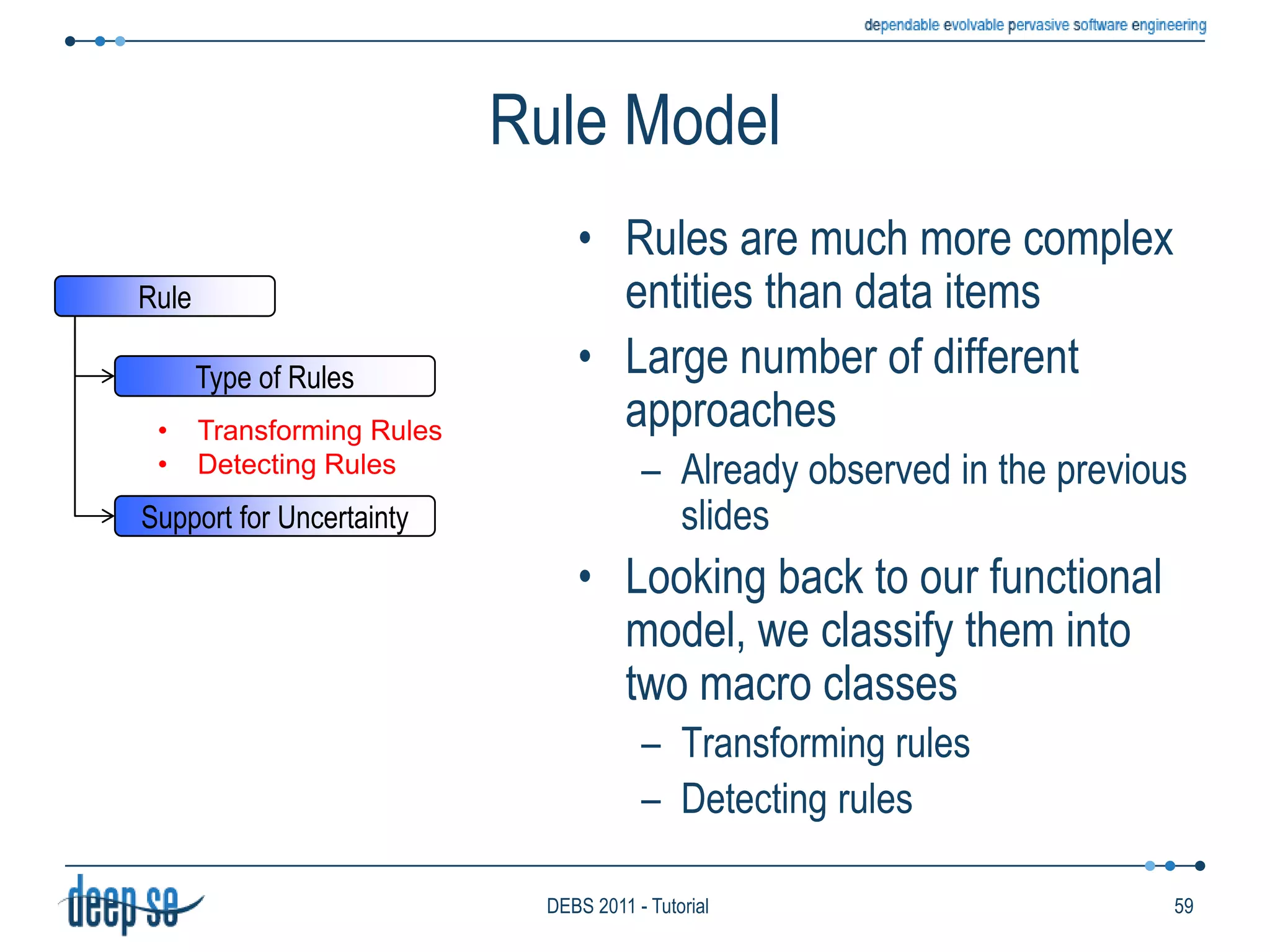
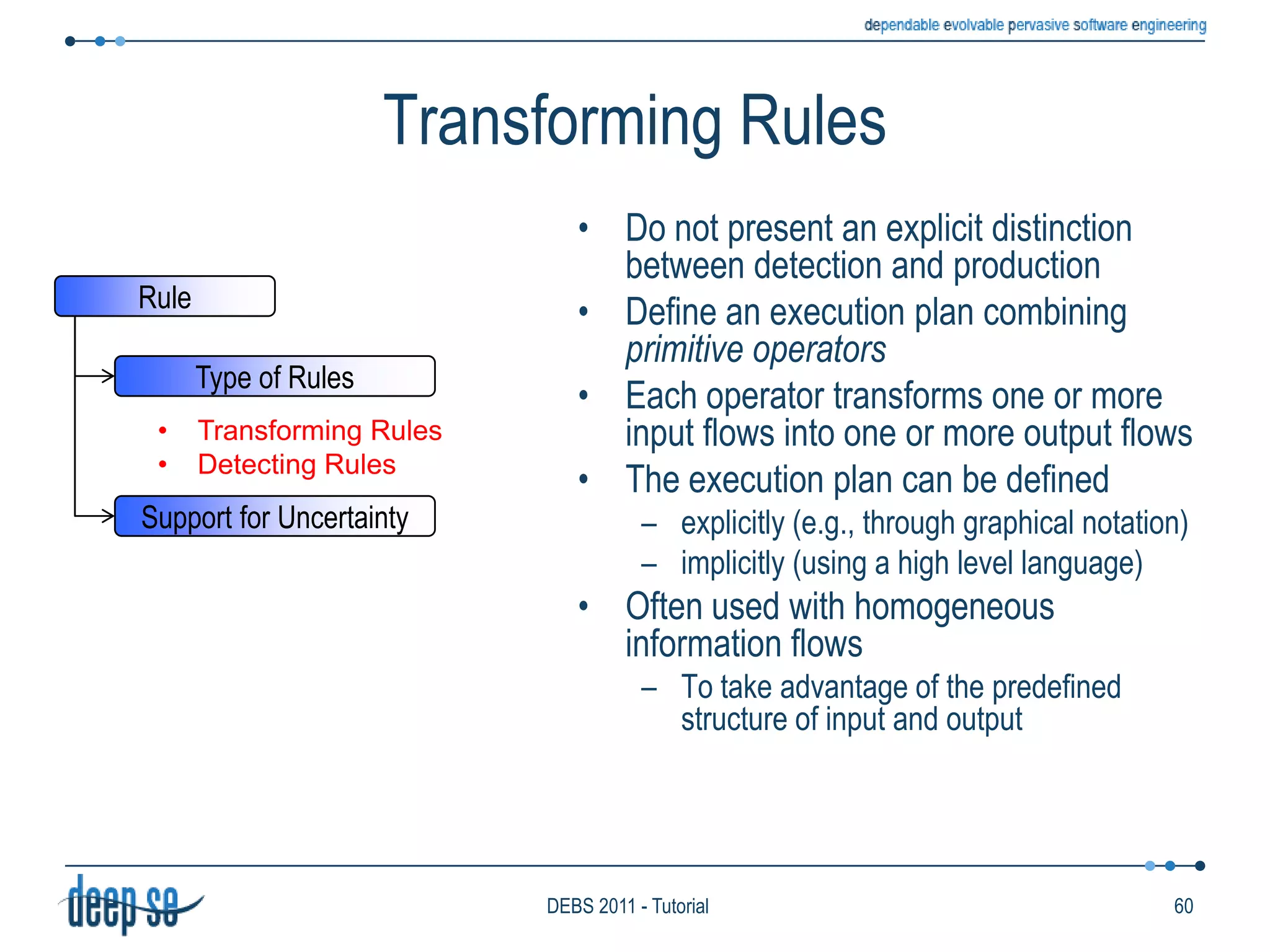
![Stream-Only Time ModelUsed in original DSMSsTimestamps may be present or notWhen present, they are used only to group items when they enter the processing engineThey are not exposed to the languageWith the exception of windowing constructsOrdering in output streams is conceptually separate from the ordering in input streamsCQL/StreamSelect DStream(*)From F1[Rows 5], F2[Range 1 Minute]Where F1.A = F2.A47DEBS 2011 - Tutorial](https://image.slidesharecdn.com/tutorialdebs2011export-110712090253-phpapp01/75/Processing-Flows-of-Information-DEBS-2011-61-2048.jpg)
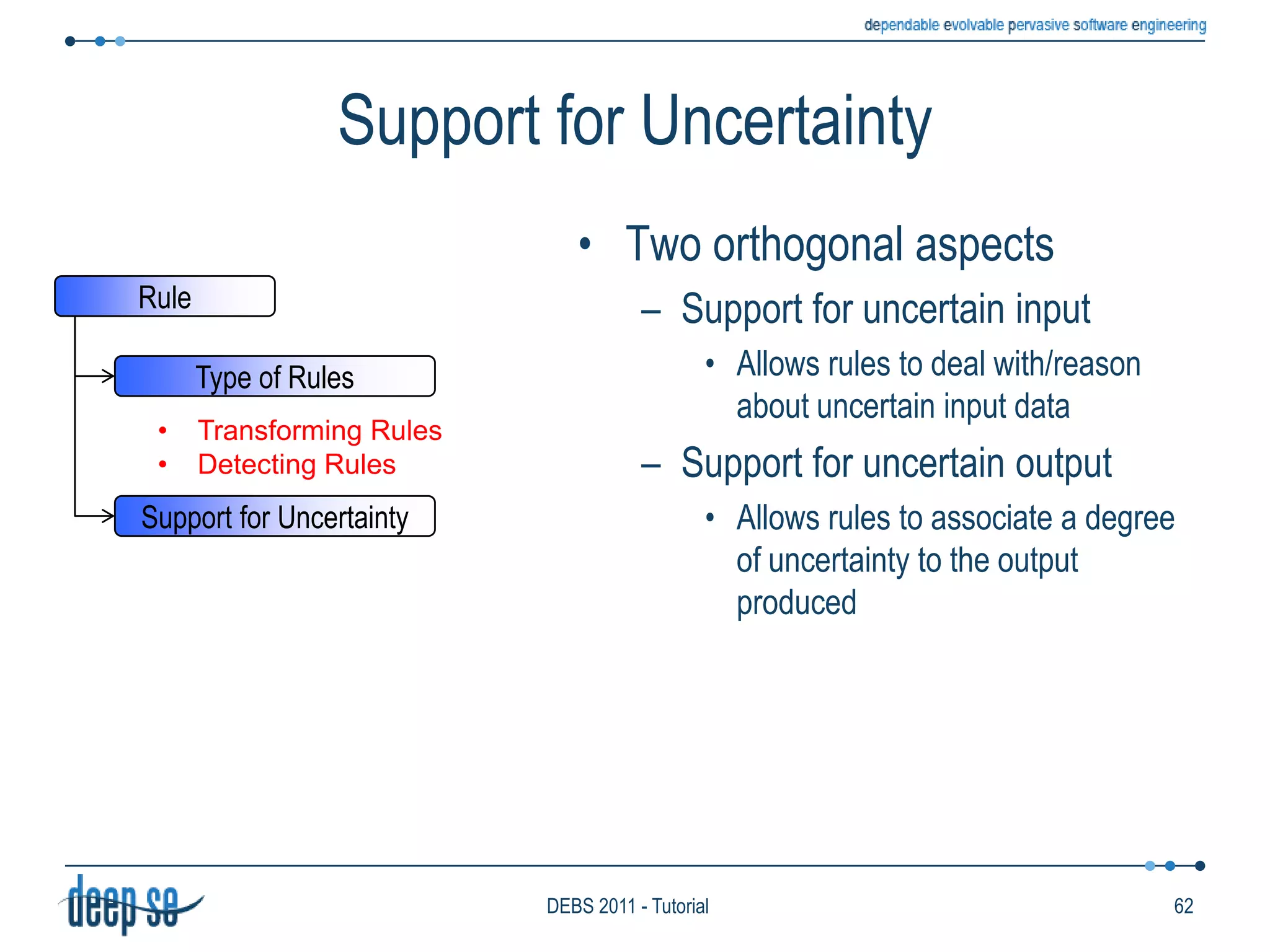
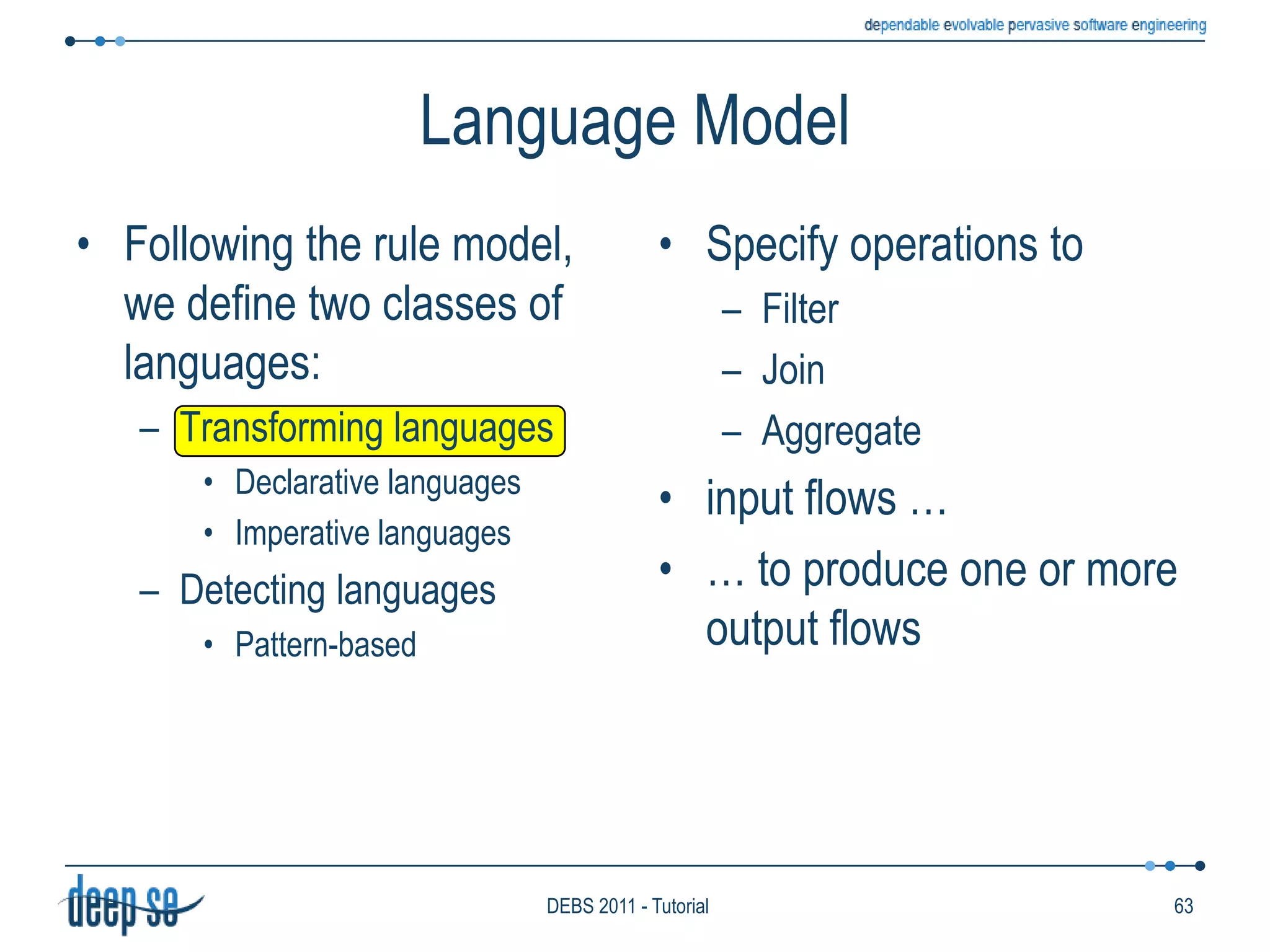
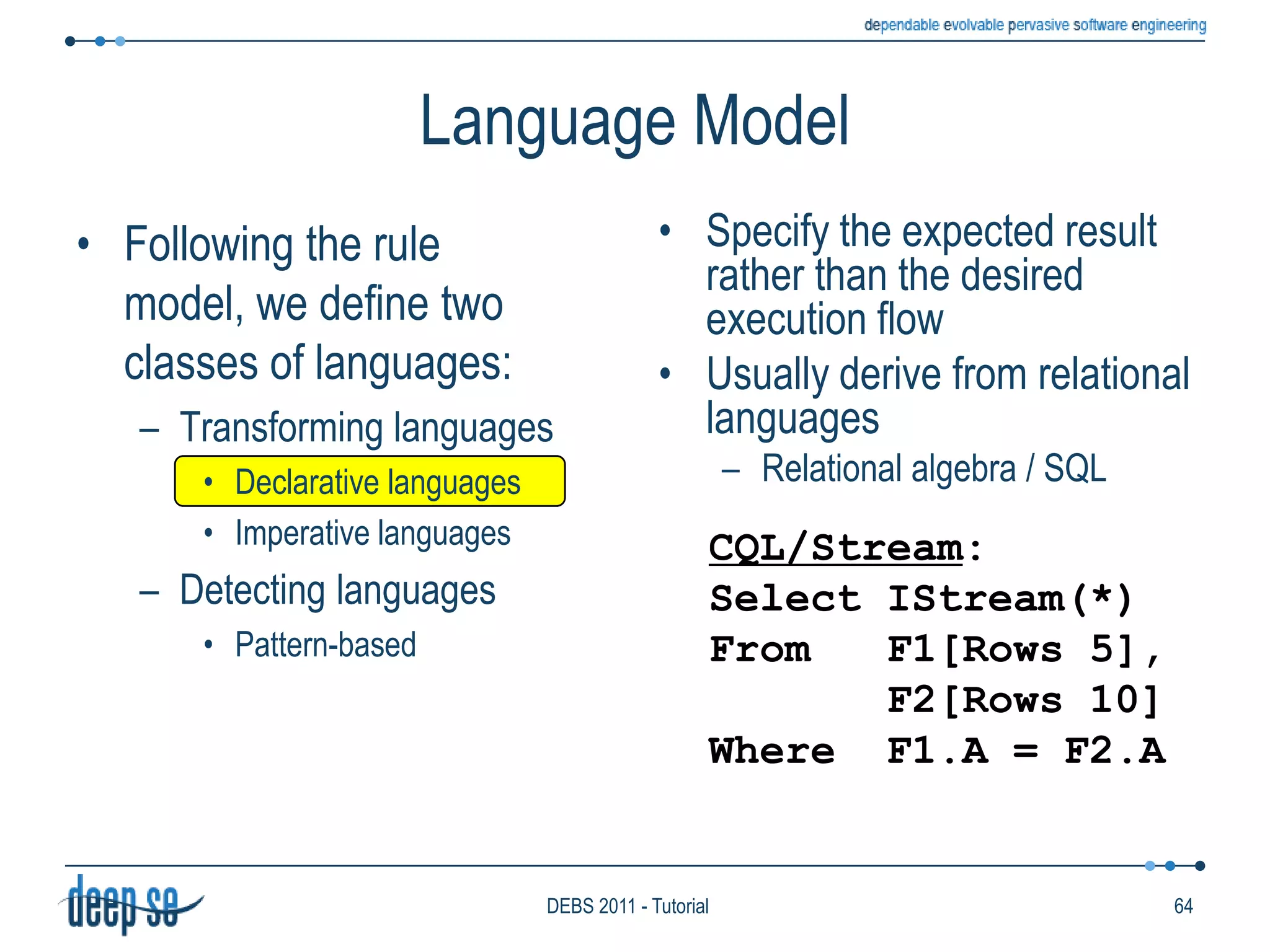


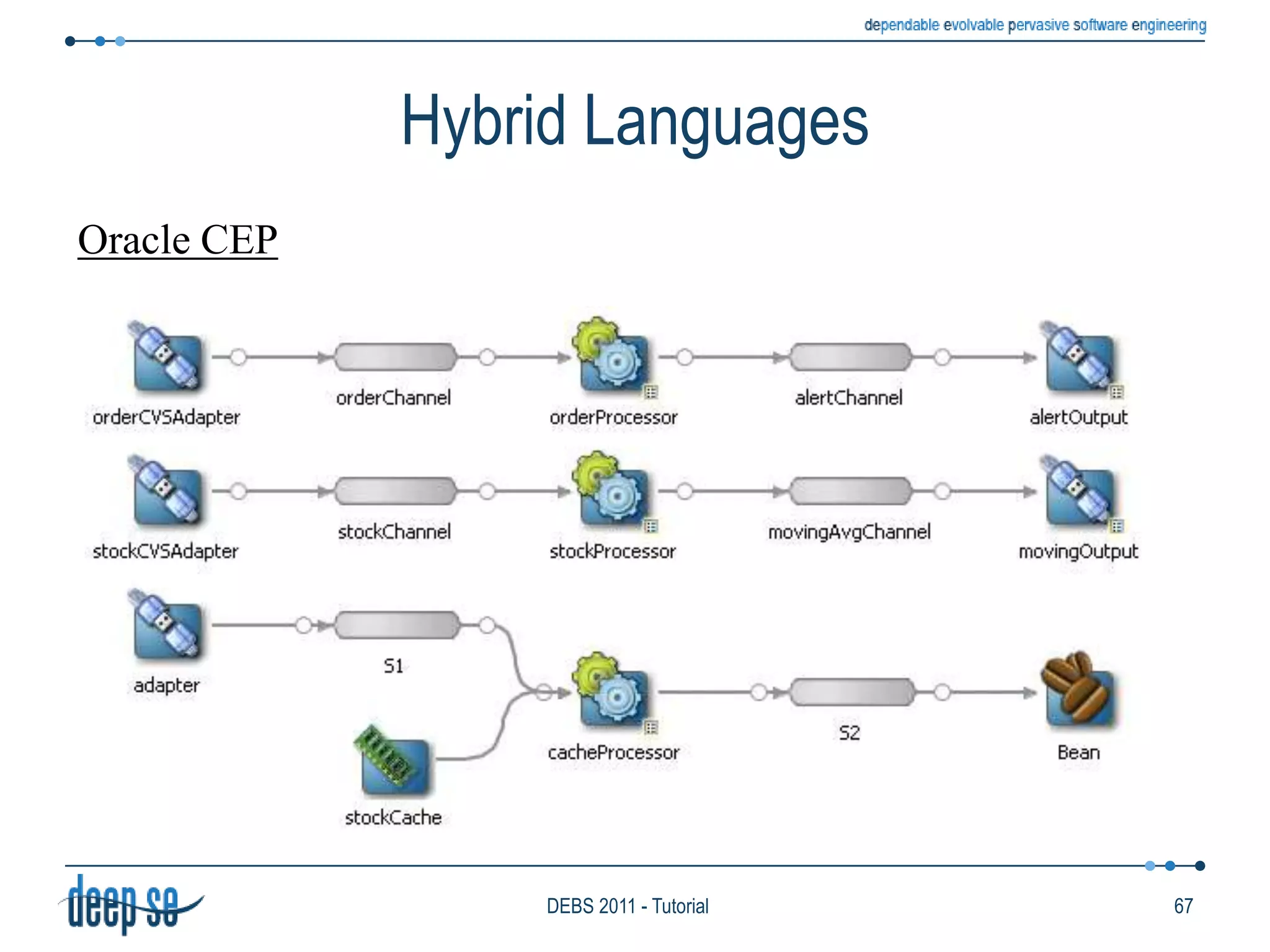
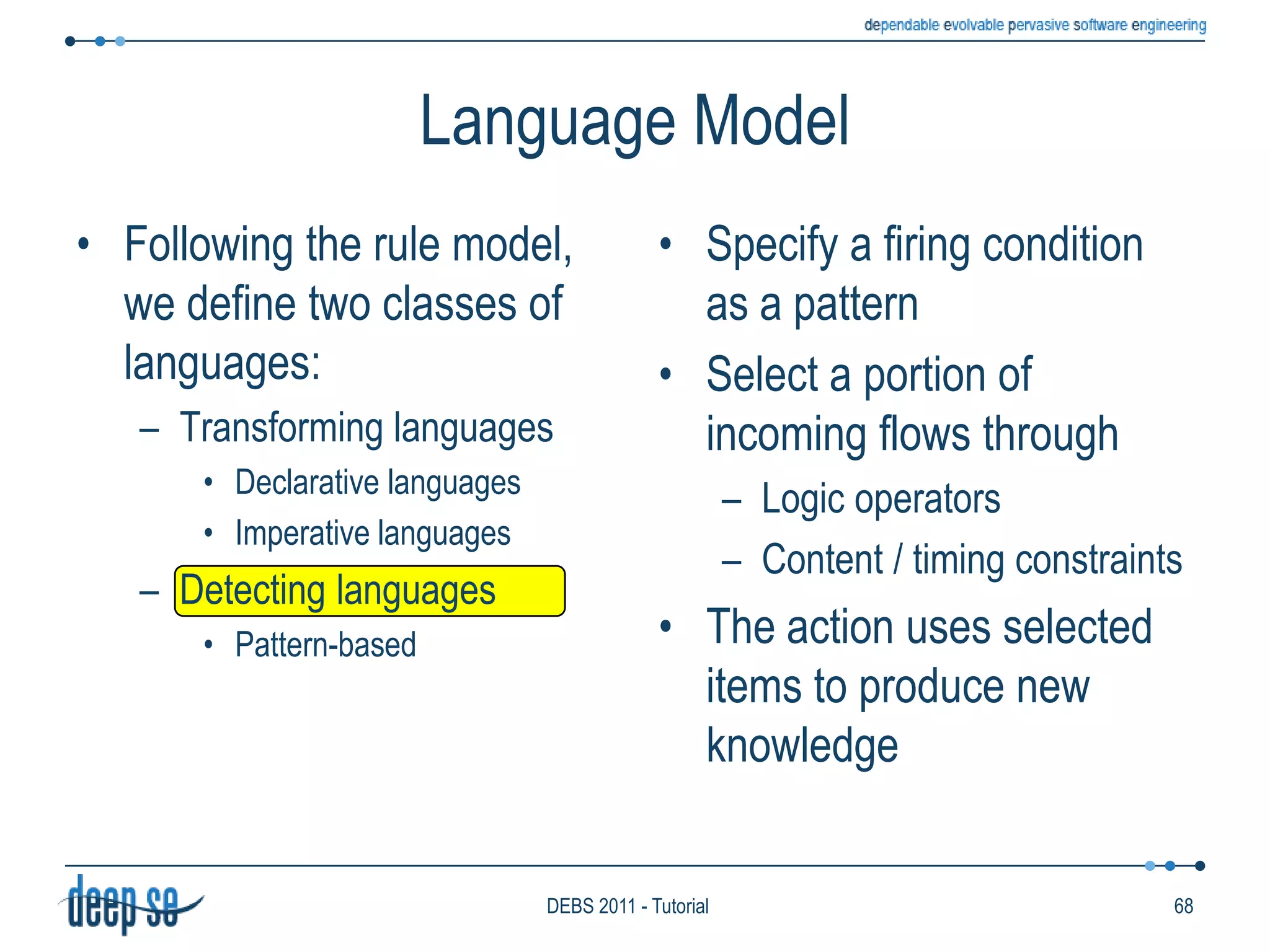

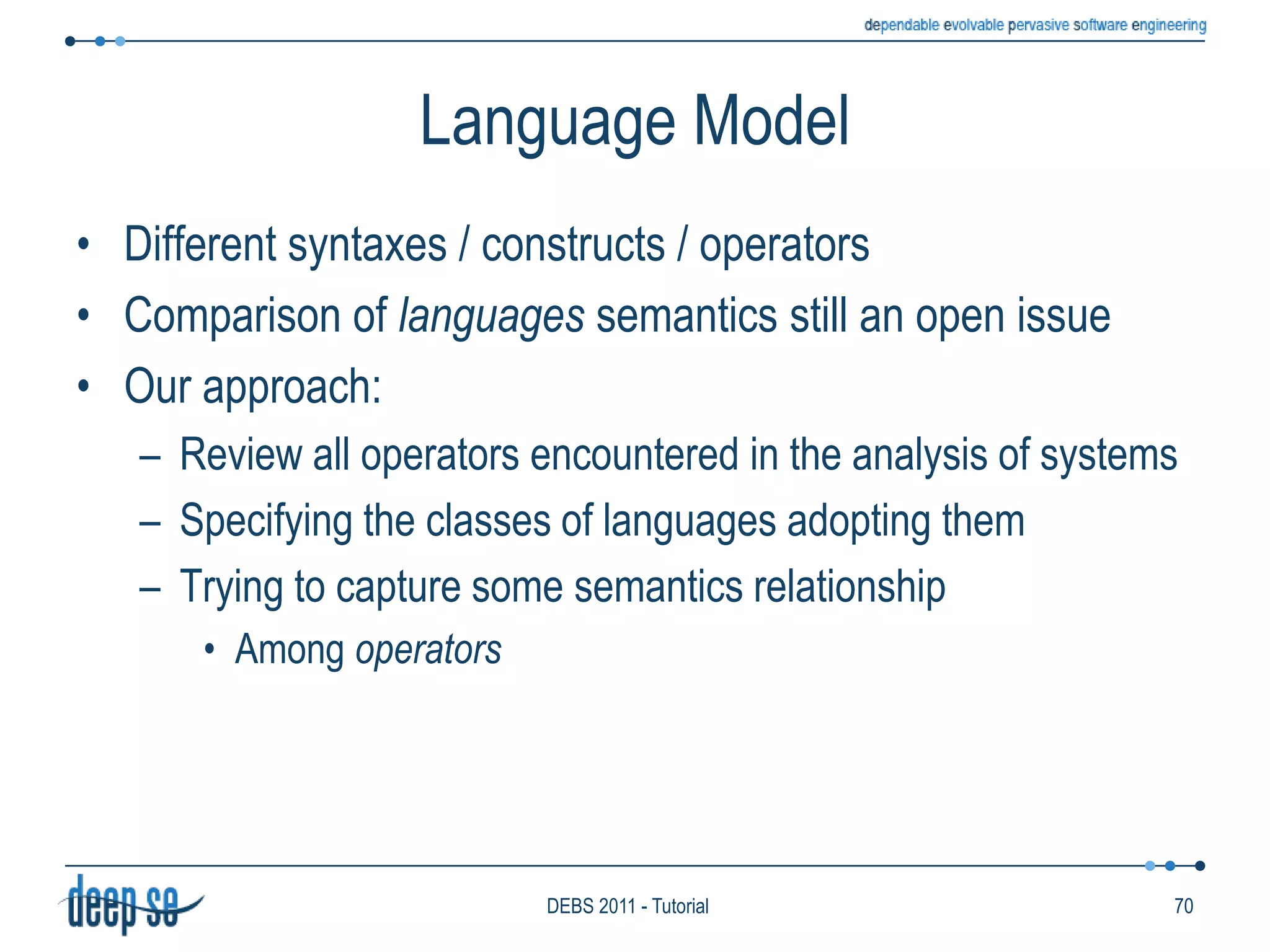
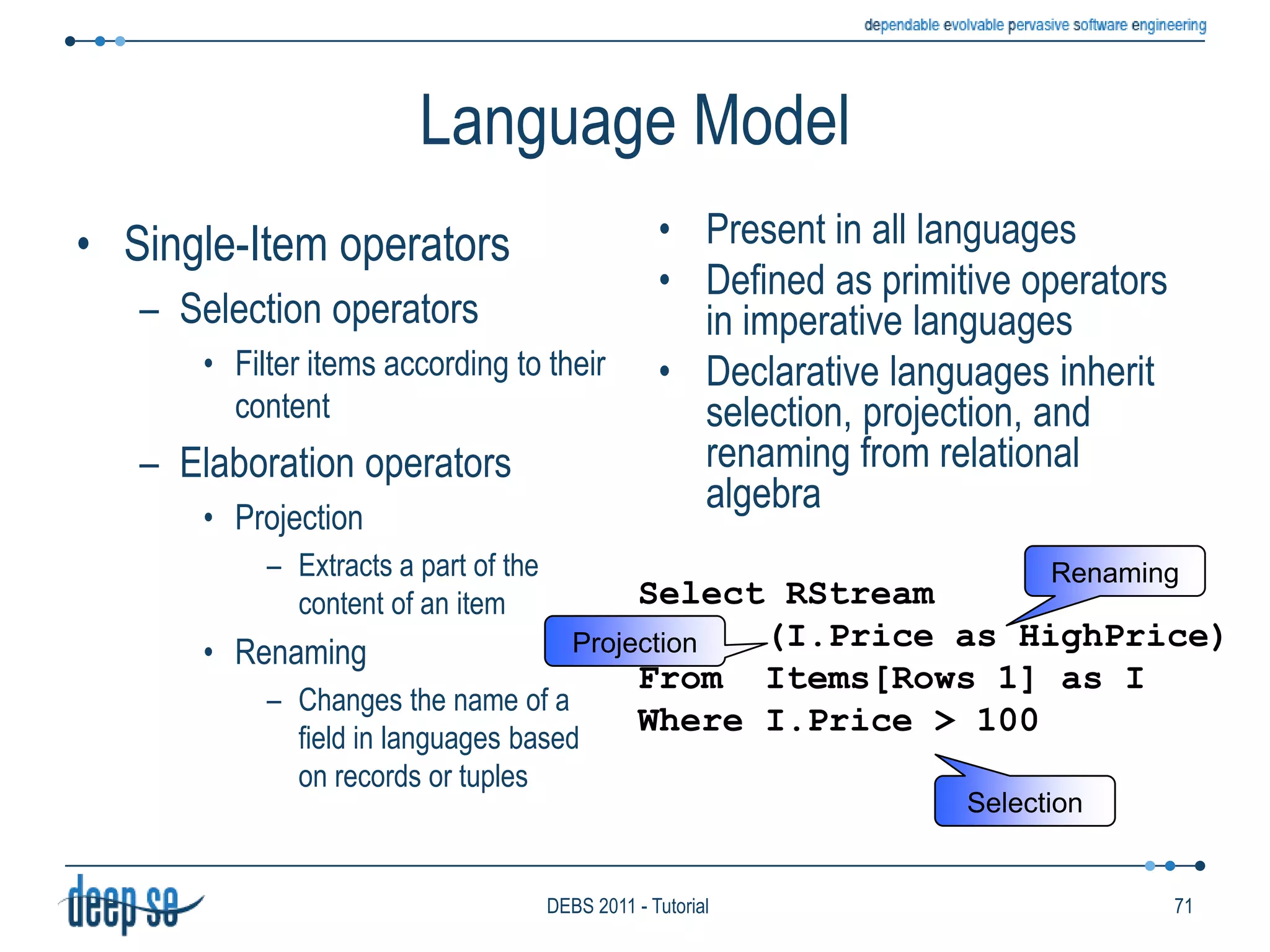
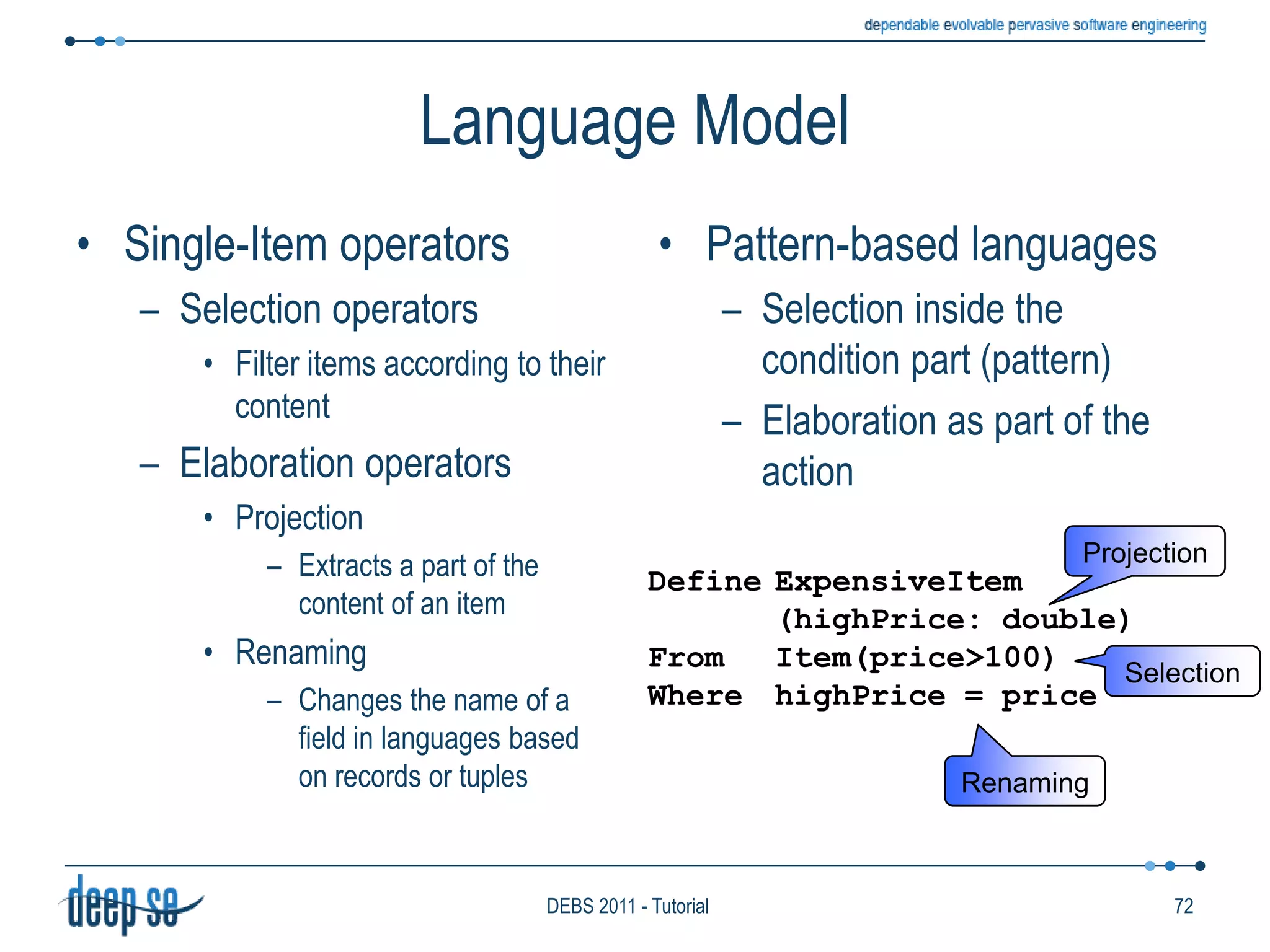
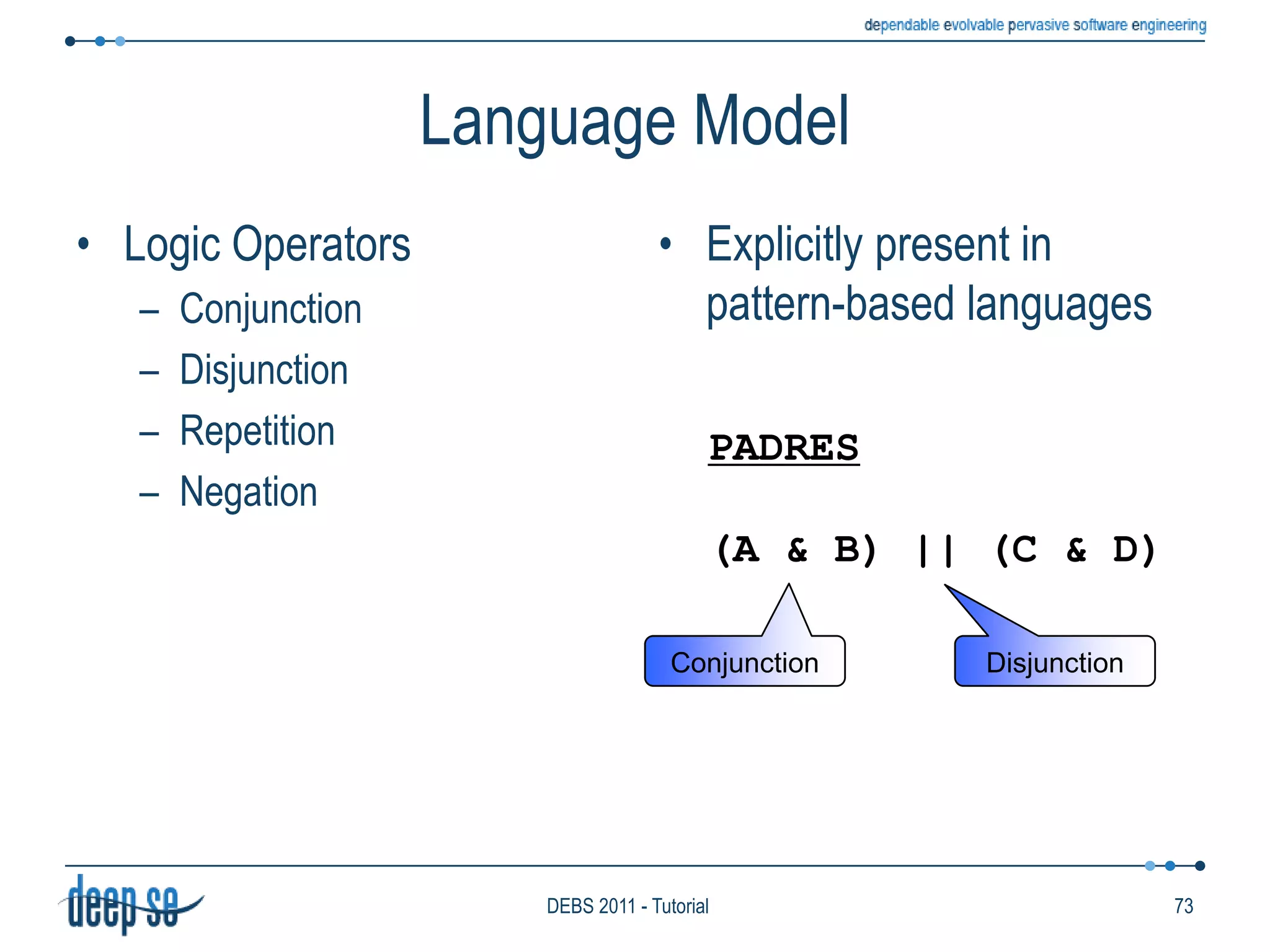
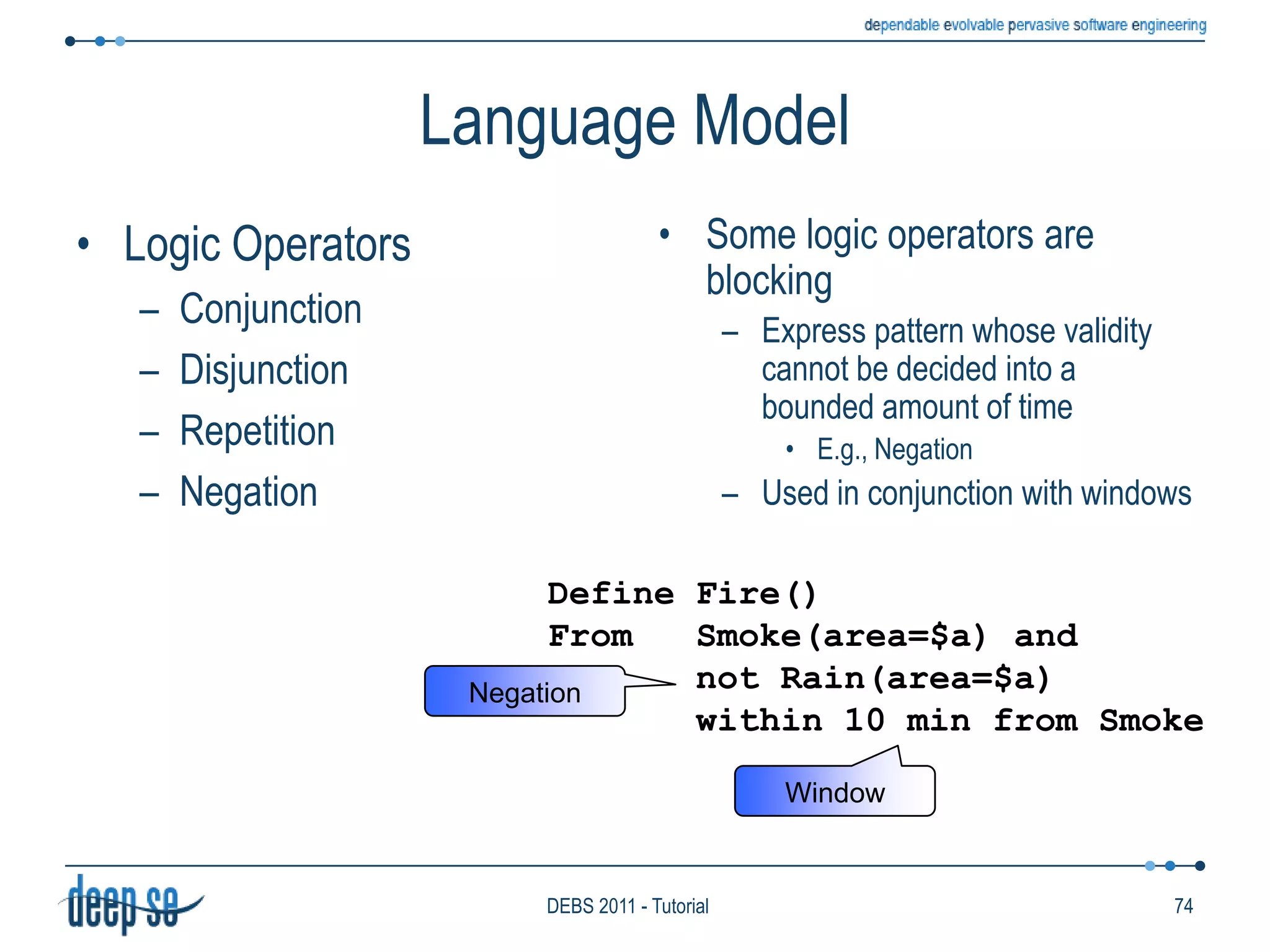
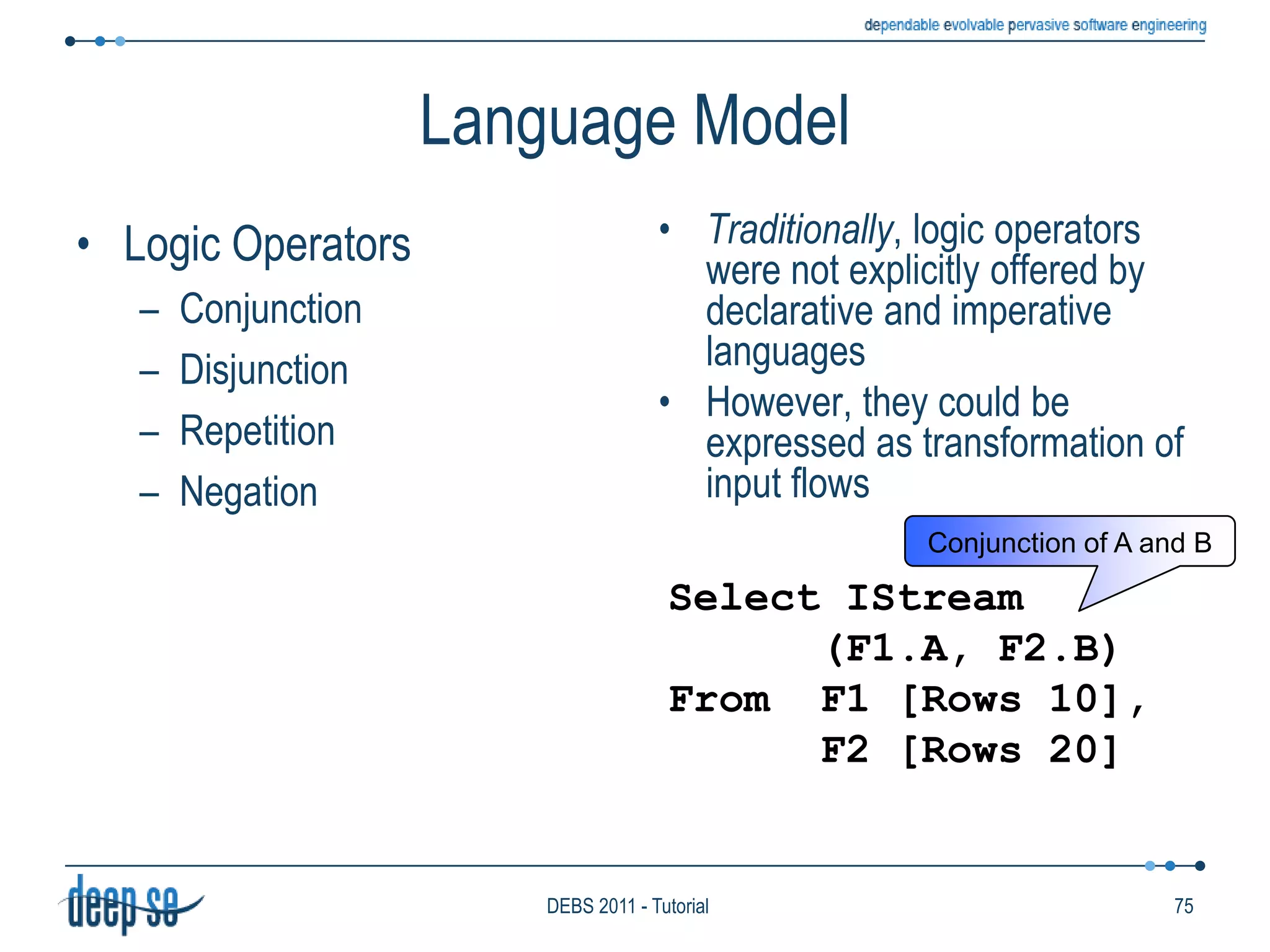
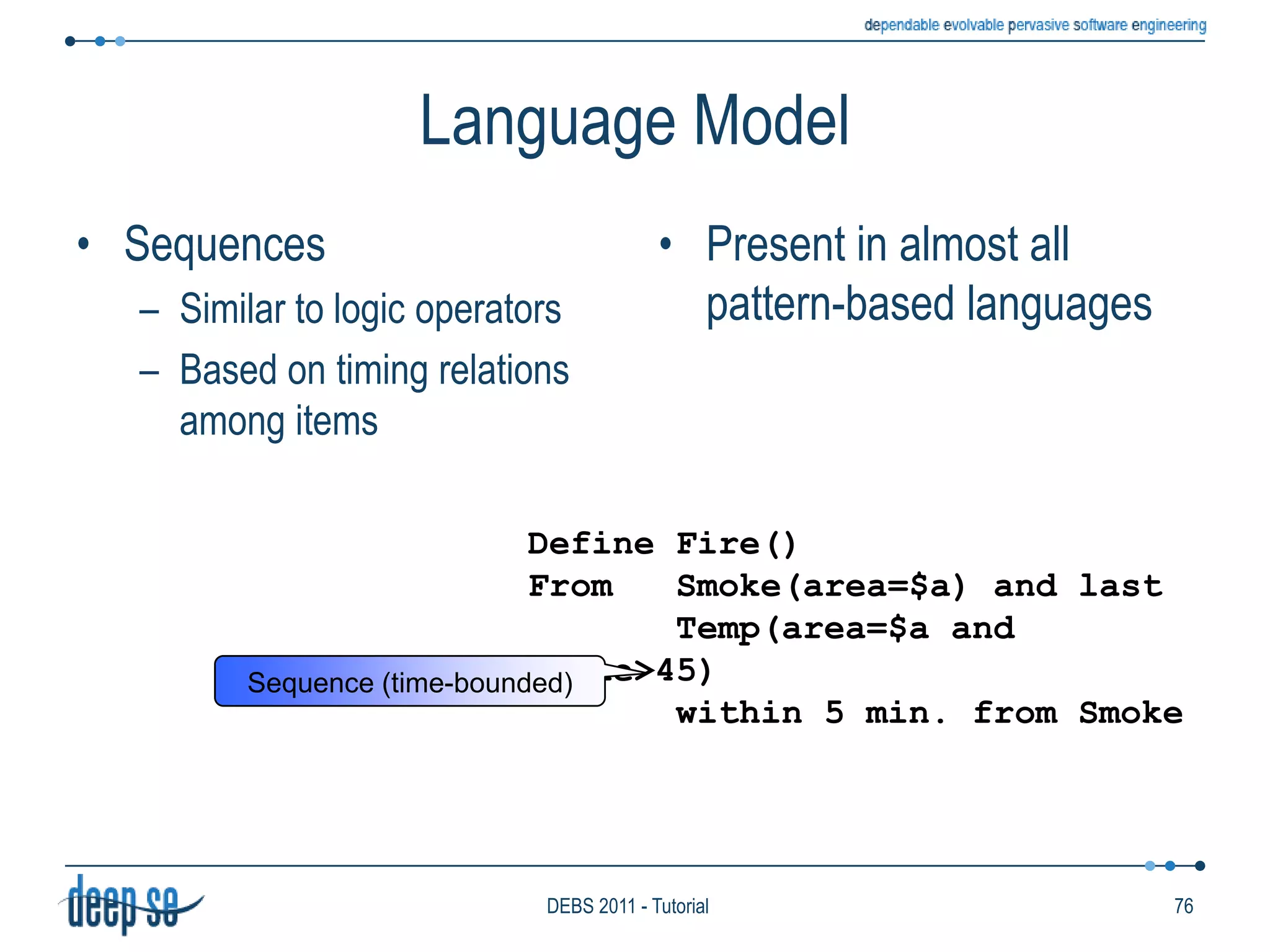

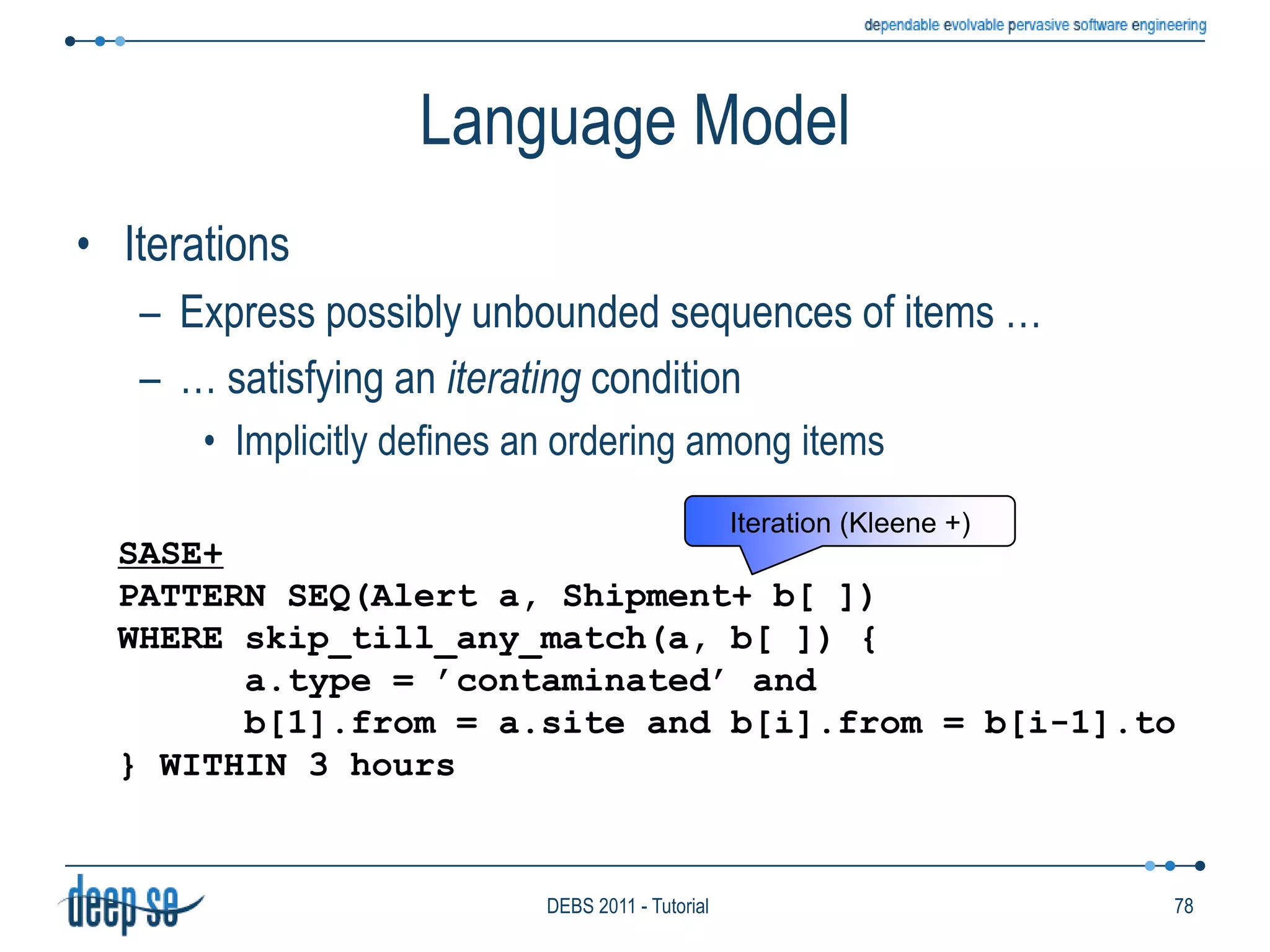
![Nature of ItemsCQL/Stream (Generic Data)SelectIStream(*)From F1[Rows 5], F2[Range 1 Minute]Where F1.A = F2.ATESLA/T-Rex (Event Notifications)Define Fire (area: string,measuredTemp: double) From Smoke(area=$a)and last Temp(area=$a and value>45)within 5 min.from Smoke Where area=Smoke.area andmeasuredTemp=Temp.value55DEBS 2011 - Tutorial](https://image.slidesharecdn.com/tutorialdebs2011export-110712090253-phpapp01/75/Processing-Flows-of-Information-DEBS-2011-79-2048.jpg)
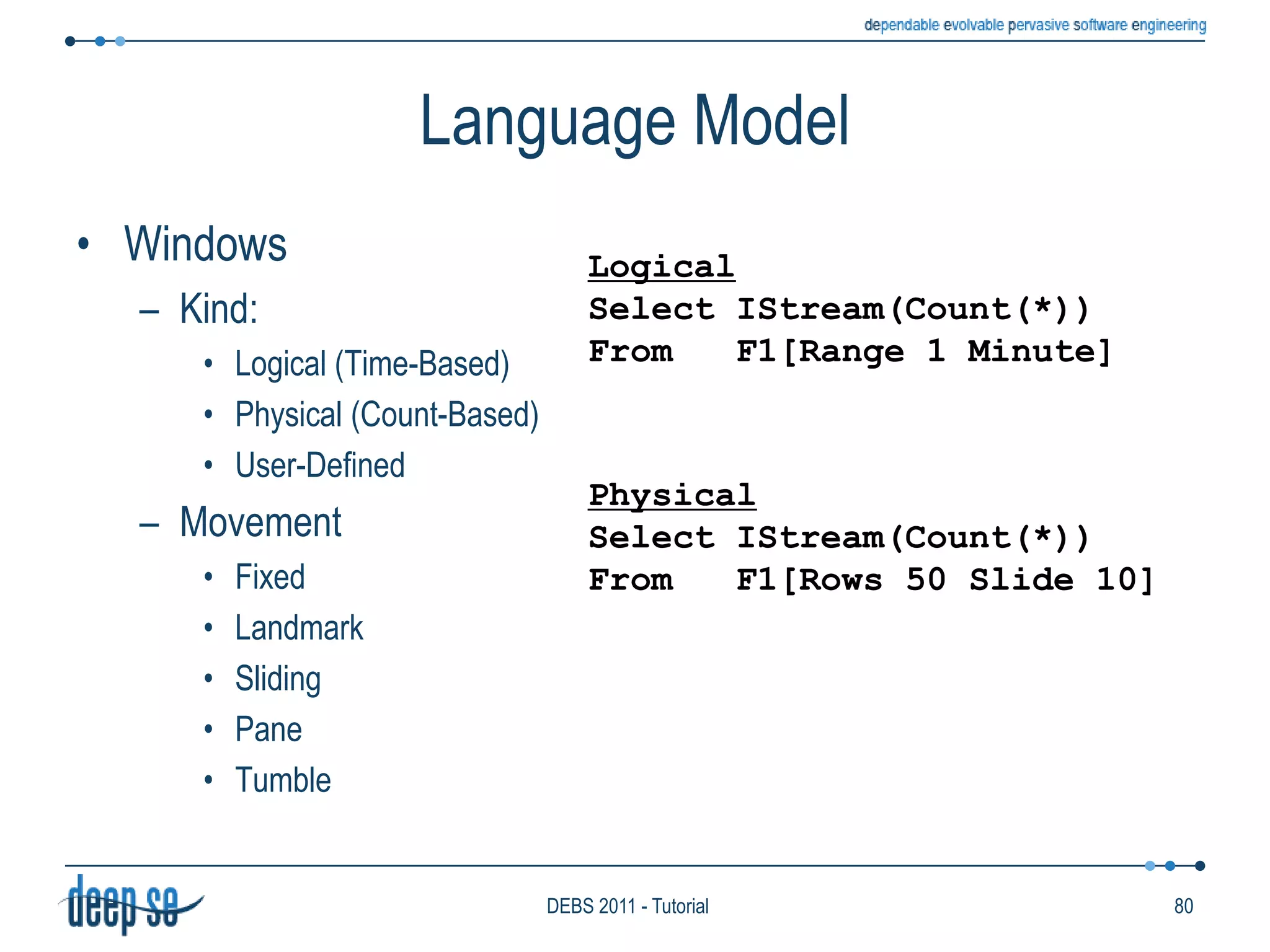

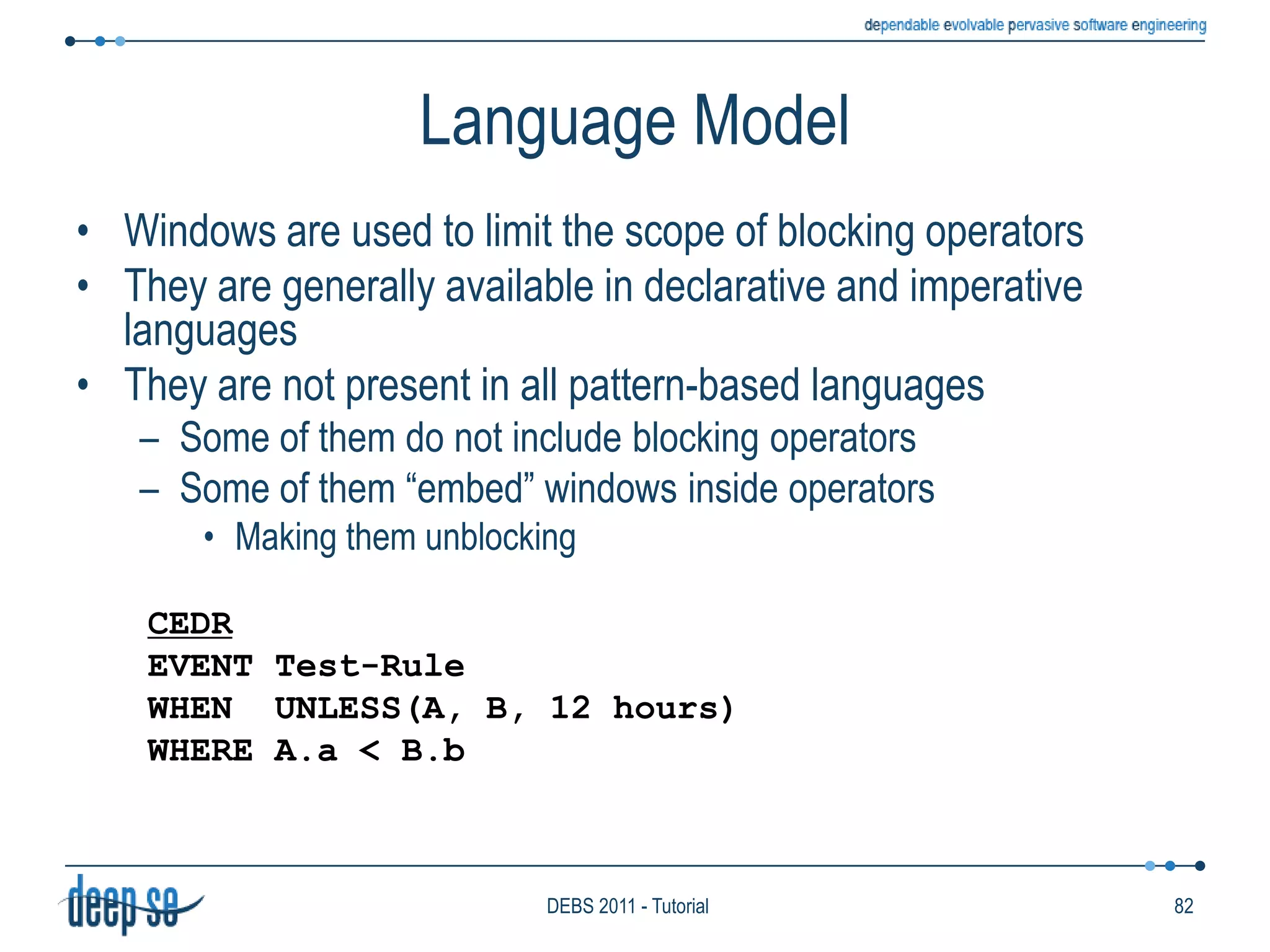
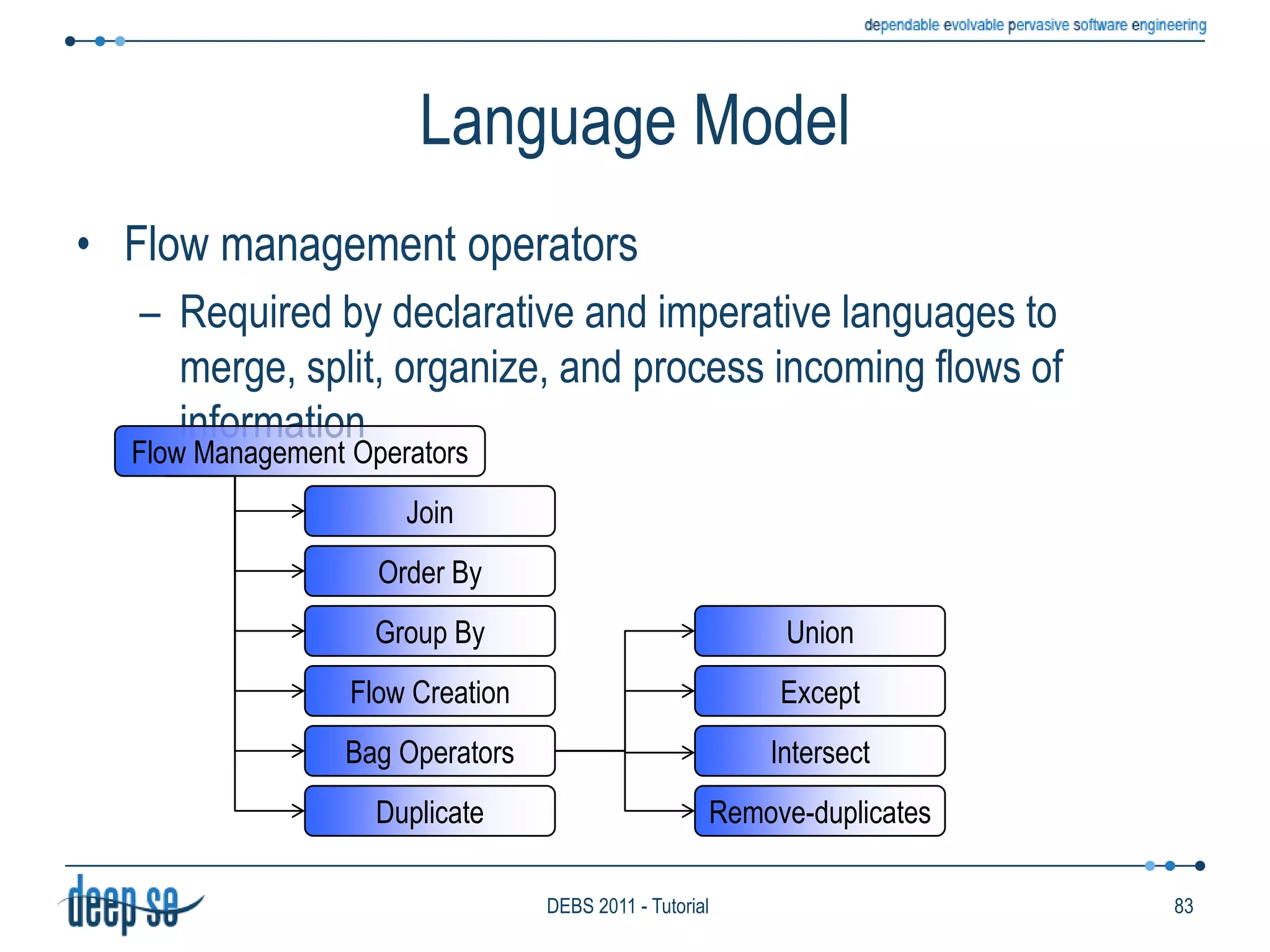
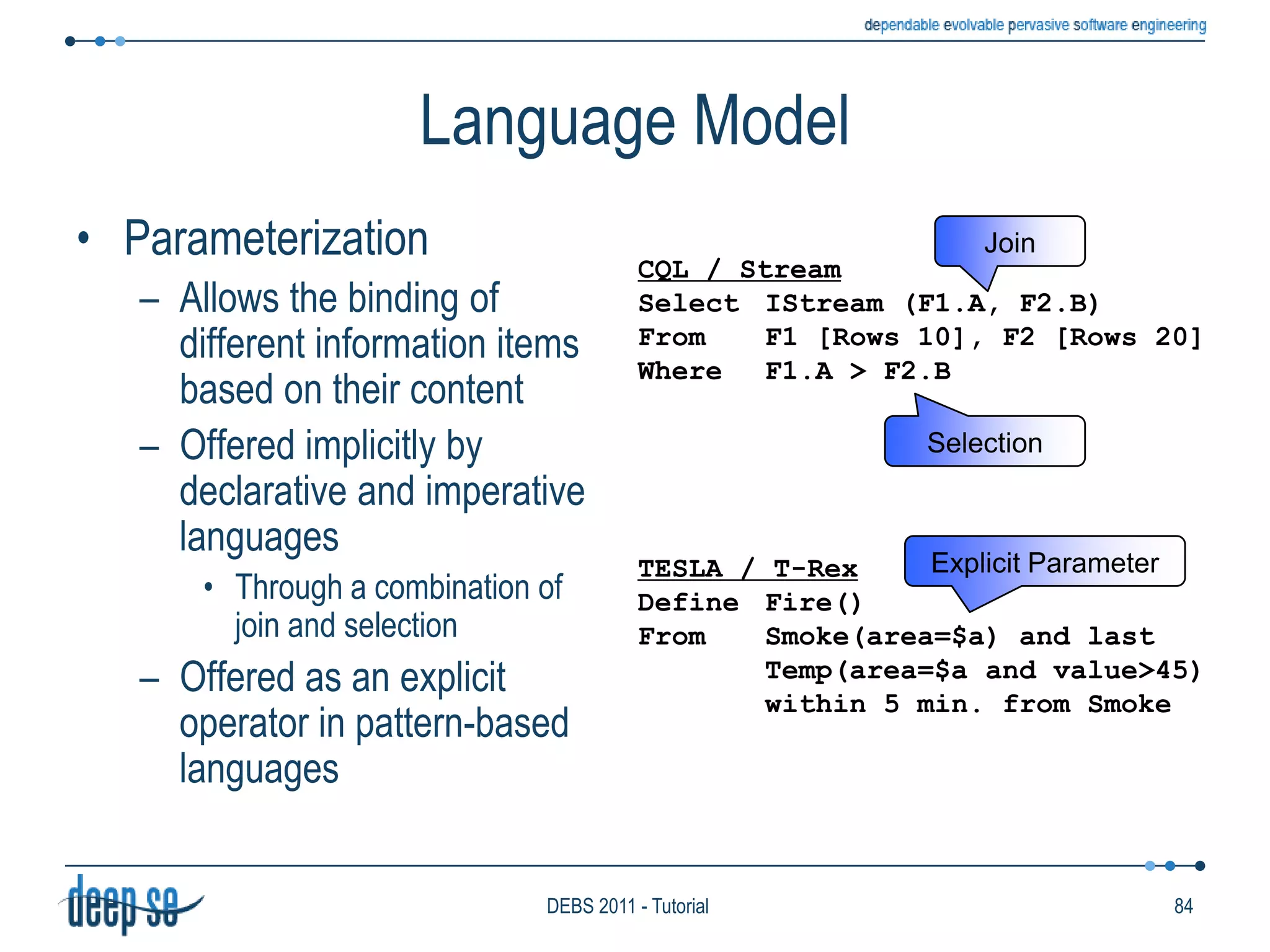
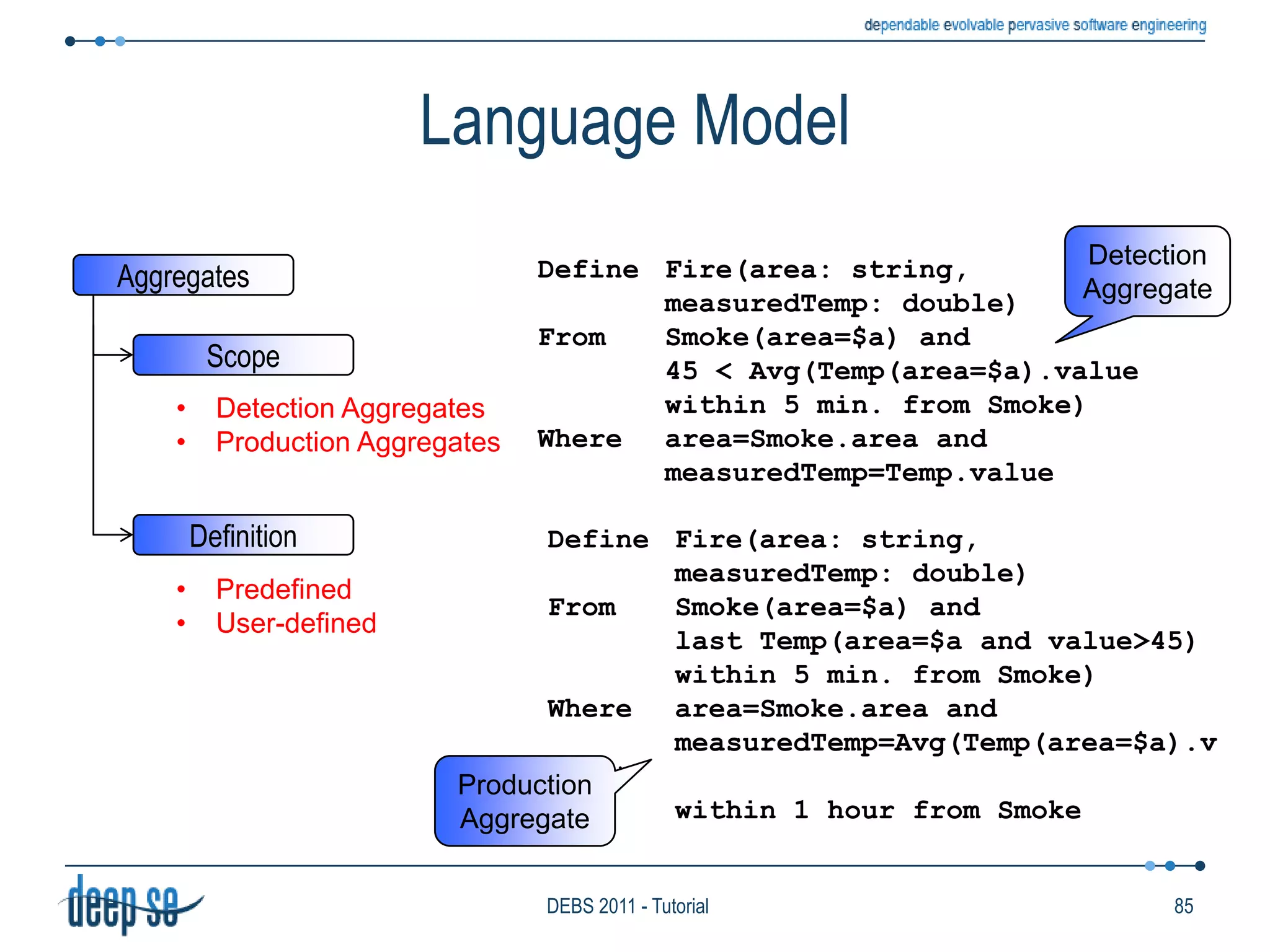
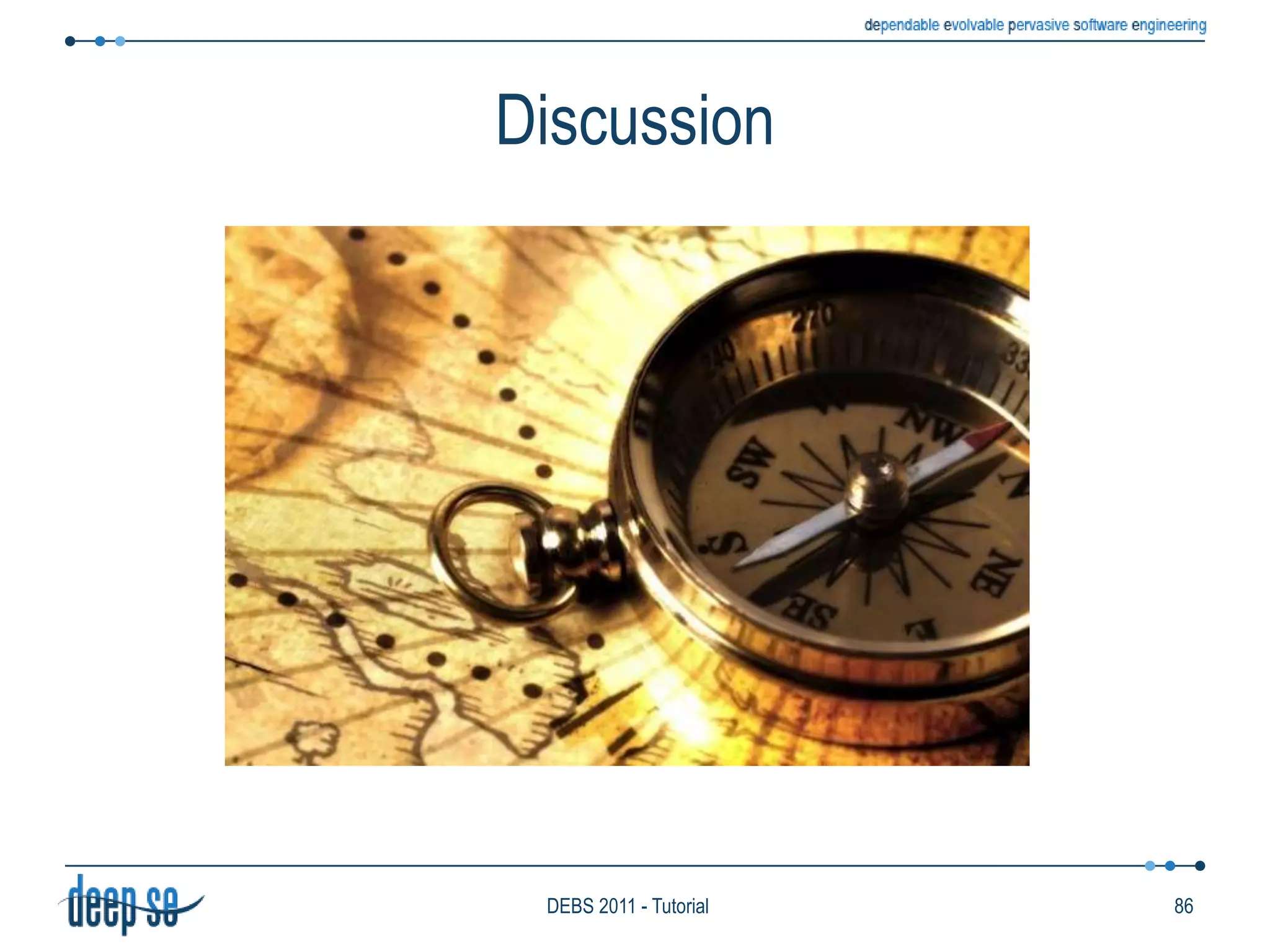
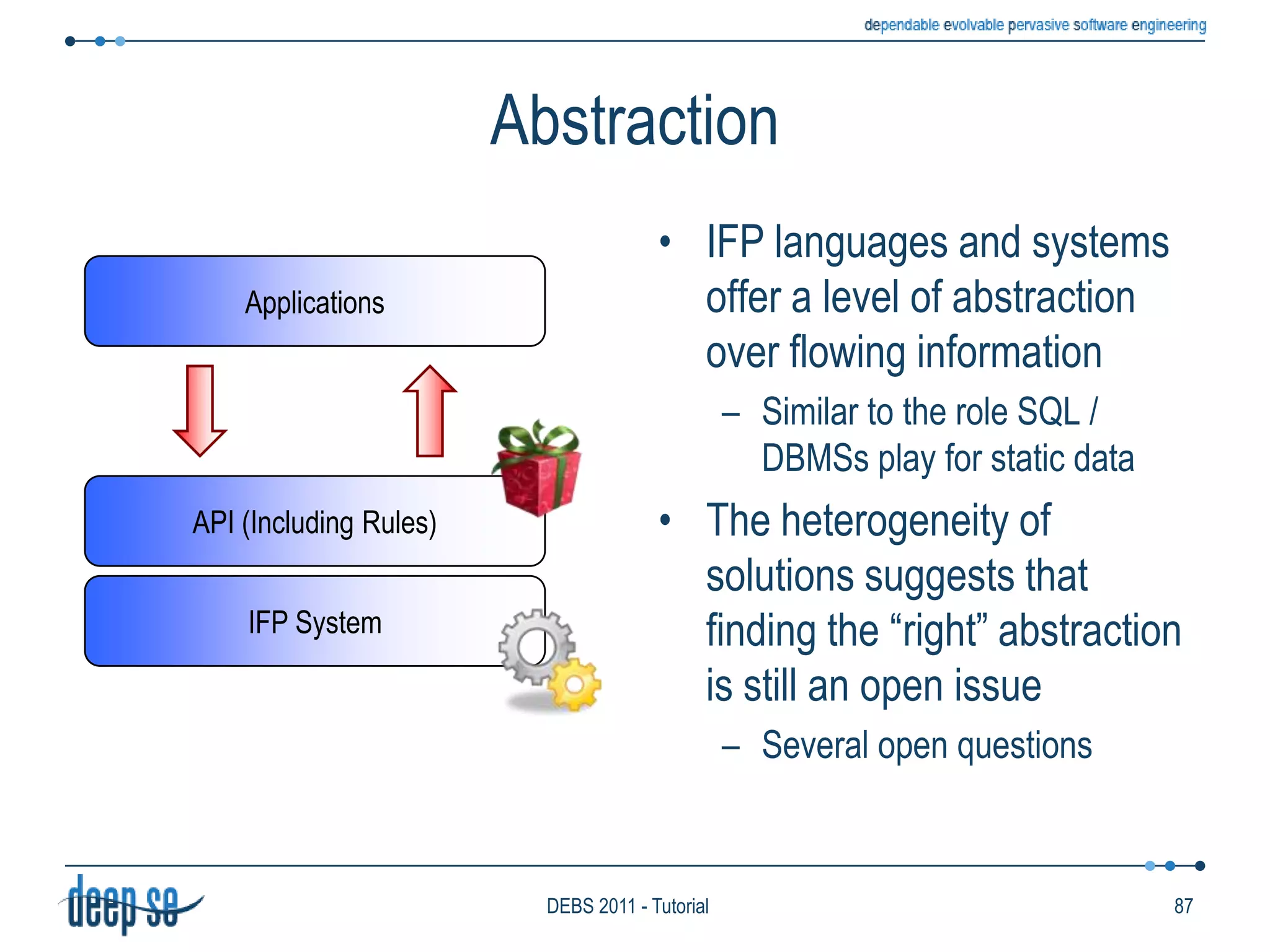
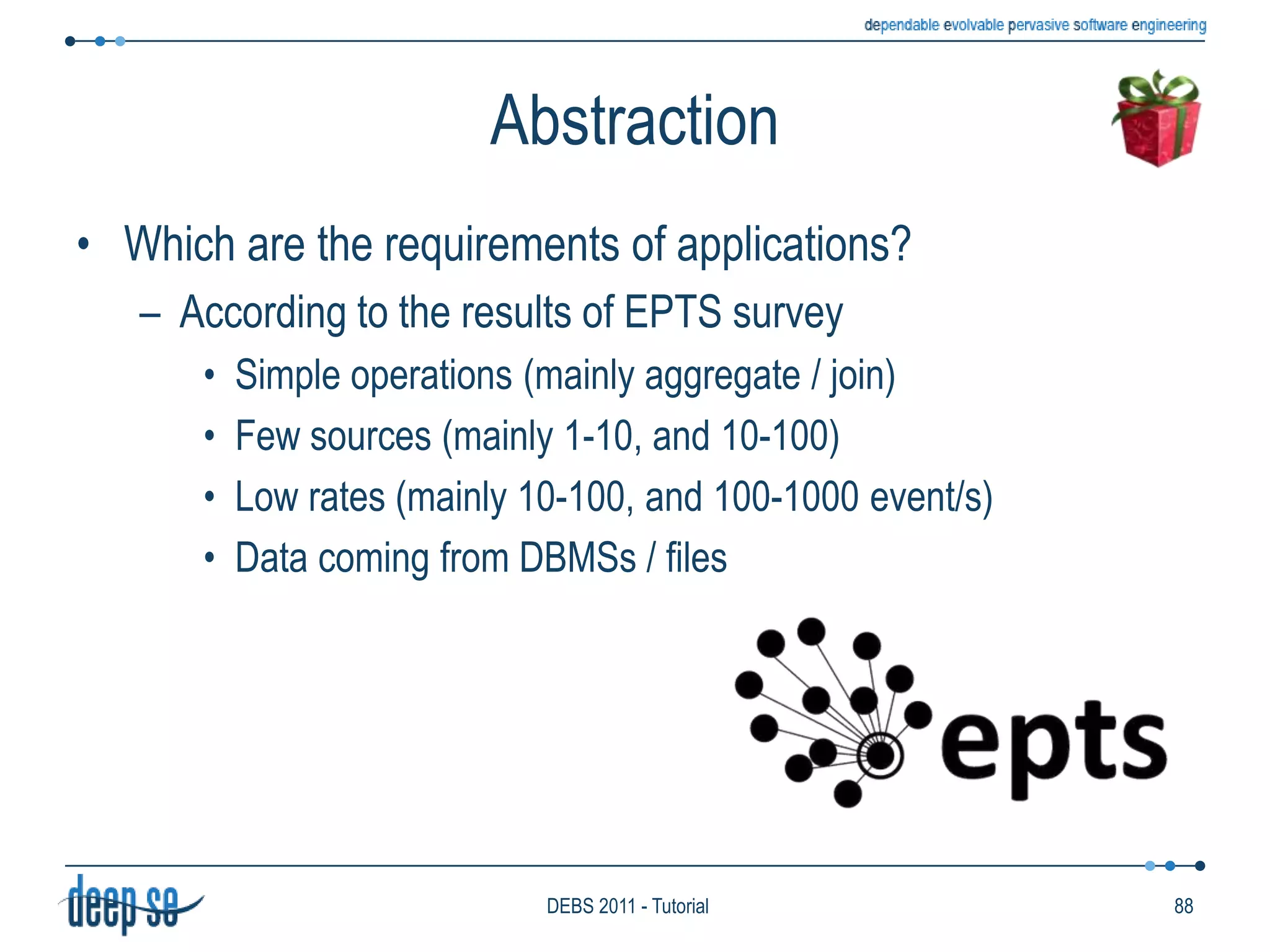

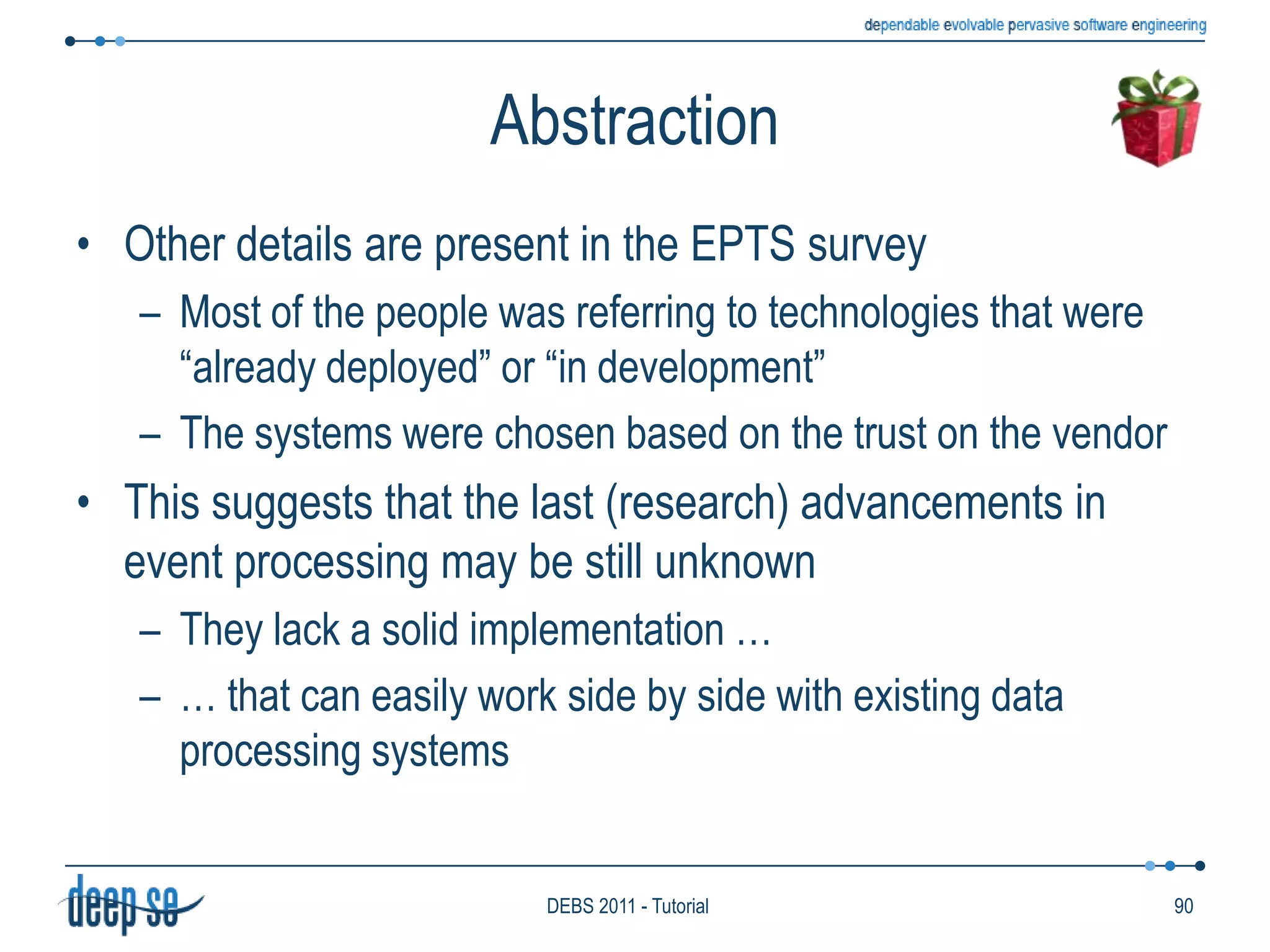

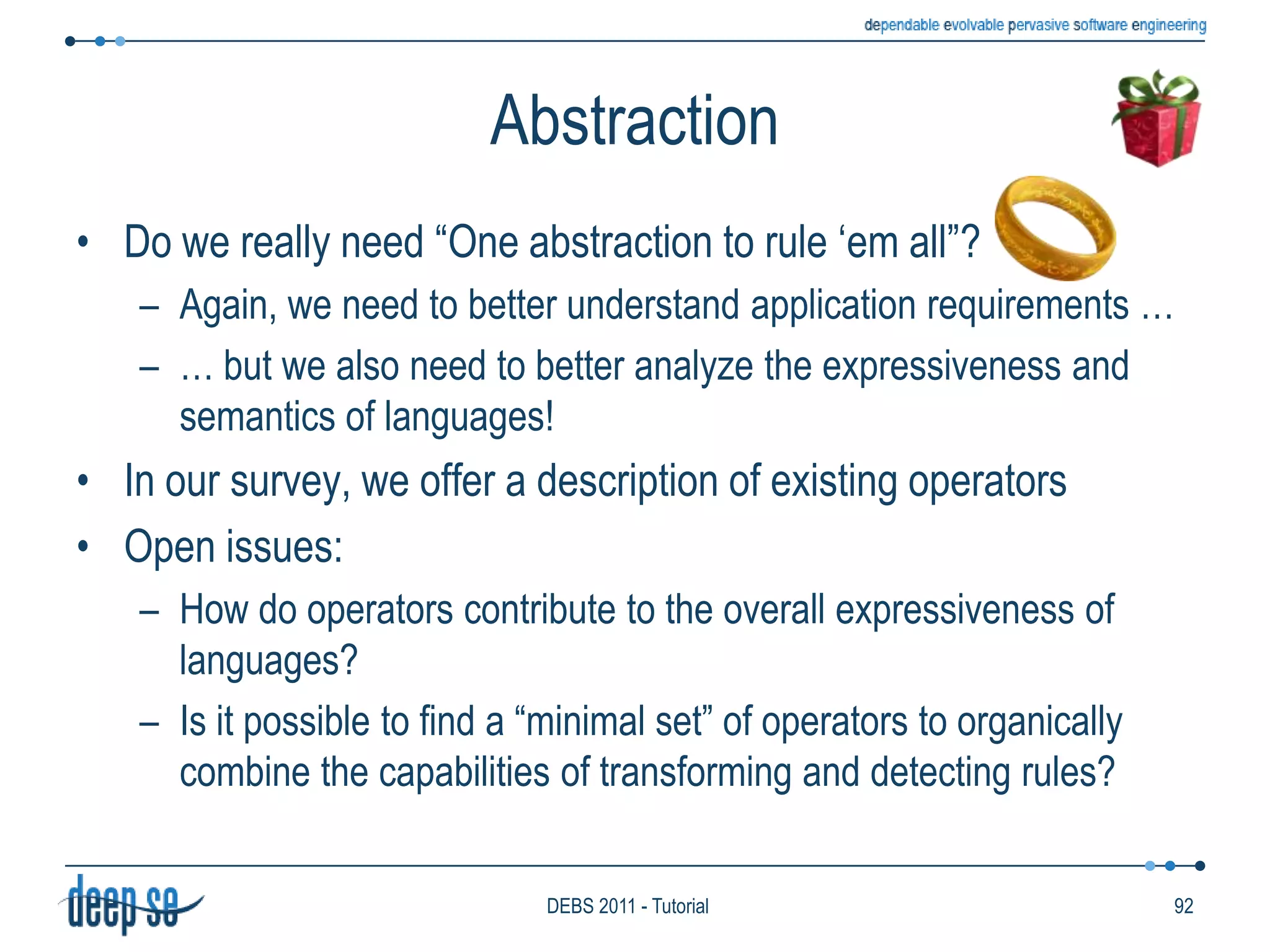
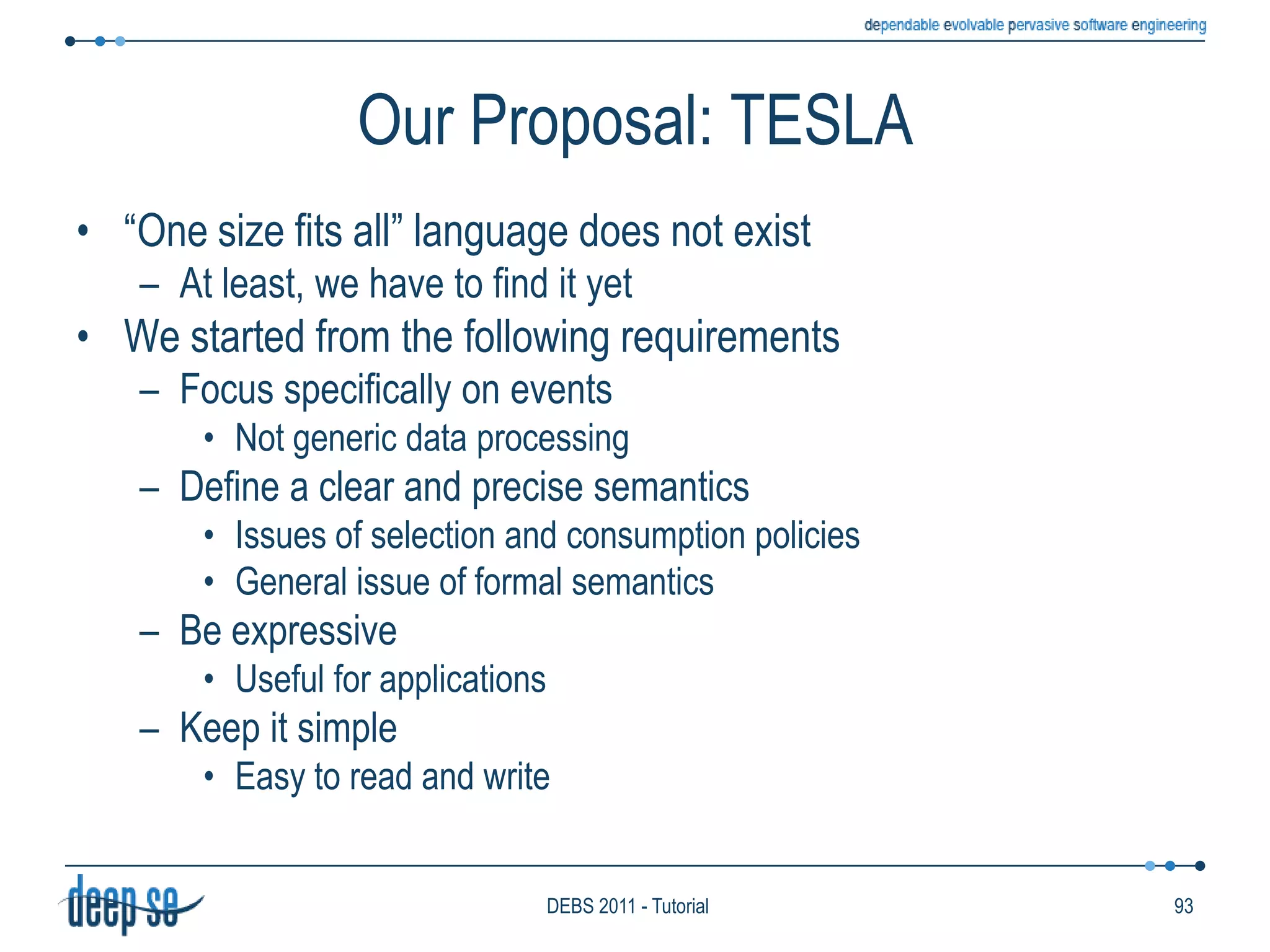
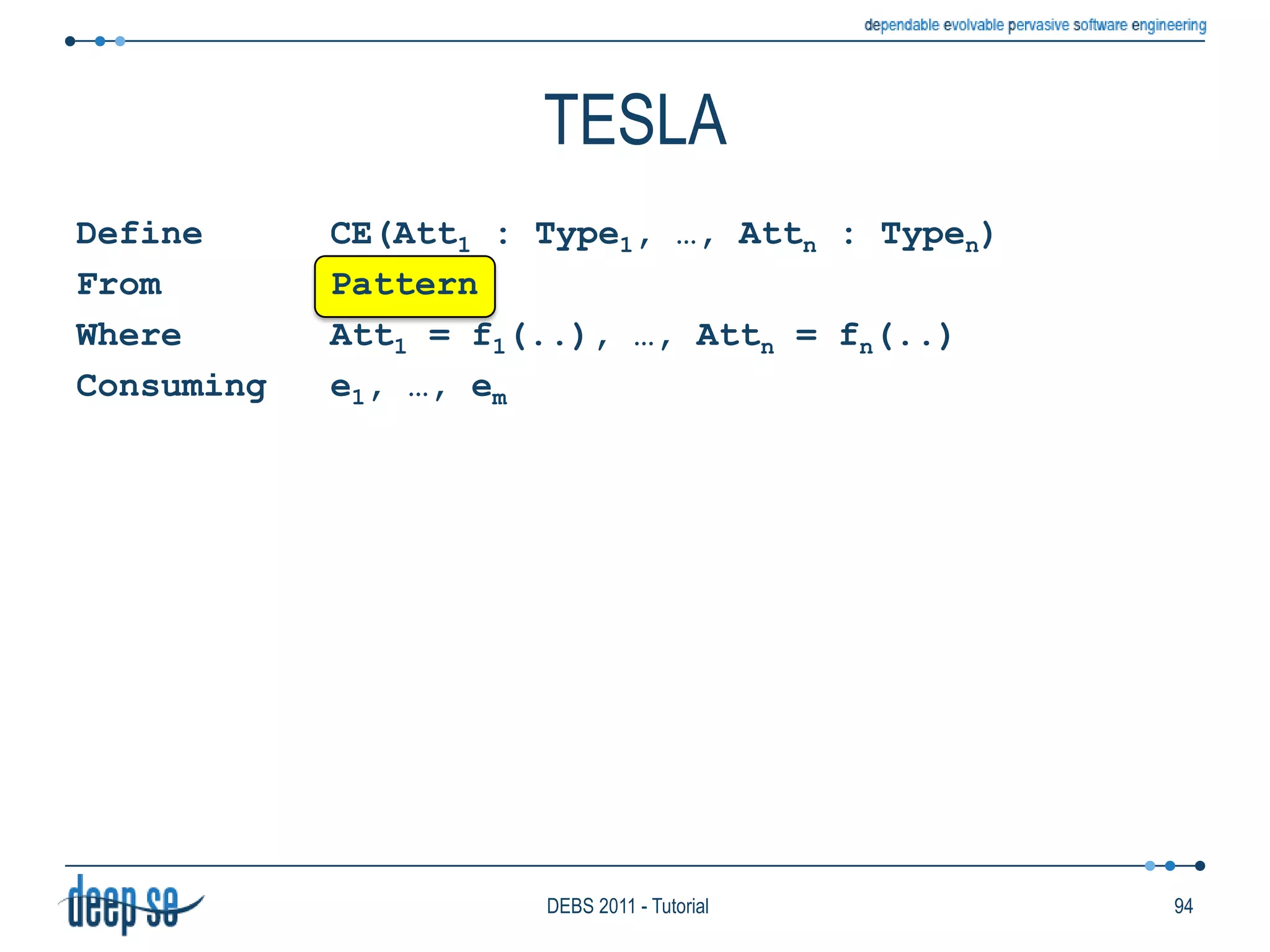
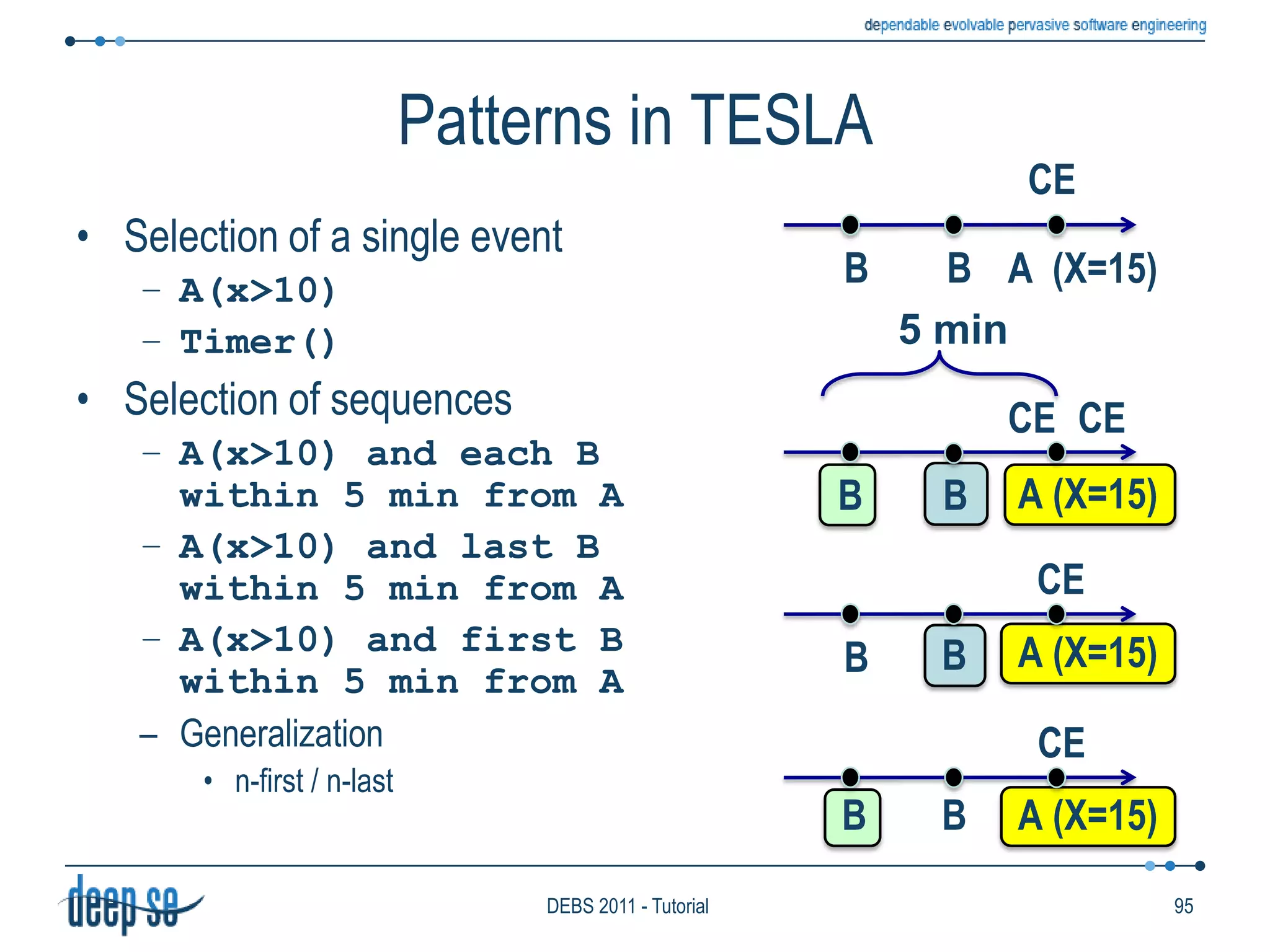
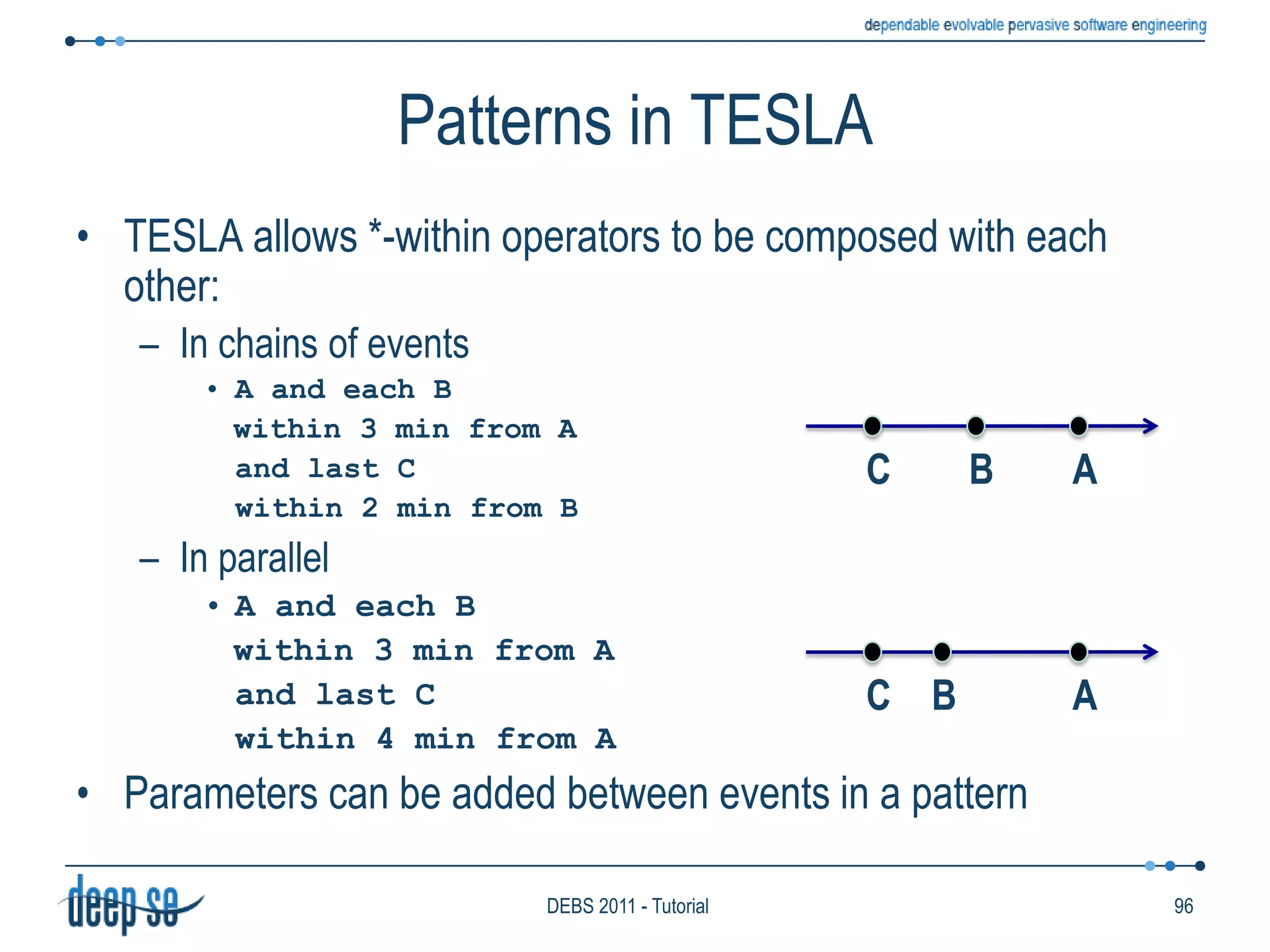
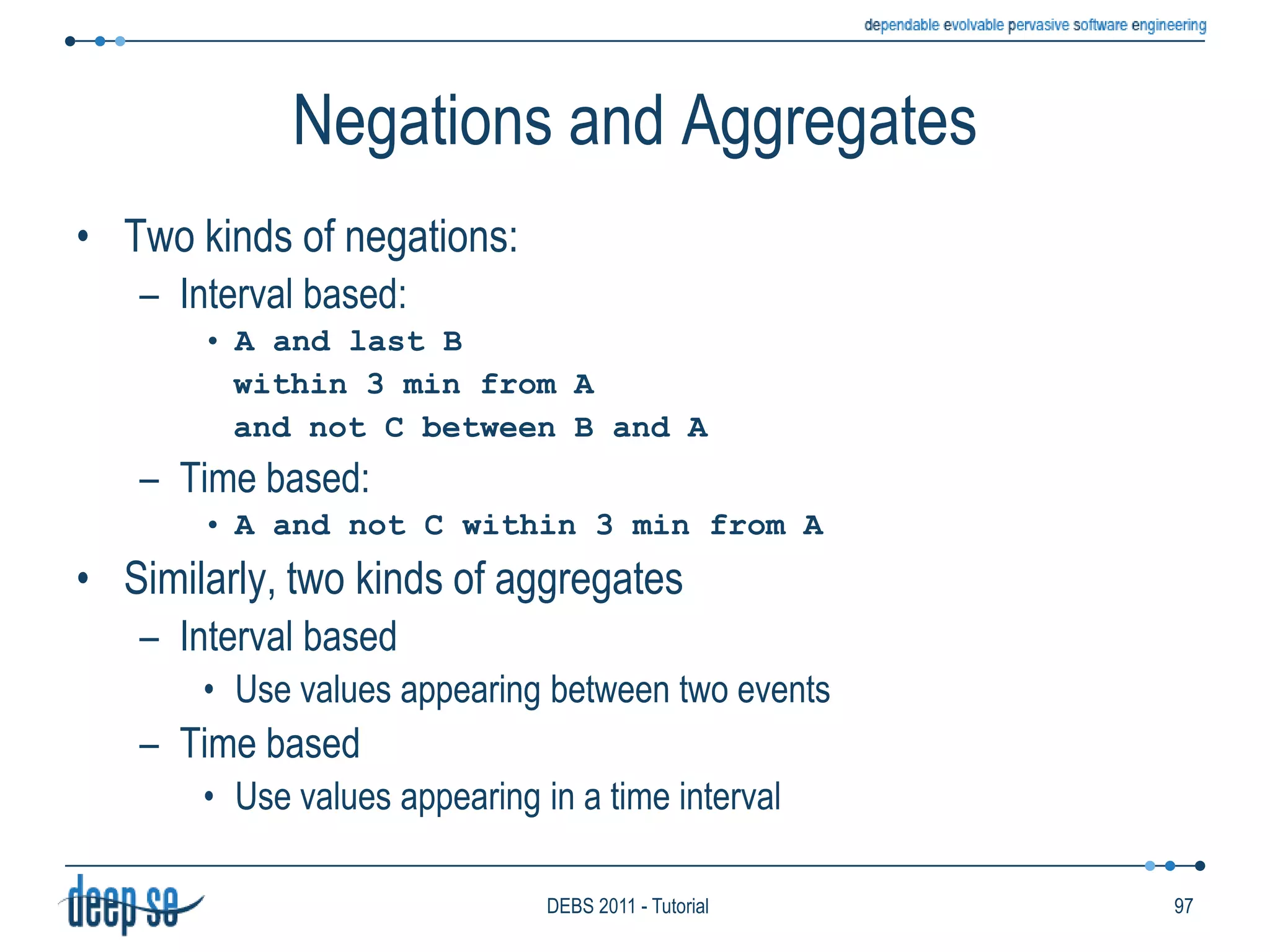
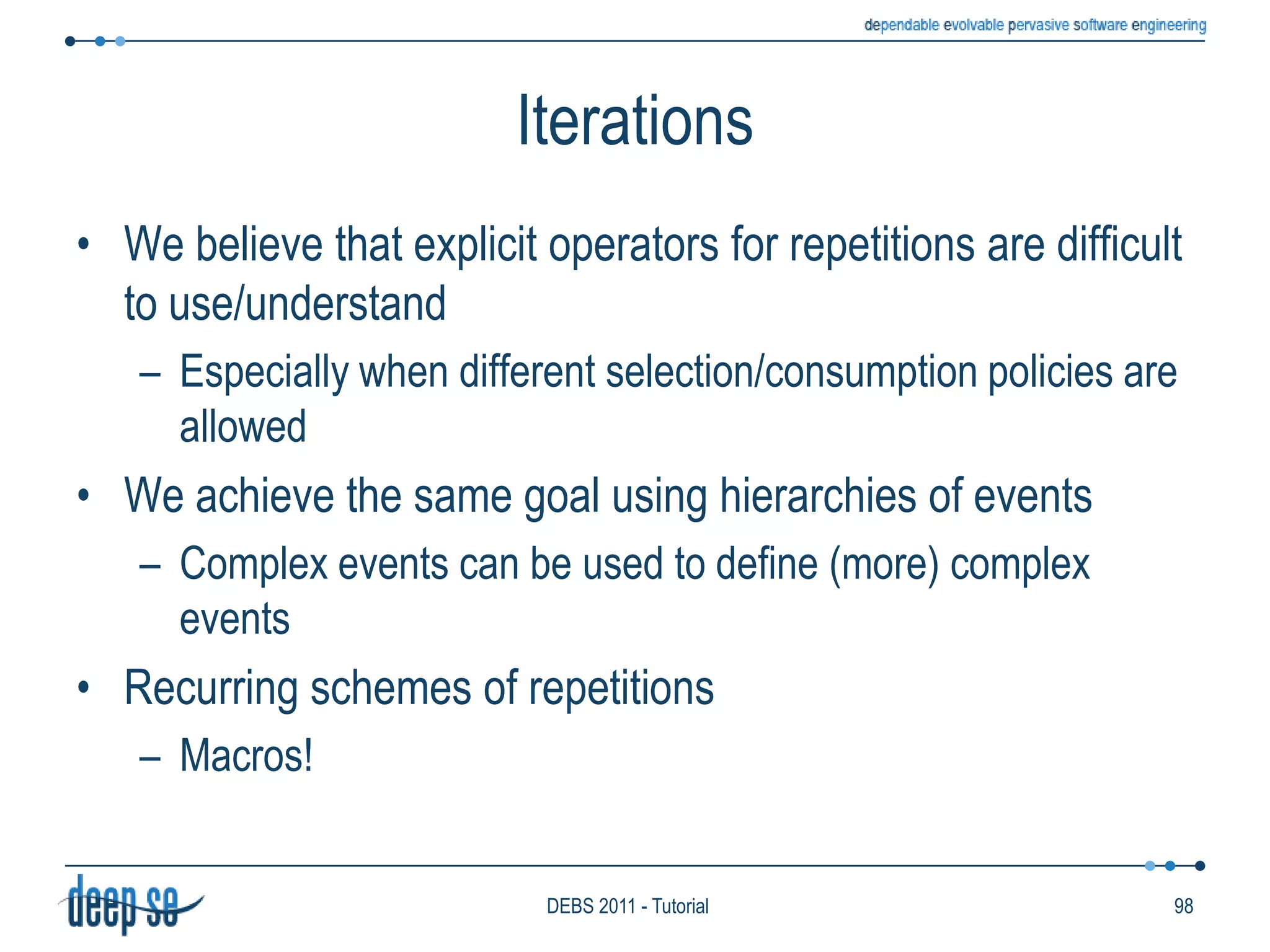
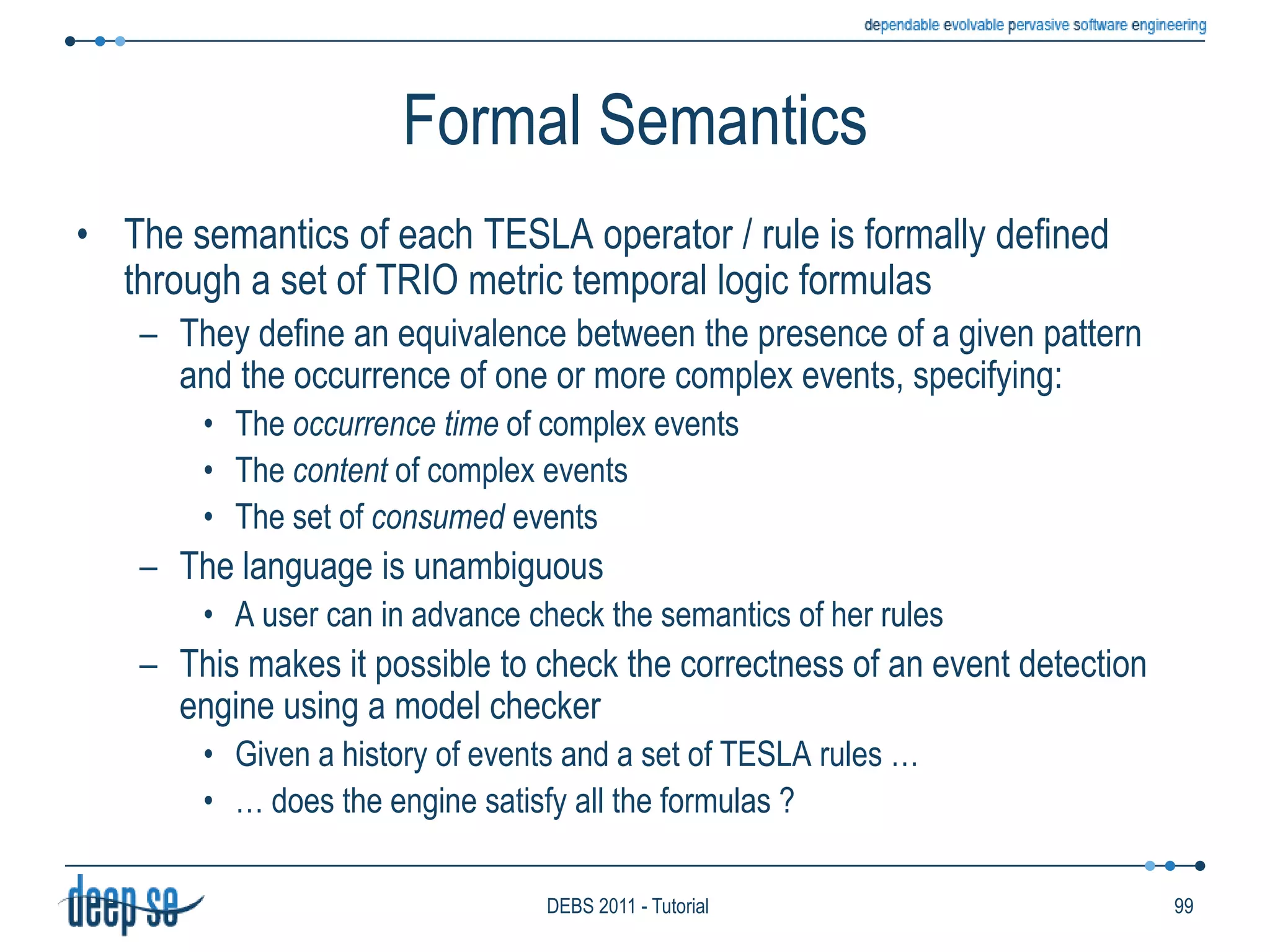

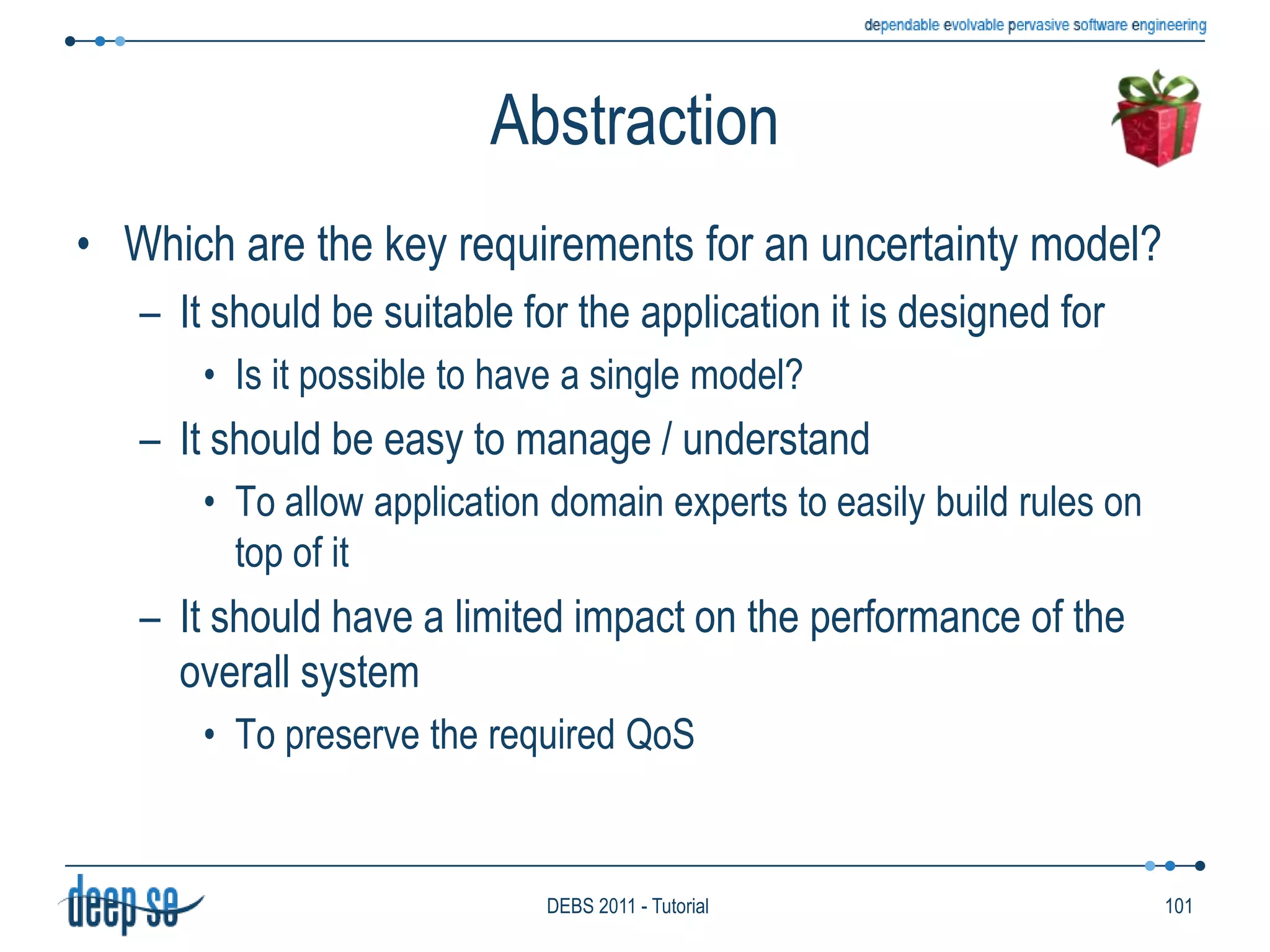
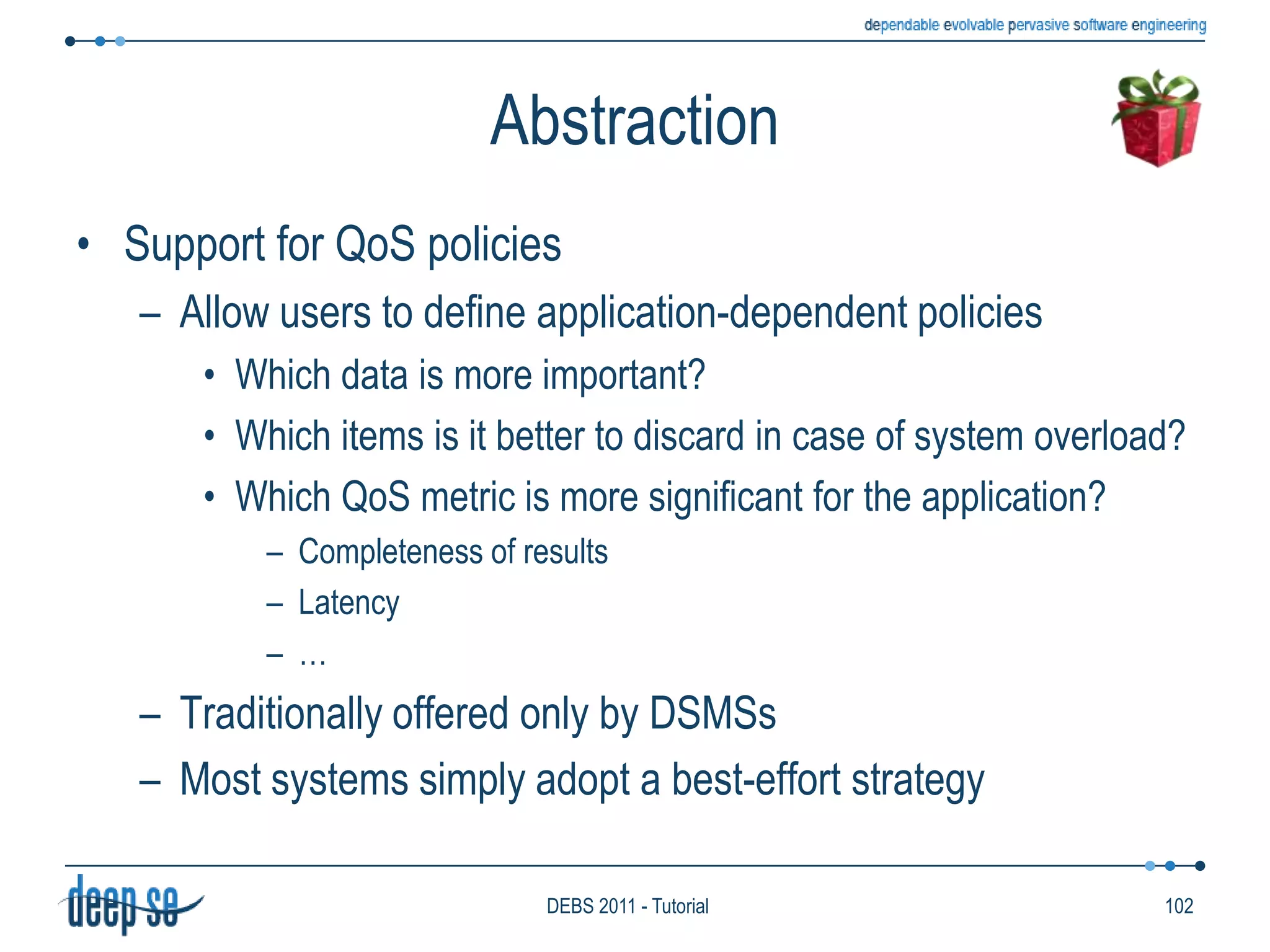

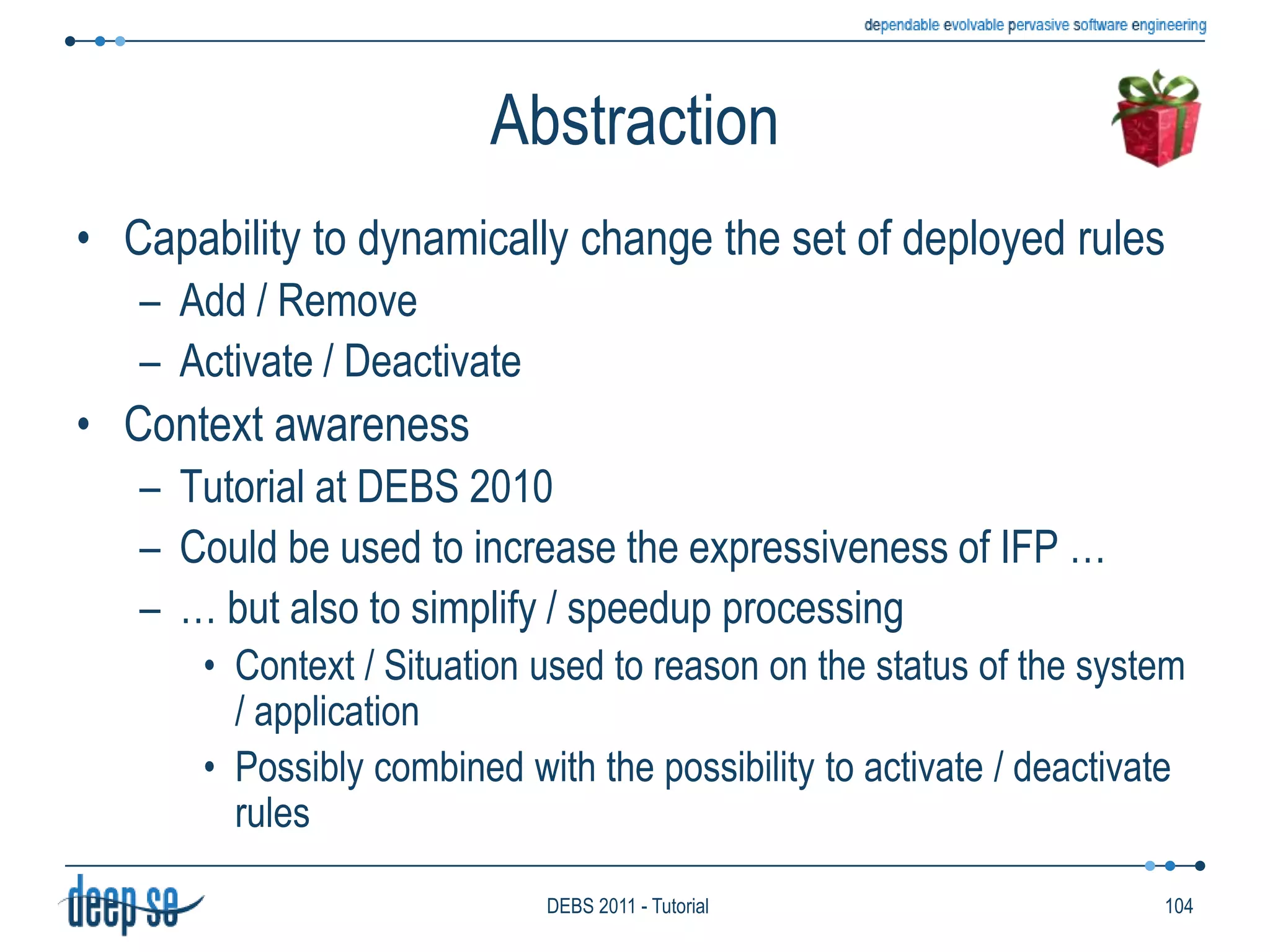

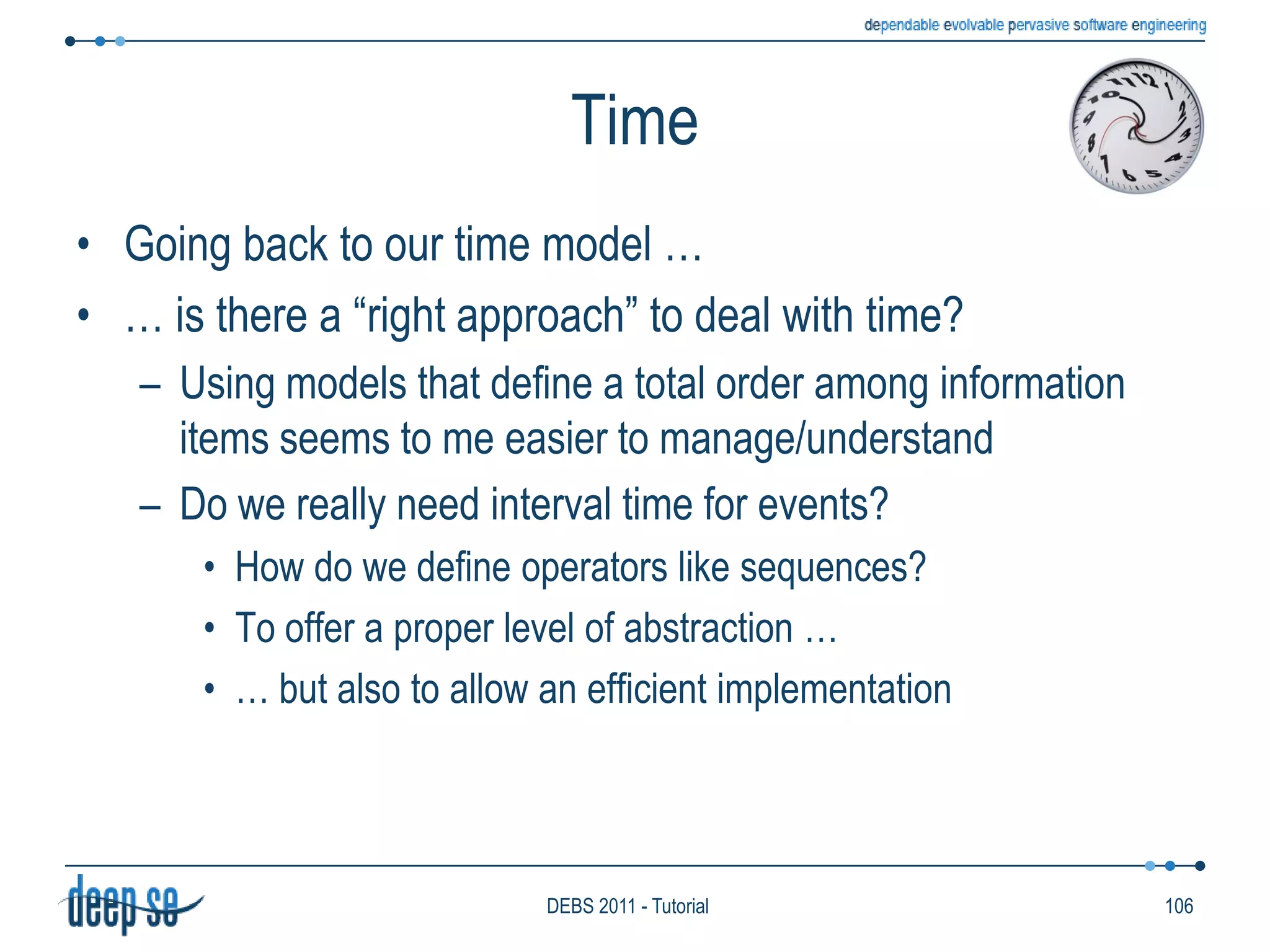
![Following the rule model, we define two classes of languages:Transforming languagesDeclarative languagesImperative languagesDetecting languagesPattern-basedLanguage ModelSpecify the expected result rather than the desired execution flowUsually derive from relational languagesRelational algebra / SQLCQL/Stream:Select IStream(*)From F1[Rows 5], F2[Rows 10]Where F1.A = F2.A64DEBS 2011 - Tutorial](https://image.slidesharecdn.com/tutorialdebs2011export-110712090253-phpapp01/75/Processing-Flows-of-Information-DEBS-2011-107-2048.jpg)

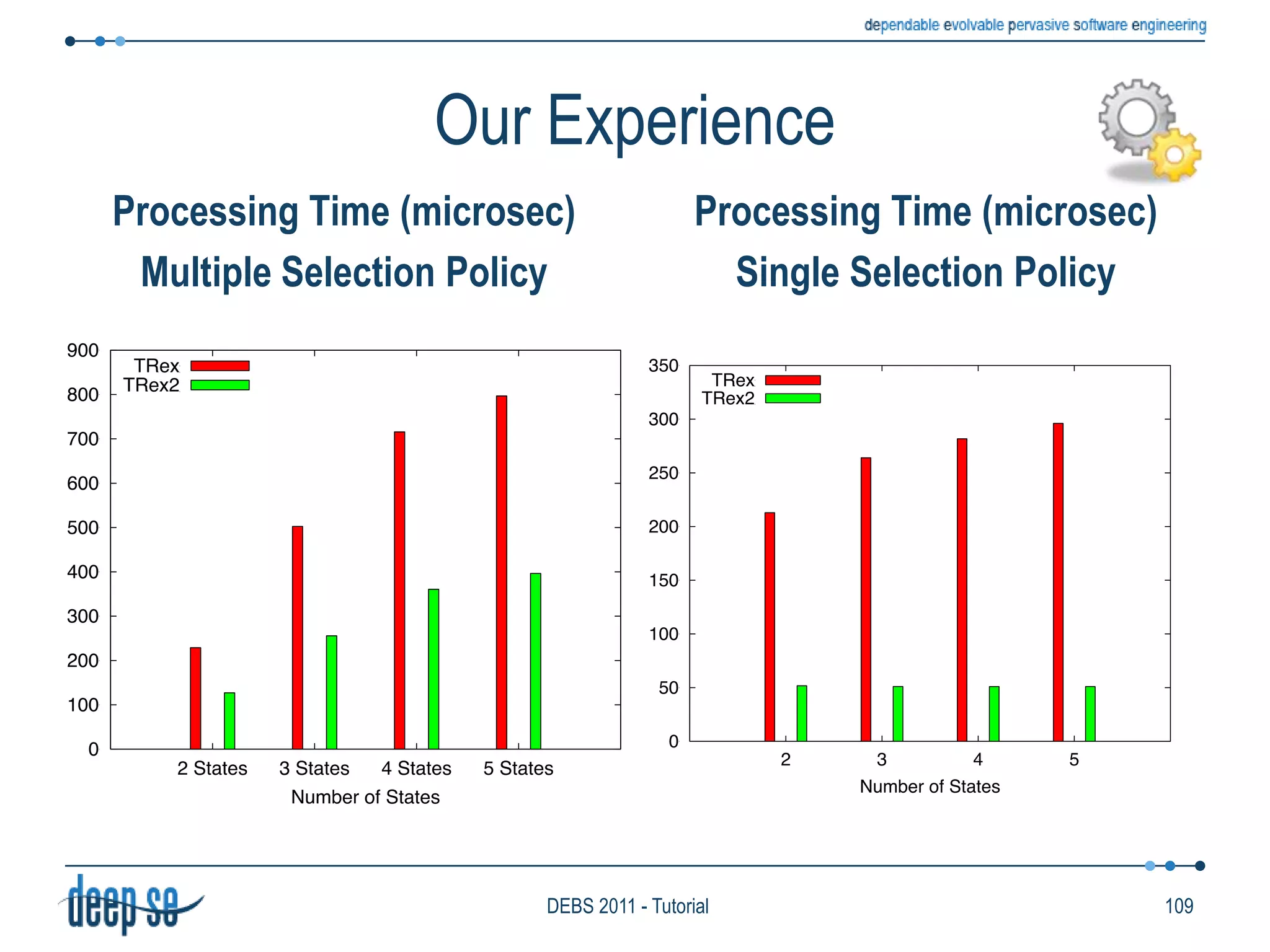
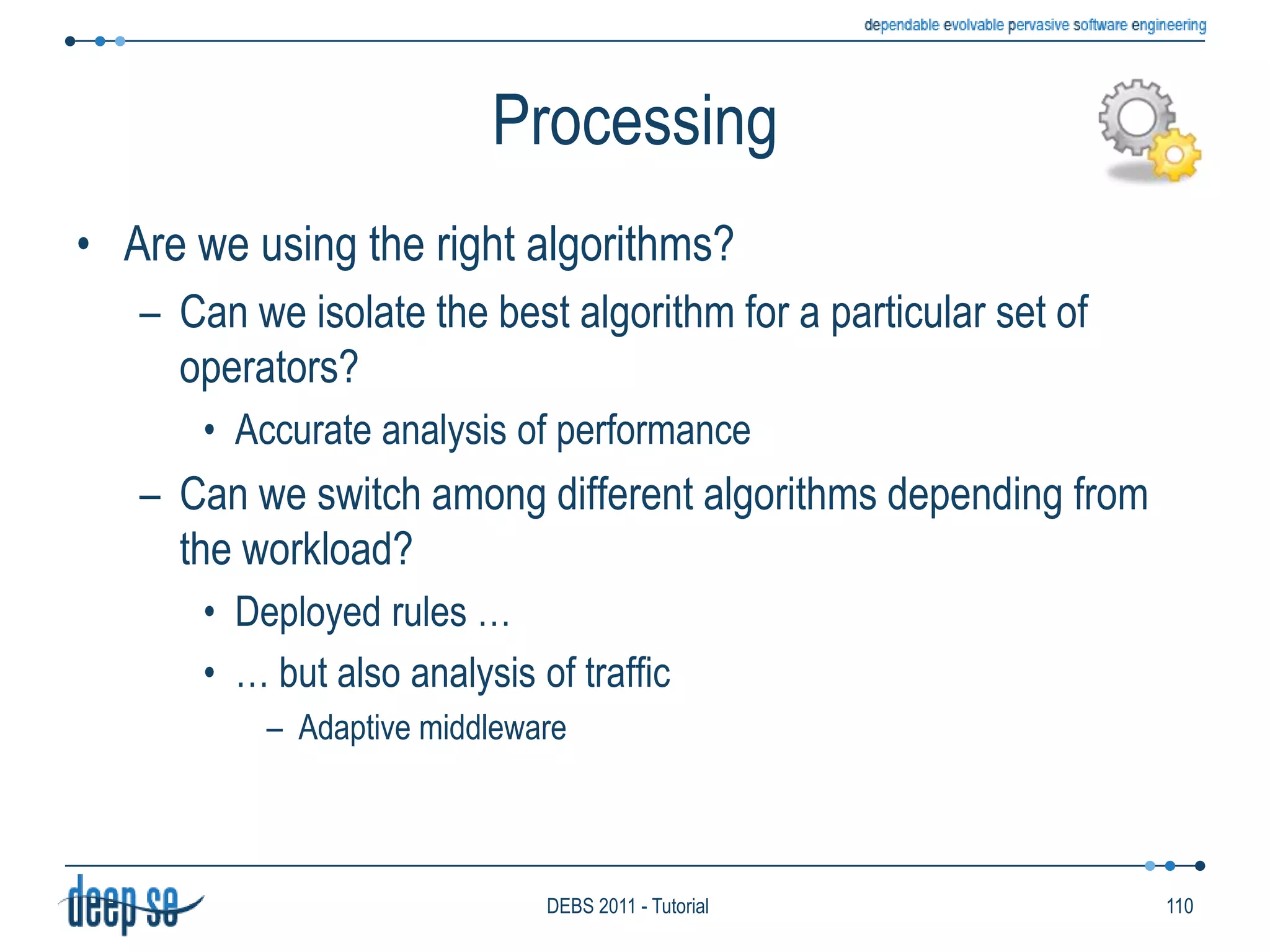
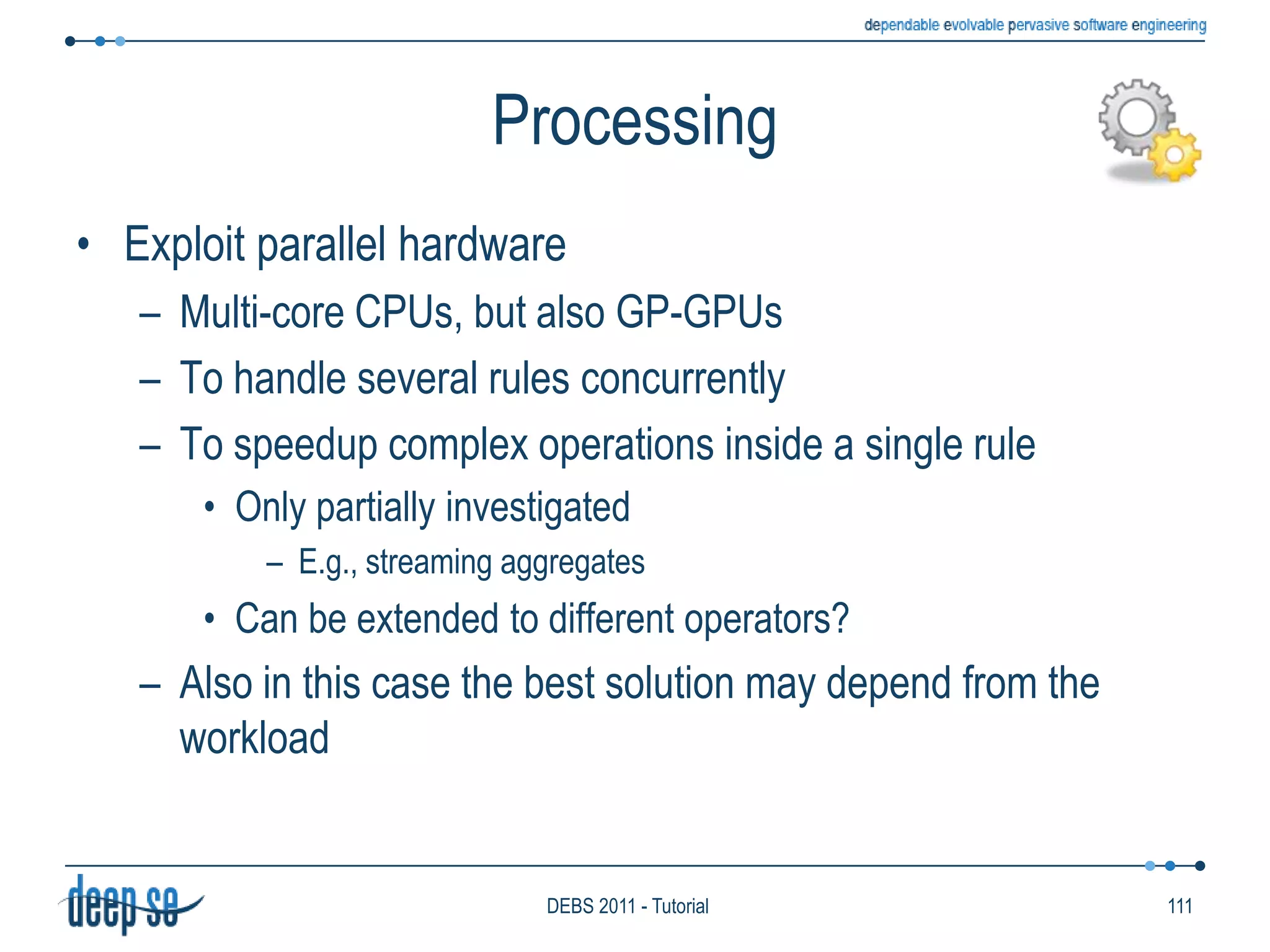
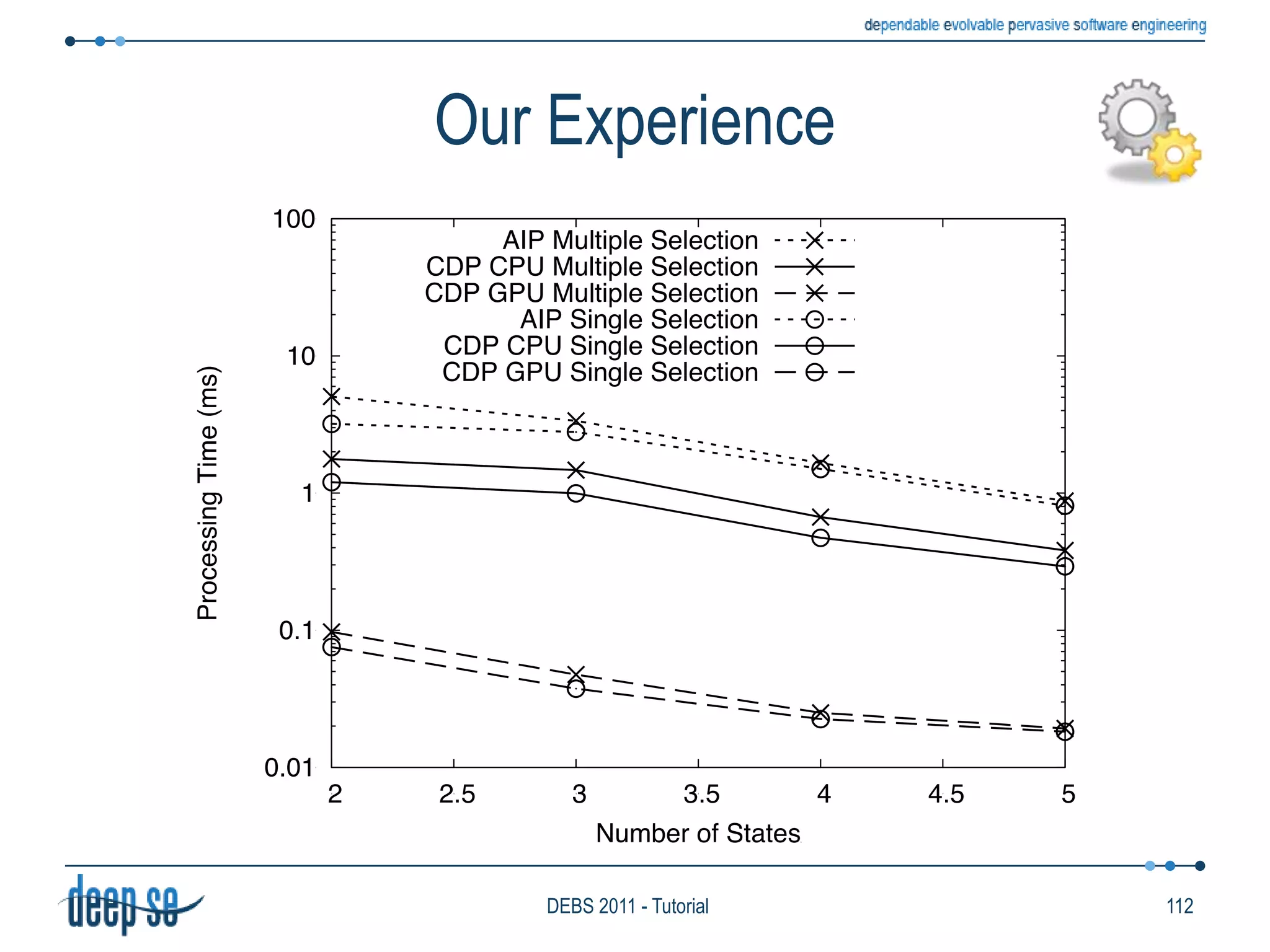
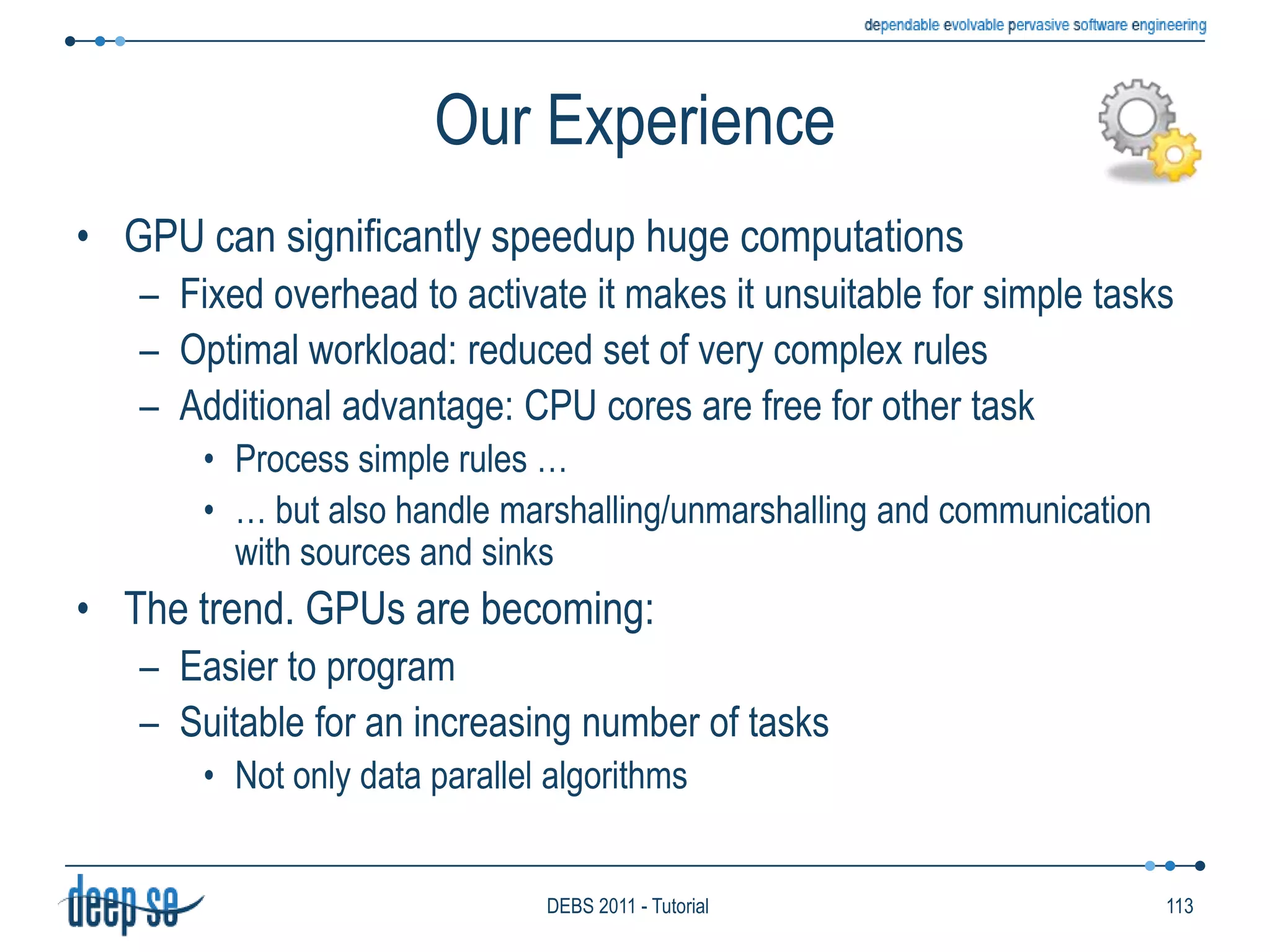
![Language ModelSingle-Item operatorsSelection operatorsFilter items according to their contentElaboration operatorsProjectionExtracts a part of the content of an itemRenamingChanges the name of a field in languages based on records or tuplesPresent in all languagesDefined as primitive operators in imperative languagesDeclarative languages inherit selection, projection, and renaming from relational algebraRenamingSelect RStream(I.Price as HighPrice)From Items[Rows 1] as IWhere I.Price > 100ProjectionSelection71DEBS 2011 - Tutorial](https://image.slidesharecdn.com/tutorialdebs2011export-110712090253-phpapp01/75/Processing-Flows-of-Information-DEBS-2011-114-2048.jpg)
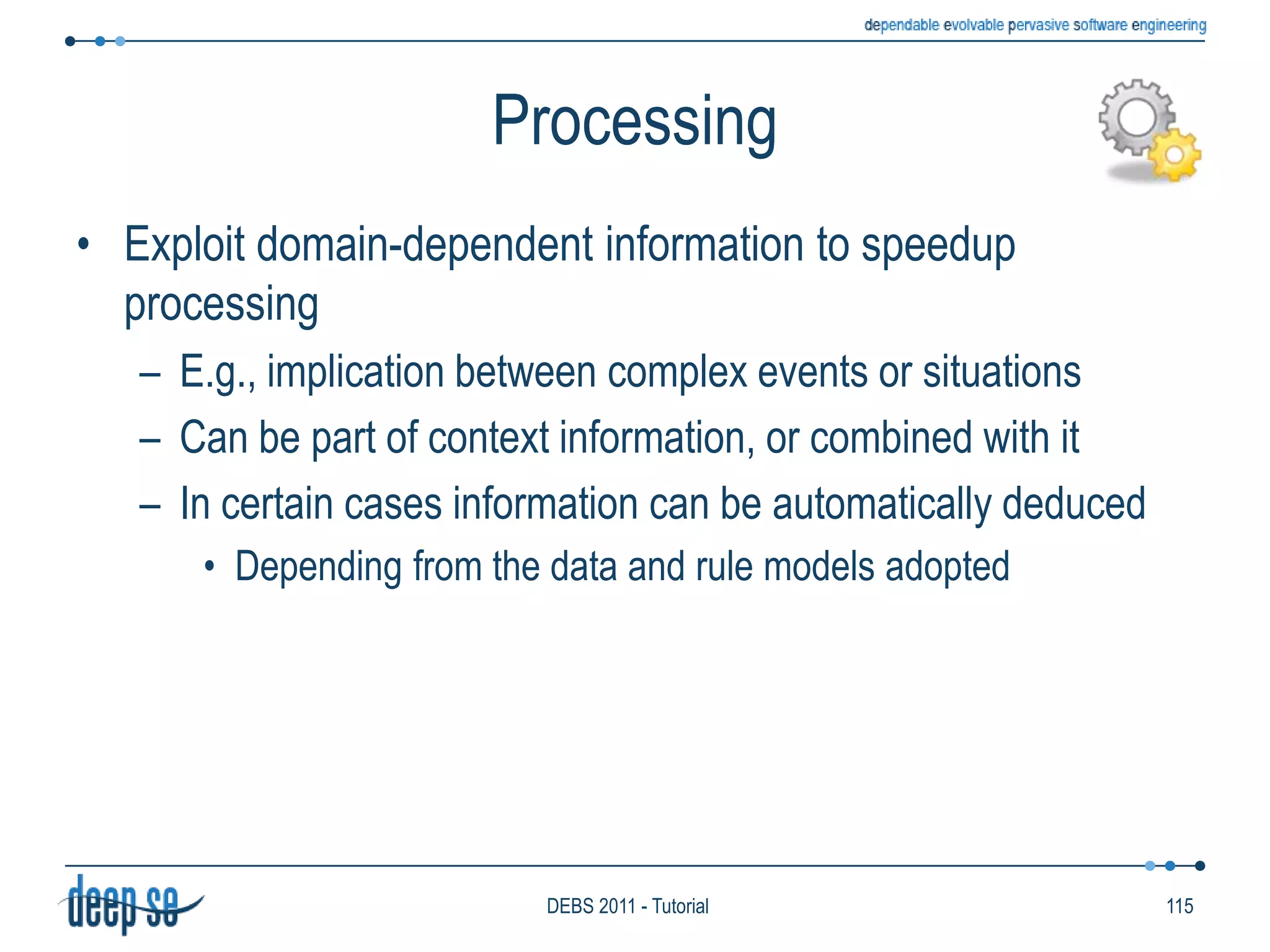
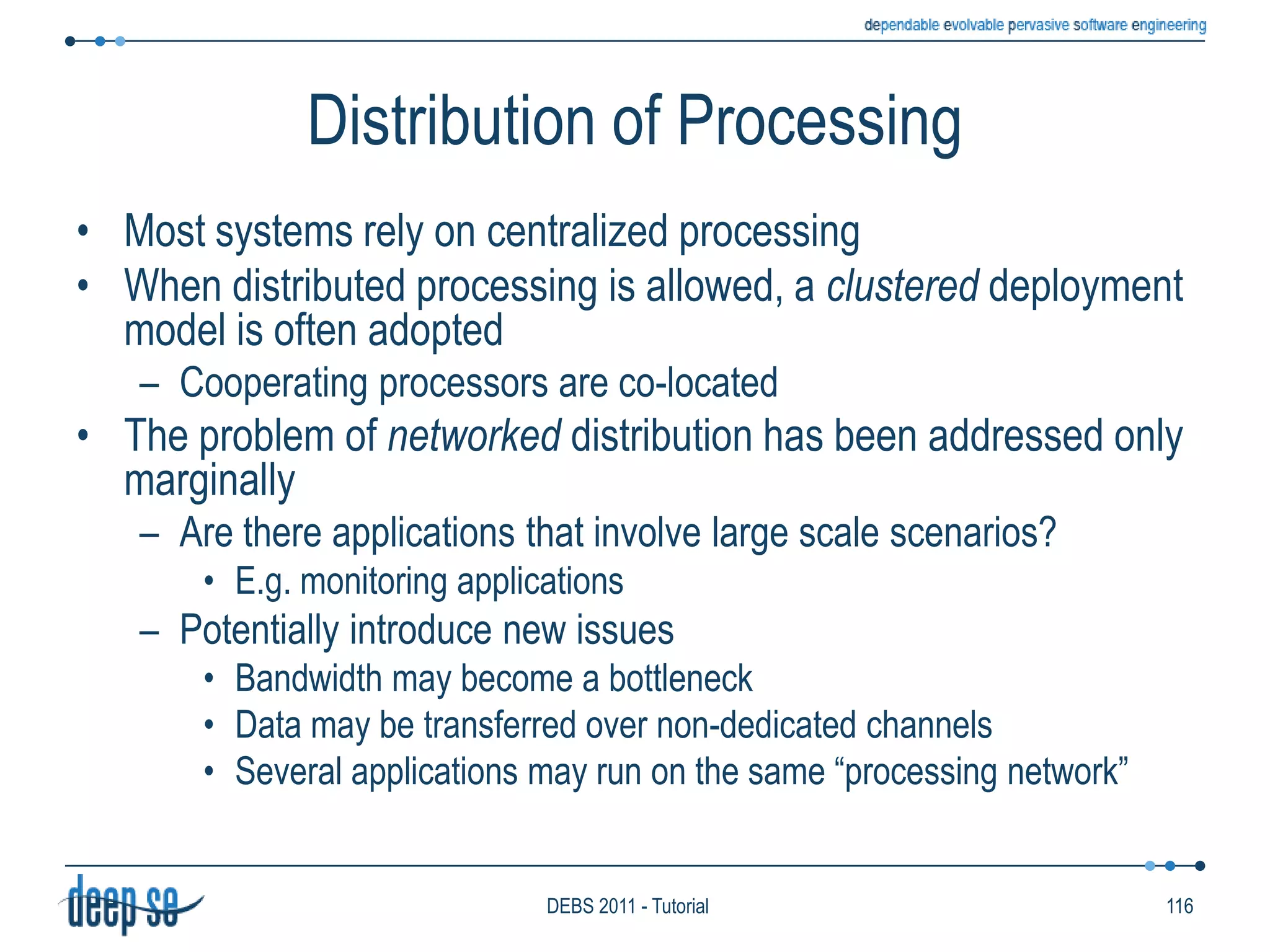
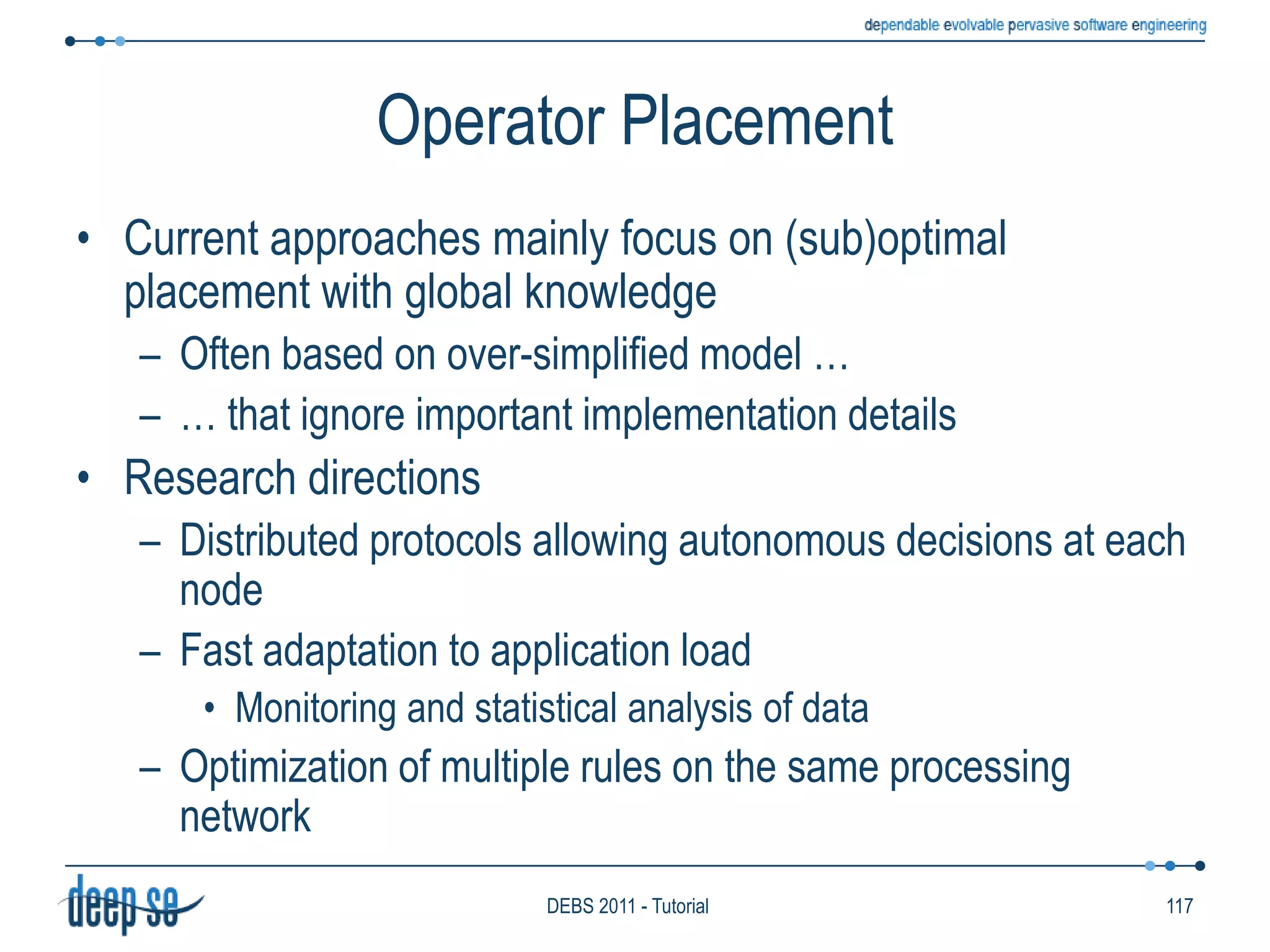
![Language ModelLogic OperatorsConjunctionDisjunctionRepetitionNegationTraditionally, logic operators were not explicitly offered by declarative and imperative languagesHowever, they could be expressed as transformation of input flowsConjunction of A and BSelect IStream (F1.A, F2.B)From F1 [Rows 10], F2 [Rows 20]75DEBS 2011 - Tutorial](https://image.slidesharecdn.com/tutorialdebs2011export-110712090253-phpapp01/75/Processing-Flows-of-Information-DEBS-2011-118-2048.jpg)
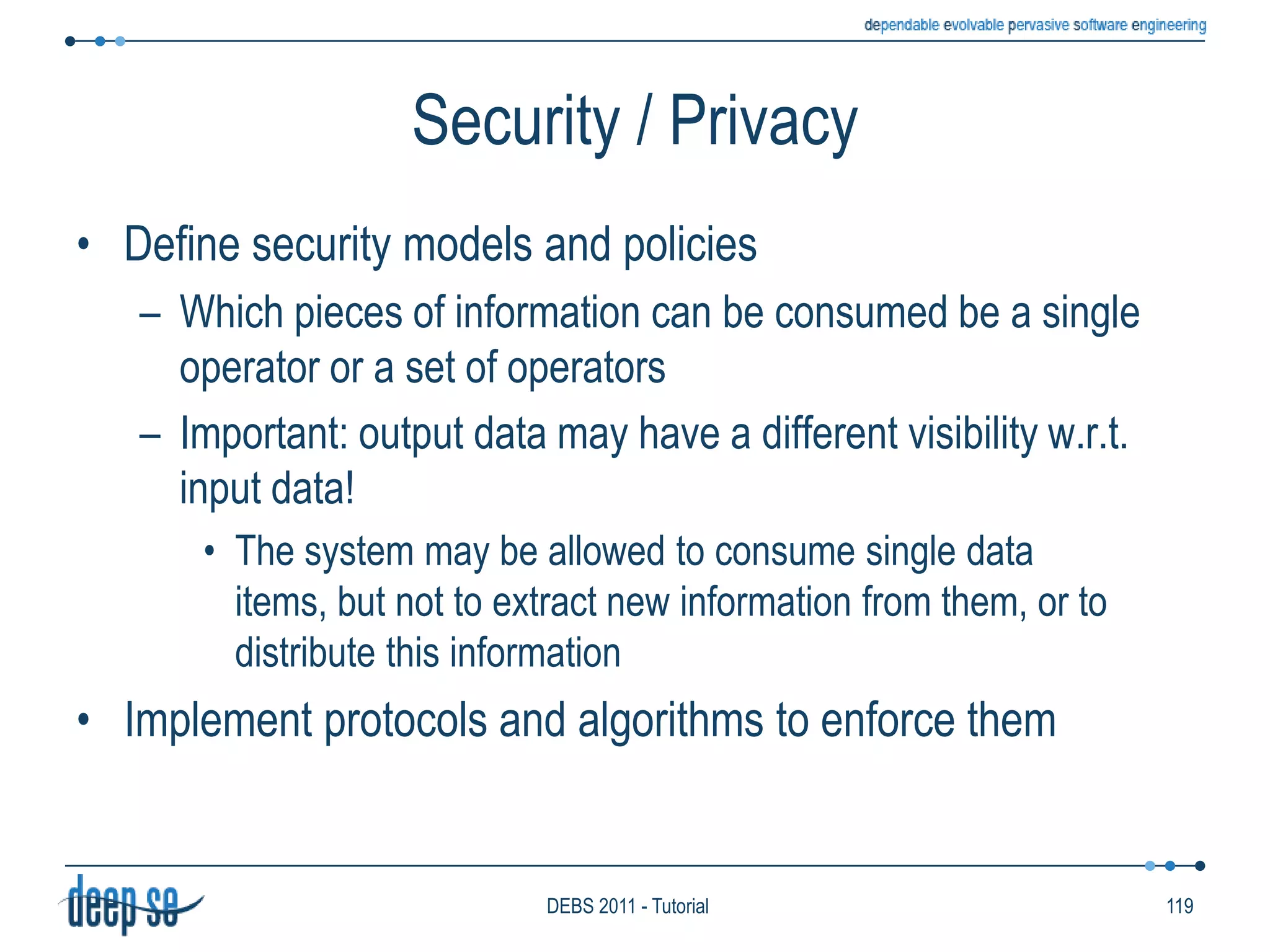
![Language ModelSequencesSimilar to logic operatorsBased on timing relations among itemsTraditionally, transforming languages did not provide sequences explicitlyCould be expressed with an explicit reference to timestampsIf present inside itemsSelect IStream (F1.A, F2.B)From F1 [Rows 10], F2 [Rows 20]Where F1.timestamp <F2.timestampImpose timestamp order77DEBS 2011 - Tutorial](https://image.slidesharecdn.com/tutorialdebs2011export-110712090253-phpapp01/75/Processing-Flows-of-Information-DEBS-2011-120-2048.jpg)
![Language ModelIterationsExpress possibly unbounded sequences of items …… satisfying an iterating conditionImplicitly defines an ordering among itemsIteration (Kleene +)SASE+PATTERN SEQ(Alert a, Shipment+ b[ ])WHERE skip_till_any_match(a, b[ ]) {a.type= ’contaminated’ and b[1].from = a.site and b[i].from = b[i-1].to} WITHIN 3 hours78DEBS 2011 - Tutorial](https://image.slidesharecdn.com/tutorialdebs2011export-110712090253-phpapp01/75/Processing-Flows-of-Information-DEBS-2011-121-2048.jpg)